Risultati: 190

Funzione/Ruolo
Responsabile della linea di ricerca in "Life Science" del MOSE (Molecular Simulation Engineering) di Trieste
Percorso professionale
Dopo la laurea in Chimica presso l'Università di Trieste, nel 1986 ottiene l'abilitazione alla professione. Dal 1986 al 1990 lavora come borsista all'Area Science Park di Trieste e all'Università di Trieste. Dal 1990 al febbraio 2002 è assistente alla docenza presso la Facoltà di Ingegneria dell'Università degli Studi di Trieste. Dal 2002 è professoressa associata di Ingegneria Chimica nella stessa facoltà.
Risultati scientifici
Le attività di ricerca principali sono focalizzate sullo studio, la correlazione e la previsione delle relazioni struttura / proprietà di sistemi molecolari complessi come dendrimeri (macromolecole dotate di una caratteristica struttura ad albero), proteine e trasportatori di farmaci. Nel 2014 Sabrina Pricl, assieme agli altri ricercatori del MOSE (MOlecular Simulation Engineering) di Trieste ed ai colleghi del MD Anderson Cancer Center di Houston, pubblica i risultati dello studio condotto sulla Leucemia Mieloide Cronica (CML). Lo studio ha individuato le dinamiche molecolari responsabili delle resistenze ai farmaci mirati. Si è dimostrato come i pazienti sottoposti alla terapia a lungo termine sviluppassero delle mutazioni di una particolare proteina (BCR-ABL1) che rendevano poco efficace la terapia stessa. Sabrina Pricl e colleghi hanno così fornito informazioni importanti per il trattamento della Leucemia Mieloide Cronica, consentendo non solo la possibilità di formulare una terapia personalizzata per il paziente, ma anche indagando la possibilità di creare principi attivi antagonisti alla mutazione della proteina. Sempre nel 2014, nell'ambito di una ricerca internazionale, Sabrina Pricl e colleghi sviluppano un "nanovettore" capace di trasportare e proteggere piccoli filamenti di RNA che hanno importanti capacità terapeutiche anti tumorali e anti virali. In assenza di questi "nanovettori" i piccoli filamenti di RNA non possono essere utilizzati a scopi terapeutici perché riconosciuti dal sistema immunitario come "esogeni" e quindi distrutti. La scoperta è di assoluta importanza per lo sviluppo di nuove terapie.
Attività editoriali e pubblicazioni
Sabrina Pricl è autrice di numerose pubblicazioni scientifiche nazionali ed internazionali, fra cui:
(2020) Laurini E, Marson D, Aulic S, Fermeglia M, Pricl S. Computational Alanine Scanning and Structural Analysis of the SARS-CoV-2 Spike Protein/Angiotensin-Converting Enzyme 2 Complex. ACS Nano. 2020 Sep 22;14(9):11821-11830. doi: 10.1021/acsnano.0c04674. Epub 2020 Aug 26. PMID: 32833435
(2020) Laurini E, Marson D, Aulic S, Fermeglia A, Pricl S. Computational Mutagenesis at the SARS-CoV-2 Spike Protein/Angiotensin-Converting Enzyme 2 Binding Interface: Comparison with Experimental Evidence. CS Nano. 2021 Mar 18. doi: 10.1021/acsnano.0c10833. Online ahead of print. PMID: 33733740
(2016) Chen C, Posocco P, Liu X, Cheng Q, Laurini E, Zhou J, Liu C, Wang Y, Tang J, Dal Col V, Yu T, Giorgio S, Fermeglia M, Qu F, Liang Z, Rossi JJ, Liu M, Rocchi P, Pricl S, Peng L. Mastering dendrimer self-assembly for efficient siRNA delivery: from conceptual design to in vivo efficient gene silencing. Small, 12:3667-3676.
(2015) Brambilla L, Genini D, Laurini E, Merulla J, Perez L, Fermeglia M, Carbone GM, Pricl S, Catapano CV. Hitting the right spot: Mechanism of action of OPB-31121, a novel and potent inhibitor of the Signal Transducer and Activator of Transcription 3 (STAT3). Molecular Oncology, 9:1194-1206.
(2015) Tuo W, Chao C, Juan L, Cheng L, Posocco P, Xiaoxuan L, Qiang C, Shuaidong H, Zicai L; Fermeglia M, Pricl S, et al. Anticancer drug nanomicelles formed by self-assembling amphiphilic dendrimer to combat cancer drug resistance. Proceedings of The National Academy of Sciences of The United States of America, 112:2978-2983.
(2014) Gibbons DL, Pricl S, Posocco P, Laurini E, Fermeglia M, Sun H, Talpaz M, Donato N. Quintás-Cardama A. Molecular dynamics reveal BCR-ABL1 polymutants as a unique mechanism of resistance to PAN-BCR-ABL1 kinase inhibitor therapy. Proceedings of The National Academy of Sciences of The United States of America, 111:3550-3555.
(2014) Liu X, Zhou J, Yu T, Chen C, Cheng Q, Sengupta K, Huang Y; Li H, Liu C, Wang Y, Posocco P, Wang M, Cui Q, Giorgio S, Fermeglia M, Qu F, Pricl S, et al. Adaptive Amphiphilic Dendrimer-Based Nanoassemblies as Robust and Versatile siRNA Delivery Systems. Angewandte Chemie. International Edition, 53, 11822-11827.
(2012) Posocco P, Gentilini C, Bidoggia S, Pace A, Franchi P, Lucarini M, Fermeglia M, Pricl S, Pasquato L. Self-organization of mixtures of fluorocarbon and hydrocarbon amphiphilic thiolates on the surface of gold nanoparticles. Acs Nano, 6:7243-7253.
(2011) Barnard A, Posocco P, Pricl S, Calderon M, Haag R, Shum WT, Pack WD, Smith DK. Degradable Self-Assembling Dendrons for Gene Delivery - Experimental and Theoretical Insights into the Barriers to Cellular Uptake. Journal Of The American Chemical Society, 133:20288-20300.
(2011) Pierotti M, Tamborini E, Negri T, Pricl S, Pilotti S. Targeted therapy in GIST: in silico modeling for prediction of resistance. Nature Reviews. Clinical Oncology, 8:161-170.
(2009) Negri T, Pavan GM, Virdis E, Greco A, Fermeglia M, Pricl S, Pierotti MA, Pilotti S, Tamborini E. T670X KIT mutations in gastrointestinal stromal tumors: making sense of missense. Journal Of The National Cancer Institute, 101: 194-204.
(2006) Tamborini E, Pricl S, Negri T, Lagonigro MS, Miselli F, Greco A, Gronchi A, Casali P, Ferrone M, Fermeglia M, Pierotti MA, Pilotti S. Functional analyses and Molecular modeling of two c-Kit mutations responsible for Imatinib secondary resistance in GIST patients. Oncogene, 25, 6140-6146.
Riconoscimenti e premi
Sabrina Pricl fa pate delle seguenti società scientifiche: American Chemical Society, The Society of Rheology, Italian Society of Rheology, American Institute of Chemical Engineering, COMSEF (Computational Molecular Science & Engineering Forum), Editorial Board of Carbohydrate Polymers.
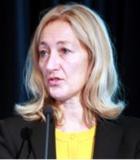
Funzione/Ruolo
Direttrice scientifica presso l'IRCSS Fondazione Salvatore Maugeri di Pavia e Professoressa ordinaria di Cardiologia all'Università di Pavia
Percorso professionale
Silvia Giuliana Priori si laurea in Medicina e Chirurgia nel 1986 all'Università degli Studi di Milano, per poi specializzarsi in Cardiologia presso la stessa università, conseguendo nel 1995 il dottorato di ricerca in Fisiopatologia Cardiaca. Dopo un periodo di training formativo all'estero, nei laboratori di Elettrofisiologia Cellulare del Dipartimento di Cardiologia della Washington University, torna in Italia per svolgere uno stage di ricerca in biologia molecolare presso il Telethon Institute for Genetics and Medicine (TIGEM) a Milano. Dal 2008 al gennaio 2016 è Professor of Medicine e Direttrice del Programma di Genetica alla Leon H. Charney Division of Cardiology dell'Università di New York. Attualmente è professoressa ordinaria di Cardiologia all'Università degli Studi di Pavia. Oltre all'attività accademica, Silvia Giuliana Priori coordina diversi laboratori e reparti: è Direttrice Scientifica Centrale della Fondazione Salvatore Maugeri Clinica del Lavoro e della Riabilitazione IRCCS e Direttrice del Reparto di Cardiologia Riabilitativa e del Servizio di Cardiologia Molecolare presso la stessa Fondazione. Dirige e coordina anche programmi internazionali, come il Programma di Genetica Cardiovascolare Genetica Cardiovascolare presso il Centro National de Investigaciones Cardiovasculares Carlos III (CNIC) di Madrid.
Risultati scientifici
Dal 1997 ha iniziato lo sviluppo di una linea di ricerca autonoma nei laboratori da lei diretti. Fondendo l'attività clinica sulle malattie aritmogene (malattie cardiache che provocano aritmie) alle competenze di biologia molecolare ed elettrofisiologia cellulare, ha creato il primo centro in Italia, e uno dei primi al mondo, di Cardiologia Molecolare dove studia i meccanismi delle aritmie cardiache che provocano morti improvvise in bambini e adolescenti. Ha ottenuto importanti successi nella ricerca sulla sindrome del QT lungo (LQTS, dall'inglese "Long Q-T Syndrome"), una rara anomalia cardiaca caratterizzata da una ritardata ripolarizzazione delle cellule miocardiche ed associata a sincope, e sulla sindrome di Brugada, anch'essa una patologia cardiaca con disturbi dell'attività elettrica del cuore che porta all'arresto cardiaco. L'équipe che dirige è impegnata in un progetto di ampio respiro basato sulla creazione di innovativi modelli animali di malattie genetiche e sullo sviluppo di strategie molecolari avanzate per correggere i difetti genici attraverso l'utilizzo di virus adenoassociati (capaci di integrarsi nel genoma della cellula ospite anche in assenza di proliferazione cellulare) per silenziare i geni malati e per riesprimere quelli sani.
Attività editoriali e pubblicazioni
Autrice di numerose pubblicazioni nazionali ed internazionali tra cui:
(2016) Mosca B, Eckhardt J, Bergamelli L, Priori SG, et al. Role of the JP45-calsequestrin complex on calcium entry in slow twitch skeletal muscles. Journal of Biological Chemistry, 291(28):14555-65.
(2016) Mazzanti A, Priori SG. Brugada Syndrome. Journal of the American College of Cardiology, 68(6):624-625.
(2016) Faragli A, Underwood K, Priori SG, Mazzanti A. Is There a Role for Genetics in the Prevention of Sudden Cardiac Death?.Journal of Cardiovascular Electrophysiology.
(2016) Mosca B, Eckhardt J, Bergamelli L, Priori SG, et al. Role of the JP45-Calsequestrin Complex on Calcium Entry in Slow Twitch Skeletal Muscles.Journal of Biological Chemistry, 291(28).
(2016) Chyou JY Fredman D, Cerrone M, Priori SG, et al. Electrocardiographic features of sudden unexpected death in epilepsy, Epilepsia.
(2016) Curcio A, Mazzanti A, Bloise R, Priori SG, et al. Clinical Presentation and Outcome of Brugada Syndrome Diagnosed With the New 2013 Criteria.Journal of Cardiovascular Electrophysiology, 27(8):937-43.
(2016) Mazzanti A, Maragna R, Faragli A, Priori SG, et al. Gene-Specific Therapy With Mexiletine Reduces Arrhythmic Events in Patients With Long QT Syndrome Type 3.Journal of the American College of Cardiology, 67(9):1053-1058.
(2016) Imberti JF, Underwood K, Mazzanti A, Priori SG. Clinical Challenges in Catecholaminergic Polymorphic Ventricular Tachycardia.Heart, Lung and Circulation, 25(8).
(2015) Priori SG, Blomstorm-Lundqvist C, Mazzanti A, et al. 2015 ESC Guidelines for the Management of Patients With Ventricular Arrhythmias and the Prevention of Sudden Cardiac Death. Revista Española de Cardiología, 69(2):176.
(2015) Ferrantini C, Coppini R, Scellini B, Priori SG, et al. R4496C RyR2 mutation impairs atrial and ventricular contractility.The Journal of General Physiology, 147(1).
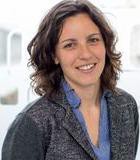
Funzione/Ruolo
Partner associata della McKinsey & Company
Percorso professionale
Dopo la laurea in Ingegneria fisica, prosegue gli studi con un dottorato di ricerca in Fisica presso il Politecnico di Milano, durante il quale passa un anno presso l'Istituto di Scienza dei Materiali (ICMAB-CSIC) dell'Università Autonoma di Barcellona. In seguito si trasferisce in Francia per un post-dottorato. Nel 2014, tornata in Italia, mette a disposizione dell'Istituto Italiano di Tecnologia (IIT) di Genova le capacità e l'esperienza maturate all'estero. Nel 2016 è cou-founder e amministratrice unica della BeDimensional, start-up nata dai laboratori dell'IIT. Nel marzo del 2017 diventa Socia della McKinsey & Company.
Risultati scientifici
Durante il dottorato si occupa di elettronica degli ossidi ed in particolare si focalizza sullo studio dei fenomeni che caratterizzano l'interfaccia tra materiali ferromagnetici e ferroelettrici. L'obiettivo di questi studi è lo sviluppo di nuovi dispositivi di memoria controllati elettricamente basati su giunzioni ad effetto tunnel. All'Istituto Italiano di Tecnologia si dedica inizialmente allo sviluppo di materiali intelligenti per applicazioni industriali. Successivamente, si dedica al progetto di trasferimento tecnologico dei nuovi materiali bidimensionali, in particolare il grafene, nato in IIT divenendo amministratore unico della startup BeDimensional. All'interno dell'Istituto Italiano di Tecnologia, nei Graphene Labs, si studiano i cristalli bidimensionali, la nuova famiglia di materiali "smart" nata a partire dal 2004 con l'isolamento del primo e più noto di questi materiali - il grafene - e che possiedono caratteristiche uniche dal punto di vista meccanico, elettrico, termico e ottico. Il grafene, definito materiale delle meraviglie, è dotato di una resistenza meccanica circa 200 volte superiore all'acciaio e di una straordinaria conducibilità termica. È biocompatibile, biodegradabile, capace di sostenere una densità di corrente elettrica superiore al rame ed è una barriera pressoché impermeabile alla stragrande maggioranza degli elementi chimici, pur mantenendo le caratteristiche di flessibilità e leggerezza. Nei Graphene Labs di IIT è stato sviluppato un processo per la produzione di questi materiali scalabile a livello industriale. I cristalli bidimensionali (tra cui il grafene) possono inoltre essere opportunamente miscelati in matrici plastiche, in fibre di carbonio/vetro o in metalli creando compositi con performance elevate. Queste opportunità aprono un nuovo scenario industriale inimmaginabile fino a qualche anno fa. L'idea è quindi quella di rivoluzionare e agevolare l'industria manifatturiera nazionale e internazionale.
Attività editoriali e pubblicazioni
È autrice di numerose pubblicazioni su riviste scientifiche nazionali ed internazionali, tra cui:
(2016) Pesquera D, Barla A, Wojcik M, Jedryka E, Bondino F, Mangano E, Nappini S, Gutiérrez D, Radaelli G, et al. Strain-Driven Orbital and Magnetic Orders and Phase Separation in Epitaxial Half-Doped Manganite Films for Tunneling Devices.Physical Review Applied 6(3):034004.
(2016) Radaelli G, Heredia-Guerrero JA, et al. Highly Effective Antiadhesive Coatings from pH-Modified Water-Dispersed Perfluorinated Acrylic Copolymers: The Case of Vulcanizing Rubber.Advanced Materials Interfaces 3(13).
(2015) Asa M, Baldrati L, Rinaldi C, Bertoli S, Radaelli G, et al. Electric field control of magnetic properties and electron transport in BaTiO 3 -based multiferroic heterostructures.Journal of Physics Condensed Matter 27(50):504004.
(2015) Bertacco R, Radaelli G, et al. Switching magnetic order at an Fe/BaTiO3 interface on and off: Impact on hybrid magnetic-ferroelectric tunnel junctions.
(2015) Liu F, Fina I, Gutiérrez D, Radaelli G, et al. Selecting Steady and Transient Photocurrent Response in BaTiO3 Films.
(2015) Radaelli G, Gutiérrez D, et al. Large Room-Temperature Electroresistance in Dual-Modulated Ferroelectric Tunnel Barriers.Advanced Materials 27(16).
(2014) Radaelli G, Petti D, Cantoni M, et al, Absence of strain-mediated magnetoelectric coupling at fully epitaxial Fe/BaTiO3 interface (invited). Journal of Applied Physics 115(17).
(2014) Radaelli G, Cantoni M, et al. Two dimensional growth of ultrathin Fe films on BaTiO.Journal of Applied Physics 115(6):063501.
(2014) Gutiérrez D, Radaelli G, et al. Bandwidth-limited control of orbital and magnetic orders in half-doped manganites by epitaxial strain.Physical Review B 89:075107
(2014) Radaelli G, Petti D, et al. Electric Control of Magnetism at the Fe/BaTiO3 Interface.Nature Communications 5:3404.
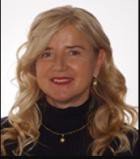
Funzione/Ruolo
Professoressa ordinaria di Analisi Matematica presso la Università degli Studi di Catania
Percorso professionale
Dopo la laurea in Matematica all’Università degli Studi di Catania nel 1988, diventa, nel 1989, Cultrice della Materia di Analisi Matematica presso la Facoltà di Ingegneria dell'Università di Catania. Nel 1990 supera l'esame di ammissione al Dottorato Ricerca in Matematica presso l'Università di Catania. Nel 1992 diventa ricercatrice e nel 2000 Professoressa Associata all'Università di Catania. Nel 2012 le viene conferito il PhD in Mathematics dalla Luleå University (Svezia). Nel 2013 ottiene la abilitazione scientifica nazionale a Professoressa Ordinaria di Analisi Matematica e dal 2017 è Professoressa Ordinaria di Analisi Matematica presso la Università di Catania. E’ Chief researcher del Center of Nonlinear Problems of Mathematical Physics, RUDN University, Mosca (Russia). Fa parte del Collegio dei docenti del Dottorato di Ricerca in Matematica della Università di Catania, e di commissioni internazionali di esame di Dottorato di Ricerca. Ha tenuto corsi di insegnamento per il Dottorato di Ricerca in Italia, Francia, Turchia e Svezia.
E’ responsabile di progetti di ricerca del "Gruppo Nazionale per la Analisi Matematica, la Probabilità e le loro Applicazioni (GNAMPA) - Istituto Nazionale di Alta Matematica", di accordi ERASMUS tra la Università di Catania ed Università straniere in Svezia, Norvegia, Turchia e Francia.
E’ Vice Preside della Facoltà di Scienze Matematiche, Fisiche e Naturali della Università di Catania dal 2009 al 2012, viene eletta, nel 2012, Presidente del Corso di Laurea Magistrale in Scienze per la Tutela dell'Ambiente della Università di Catania, e nel 2013 Direttrice del “Centro Universitario per la Tutela e la Gestione degli Ambienti Naturali e degli Agro-Ecosistemi” (C.U.T.G.A.N.A.).
E’ delegata del Rettore della Università di Catania alla Internazionalizzazione in ambito scientifico.
Referente per Catania della Unione Matematica Italiana, membro della Accademia Gioenia, membro proponente del "Centro di Matematica per la Tecnologia Angelo Marcello Anile" della Università di Catania, membro proponente del "Centro interdipartimentale di ricerca per il community engagement” (CUrE) della Università di Catania. E’ inserita nell’Albo degli esperti valutatori della Agenzia Nazionale della Valutazione della Università e della Ricerca (A.N.V.U.R.).
Risultati scientifici
È attualmente responsabile di un gruppo di ricerca che si interessa dello studio di equazioni alle derivate parziali, lineari e quasi-lineari, e di cambiamenti climatici e loro impatto. Con il suo team ha definito un indice che permette di calcolare con facilità l'effetto territoriale della sensibilità alla desertificazione al fine di superare il limite di protocollo internazionale “MEditerranean Desertification And Land Use European” (MEDALUS), che non prevede una stima della sensibilità alla desertificazione di una zona territoriale (comunale, provinciale, regionale, zona idrografica) attraverso un valore unico. Tale indice ha vantaggi significativi, perché produce efficaci classifiche, con la conseguente possibilità di elaborare i dati comparativi in relazione a diversi periodi di tempo.
Nell’ambito di tale ricerca di matematica applicata alla tutela all’ambiente si studiano, inoltre, gli effetti dell'impatto, sul clima e sull' ambiente, del trasporto di polvere sahariana sul particolato (PM10).
I risultati di tali ricerche sono stati esposti in convegni internazionali in tutti e 5 i continenti, di cui circa 20 da lei organizzati in Europa e USA, facendo parte di comitati scientifici in cui talvolta è stata l'unico membro italiano. Ha tenuto seminari in numerose Università italiane ed estere, essendo, solo a titolo di esempio: ospite di gruppi di ricerca, ospite su invito in occasione di semestri intensivi dell’Istituto Nazionale di Alta Matematica (I.N.D.A.M.), ospite del “Centro di Ricerca Matematica E. De Giorgi” della "Scuola Normale Superiore" di Pisa, del "Newton Institute" di Cambridge, del Department of Mathematics della “Research Melbourne Institute of Technology” di Melbourne, della “Tokyo University of Science” di Tokyo, del “Florida Institute of Technology” di Miami, del Department of Mathematics, della“Harvard University” di Boston, del "Mittag-Leffler" Institute della Accademia reale svedese delle Scienze di Stoccolma.
Attività editoriali e pubblicazioni
È Editor in Chief unico della rivista internazionale "Journal of Mathematics Research", pubblicata dal Canadian Center of Science and Education, Editor del volume "Journal of Inequalities and Applications", ed. Springer. 2015, membro di Editorial Board di numerose riviste internazionali pubblicate su Scopus e Web of Science con impact factor.
È autrice di oltre 90 pubblicazioni scientifiche, a nome singolo e in collaborazione con circa 30 coautori, di cui un terzo italiani e gli altri europei ed extraeuropei. Ad un solo nome sono pubblicate note scientifiche su riviste che figurano tra le prime 10 del Journal Citation Reports e pubblicazioni che, in entrambi i database Scopus e Web of Science, hanno più di 150 citazioni.
Solo a titolo di esempio, alcune tra le sue pubblicazioni scientifiche:
(2021) Hamdy M. Ahmed, Reda A. Elbarkouky, Othman A. M. Omar, and Maria Alessandra Ragusa. Models for COVID-19 Daily Confirmed Cases in Different Countries. Mathematics, 9:659.
(2018) Guliyev V, Omarova M, Ragusa MA, Scapellato A. Commutators and Generalized Local Morrey Spaces. Journal of Mathematical Analysis and Applications, 457 (2): 1388-1402.
(2017) Cuspilici A, Monforte P, Ragusa MA. Study of Saharan dust influence on PM10 measures in Sicily from 2013 to 2015. Ecological Indicatiors, 76: 297-303.
(2017) Deringoz F, Guliyev V, Ragusa MA. Intrinsic Square Functions on Vanishing Generalized Orlicz-Morrey Spaces. Set-Valued and Variational Analysis, 25: 807–828.
(2017) Ragusa MA, Scapellato A. Mixed Morrey spaces and their applications to partial differential equations. Nonlinear Analysis-Theory Methods & Applications, 151: 51-65.
(2017) Duro A, Piccione V, Ragusa MA, Rapicavoli V, Veneziano V. Enviromentally Sensitive Patch Index of desertification risk applied to the main habitats of Sicily. Book Series: American Institute of Physics, 1863, Article Number: UNSP 510005.
(2014) Benboenou S, Ragusa MA, Terberche M. Remarks on Leray's self-similar solutions to the 3D magnetohydrodynamic equations. Mathematical Methods in the Applied Sciences, 37 (17): 2615-2618.
(2013) Ragusa MA, Tachikawa A, Takabayashi H. Partial regularity of p(x)-harmonic maps. Transactions of the American Mathematical Society, 365 (6):3329-3353.
(2012) Persson LE, Ragusa MA, Samko N, Wall P. Commutators of Hardy operators in vanishing Morrey spaces. Book Series: American Institute of Physics, 1863:859-866.
(2008) ) Polidoro S, Ragusa MA. Harnack inequality for hypoelliptic ultraparabolic equations with a singular lower order term. Revista Matematica Iberoamericana Vol. 24, 1011-1046.
(2002) Ragusa MA. Local holder regularity for solutions of elliptic system. Duke Mathematical Journal, 113 (2):385-397.
(2000) D. Palagachev, M.A. Ragusa, L. Softova. Regular Oblique derivatives problem in Morrey Spaces. El. Journal of Differential Equations (39).

Funzione/Ruolo
Professoressa ordinaria di Bioingegneria al Politecnico di Milano
Percorso professionale
Dopo la laurea in Ingegneria Meccanica con indirizzo in Bioingegneria, presso il Politecnico di Milano, nel 2000 consegue il dottorato di ricerca in Bioingegneria presso lo stesso Ateneo, dove prosegue la sua carriera fino a oggi. Nel 2003 fonda l'unità di ricerca in Bioingegneria dislocata presso l'IRCCS Istituto Ortopedico Galeazzi di Milano e la dirige fino al 2008. Nel 2010 fonda il laboratorio di Meccanobiologia del Dipartimento di Chimica, materiali e ingegneria chimica "Giulio Natta", dove dal 2018 è professoressa ordinaria di Bioingegneria. Dal 2013 al 2015 è vice-coordinatrice del programma interdipartimentale di dottorato in Bioingegneria. Nel 2014 fonda e dirige il LuCld lab, laboratorio per l'imaging su cellule viventi. Dal 2015 è la referente del Politecnico di Milano per l'accordo quadro con l'istituto di ricerca farmacologica dell'I.R.C.C.S. Istituto di Ricerche Farmacologiche Mario Negri di Milano.
Risultati scientifici
La sua attività scientifica si concentra sulla bioingegneria, sulla comprensione e il conseguente controllo di meccanismi biologici mediante dispositivi ingegneristici per la coltura di cellule al di fuori dell'organismo umano. Un importante risultato è stato quello di riuscire a orientare la produzione di organoidi (versioni semplificate e miniaturizzate di un organo prodotto in vitro), per esempio tessuto cerebrale o metastasi tumorali ossee, utilizzando dispositivi miniaturizzati detti "bioreattori millifluidici". Manuela Raimondi ha progettato tali sistemi per produrre e mantenere in coltura tessuto vivente da impiegare per la sperimentazione di nuovi farmaci, per esempio chemioterapici e anti-infiammatori, in modo molto più realistico della coltura cellulare convenzionale, riducendo l'impiego di animali da esperimento. Nei suoi studi si è focalizzata sulle cellule "mesenchimali", ovvero cellule staminali del tessuto osseo e cartilagineo, che forniscono la naturale capacità rigenerativa e riparativa ai tessuti del corpo umano. Un importante risultato è stato quello di riuscire a imitare gli stessi legami che mantengono aggregate le cellule nelle nicchie naturali in cui esse abitualmente risiedono nel corpo umano, progettando strutture artificiali di dimensione nanometrica, dette "nicchie ingegnerizzate", alle quali far aderire le cellule in coltura. Questa tecnica di coltura non convenzionale consente di mantenere le proprietà delle cellule staminali in coltura prolungata, senza necessità di somministrare molecole tossiche, accelerando così il trasferimento di queste cellule verso un loro uso clinico come farmaci naturali, in sostituzione dei farmaci anti-infiammatori convenzionali. Lo stesso metodo viene utilizzato per le rigenerazione di organi in vitro.
Attività editoriali e pubblicazioni
È autrice di circa 200 pubblicazioni scientifiche, tra cui:
[2018] Marturano-Kruik A, A.Villasante, K.Yaeger, S. Ambati, A. Chramiec, M.T. Raimondi, G. Vunjak-Novakovic. Biomechanical regulation of drug sensitivity in an engineered model of human tumor. Biomaterials. 2018 Jan;150:150-161. doi: 10.1016/j.biomaterials.2017.10.020
[2018] Marturano-Kruik A, Nava MM, Yaeger K, Chramiec A, Hao L, Robinson ST, Guo XE, Raimondi MT, Vunjak-Novakovic G. Human bone perivascular niche-on-a-chip for studyingmetastatic colonization. Proc Natl Acad Sci U S A. 2018 Feb 6;115(6):1256-1261. doi:10.1073/pnas.1714282115.
[2018] Garcia A, Jacchetti E, Marotta R, Tunesi M, Rodriguez Matas JF, Raimondi MT. The Effect of Cell Morphology on the Permeability of the Nuclear Envelope to Diffusive Factors. Frontiers in Physiology. Published online July 13, 2018. https://doi.org/10.3389/fphys.2018.00925
[2017] Ricci D, Nava MM, Zandrini T, Cerullo G, Raimondi MT, Osellame R. Scaling-Up Techniques for the Nanofabrication of Cell Culture Substrates via Two-Photo Polymerization for Industrial-Scale Expansion of Stem Cells. Materials, 10(1):66. doi: 10.3390/ma10010066
[2016] Tunesi M, Fusco F, Fiordaliso F, Corbelli A, Biella G, Raimondi MT. Optimization of a 3D dynamic culturing system for in vitro modeling of Frontotemporal Neurodegeneration-relevant pathologic features. Frontiers in aging neuroscience. Frontiers in Aging Neuroscience, 8:146. doi: 10.3389/fnagi.2016.00146
[2016] Garcia B, Rodriguez Matas JF, Raimondi MT. Modeling of the mechano-chemical behavior of the nuclear pore complex: current research and perspectives. Integrative Biology, 8(10): 1011-1021 doi: 10.1039/c6ib00153j
[2016] Nava MM, Di Maggio N, Zandrini T, Cerullo G, Osellame R, Martin I, Raimondi MT. Synthetic niche substrates engineered via two-photon laser polymerization for the expansion of human mesenchymal stromal cells. Journal of Tissue Engineering and Regenerative Medicine, doi: 10.1002/term.2187
[2016] Nava MM, Piuma A, Figliuzzi M, Cattaneo I, Bonandrini B, Zandrini T, Cerullo G, Osellame R, Remuzzi A, Raimondi MT. Two-photon polymerized "nichoid" substrates maintain function of pluripotent stem cells when expanded under feeder-free conditions. Stem Cell Research and Therapy, 7:132. doi: 10.1186/s13287-016-0387-z
[2014] Raimondi MT, Nava MM, Eaton SM, Bernasconi S, Vishnubhatla KC, Cerullo G, Osellame R. Optimization of femtosecond laser polymerized structural niches to control mesenchymal stromal cell fate in culture. Micromachines, 5, 341-358; DOI: 10.3390/mi5020341
[2013] Raimondi MT, Eaton SM, Laganà M, Aprile V, Nava MM, Cerullo G, Osellame R. Three-dimensional structural niches engineered via two-photon laser polymerization promote stem cell homing. Acta Biomaterialia, 9(1):4579-84. DOI: 10.1016/j.actbio.2012.08.022
[2012] Laganà M, Raimondi MT. A miniaturized, optically accessible bioreactor for systematic 3D tissue engineering research. Biomedical Microdevices. 14(1):225-234, ISSN 1387-2176, DOI:10.1007/s10544-011-9600-0
Riconoscimenti e premi
Manuela Raimondi ha ricevuto numerosi premi e riconoscimenti, fra cui tre grants ERC:
2000-2001: Young Investigator Award del Politecnico di Milano.
2005-2006 e 2006-2007: Research Award della Fondazione Cariplo.
2006 e 2007: Rocca Award del MIT-Italy program.
2010-2011: Research Award del Ministero dell'Economia e dello Sviluppo Economico.
2011-2012: Young Researcher Award del Politecnico di Milano.
2015-2020: ERC-CoG-2014 Grant award in stem cell mechanobiology, dell'European Research Council, project NICHOID.
2017-2018: ERC-PoC-2016 Grant award in stem cell bioengineering, assegnato dall'European research Council, Brussels, Belgium - project NICHOIDS.
2019-2020 ERC-PoC-2018 Grant award in microfluidic bioengineering, dell’European Research Council, project MOAB.

Area STEM: Chimica
Competenze: chimica verde, utilizzo materie prime rinnovabili per produzione nuovi combustibili, bioprodotti e biomateriali, valorizzazione scarti agro-industriali
Parole chiave: antiossidanti, bioeconomia, biolubrificanti, biomateriali, biotensioattivi, economia circolare, oli vegetali
Regione: Lombardia
Funzione/Ruolo
Dirigente di ricerca CNR (Consiglio Nazionale delle Ricerche).
Percorso professionale
Dopo la laurea in Chimica presso l’Università di Milano svolge attività di ricerca presso l’Università di Bari dove consegue il Dottorato di Ricerca nel 1988 ed avvia la sua carriera come ricercatrice CNR. Nel 1996 si trasferisce a Milano, dove nel 2020 diventa Dirigente di ricerca presso l'Istituto di Scienze e Tecnologie Chimiche 'Giulio Natta' (SCITEC).
Risultati scientifici
Gran parte della sua attività scientifica è stata dedicata all’utilizzo della catalisi eterogenea in processi di sintesi organica (idrogenazione catalitica selettiva nella sintesi di fine chemicals e di specialità, deidrogenazione catalitica selettiva, epossidazione catalitica eterogenea) e trasformazioni catalitiche selettive di materie prime da fonte rinnovabile (oli vegetali, terpeni, zuccheri, cellulosa, valorizzazione scarti agro-industria, economia circolare).
E’ stata responsabile di diversi contratti di ricerca con industrie italiane e straniere. Ha coordinato progetti di interesse per lo svilupo dell’economia circolare quali VeLiCA, da antiche colture materiali e prodotti per il futuro (Regione Lombardia, 2011-2013); RiceRes From waste to resource: an integrated valorization of the rice productive chain residues (Fondazione Cariplo, 2015-2017); Circo: Multi valorization of silverskin, a residue of the coffee roasting industry (Fondazione Cariplo e InnovHub, 2018-2021).
Attività editoriali e pubblicazioni
[2021] Cavuoto D, Ravasio N, Scotti N, Gervasini A, Campisi S, Marelli M, Cappelletti G, Zaccheria F. A green solvent diverts the hydrogenation of γ–valerolactone to 1,4 pentandiol over Cu/SiO2. Molecular Catalysis, 516: 111936
[2021] Overturf E, Pezzutto S, Boschiero M, Ravasio N, Monegato A. The CirCo (Circular Coffee) Project: A Case Study on Valorization of Coffee Silverskin in the Context of Circular Economy in Italy. Sustainability, 13: 9069
[2021] Bellini M, Zaccheria F, Bianchi S, Ravasio N. Vegetable oils as Triple Bottom Line compliant lubricants. Tribology International, 161: 107103
[2021] Nasti R, Galeazzi A, Marzorati S, Zaccheria F, Ravasio N, Bozzano G.L., Manenti F, Verotta L. Valorisation of Coffee Roasting By‑Products: Recovery of Silverskin Fat By Supercritical CO2 Extraction. Waste and Biomass Valorization, https://doi.org/10.1007/s12649-021-01435-9
[2020] Cavuoto D, Zaccheria F, Ravasio N. Some Critical Insights into the Synthesis and Applications of Hydrophobic Solid Catalysts. Catalysts 10: 1337
[2020] Zaccheria F, Bossola F, Scotti N, Evangelisti C, Dalsanto V, Ravasio N. On demand production of ethers or alcohols from furfural and HMF by selecting the composition of a Zr/Si catalyst. Catalysis Science and Technology, 10: 7502–7511
[2020] Pappalardo V.M, Cavuoto D, Sangiorgio S, Speranza G, Cappelletti G, Ravasio N, Zaccheria F. Clays as Effective Solid Acid Catalysts for the Preparation of Sugar Esters with Surfactant Properties. ChemistrySelect 5: 8009–8014
[2020] Overturf E, Ravasio N, Zaccheria F, Tonin C, Patrucco A, Bertini F, Canetti M, Avramidou K, Speranza G, Bavaro T, Ubiali D. Towards a more sustainable circular bioeconomy. Innovative approaches to rice residue valorization: The RiceRes case study. Bioresource Technology Reports, 11: 100427
[2020] Cavuoto D, Zaccheria F, Marelli M, Evangelisti C, Piccolo O, Ravasio N. The Role of Support Hydrophobicity in the Selective Hydrogenation of Enones and Unsaturated Sulfones over Cu/SiO2 Catalysts. Catalysts 10: 515
[2020] Scotti N, Bossola F, Zaccheria F, Ravasio N. Copper-zirconia catalysts: Powerful multifunctional catalytic tools to approach sustainable processes. Catalysts 10: 168
[2020] Scotti N, Ravasio N, Zaccheria F, Irimescu A, Merola S.S. Green pathway to a new fuel extender: continuous flow catalytic synthesis of butanol/butyl butyrate mixtures. RSC Advances, 10: 3130 – 3136
[2017] Zaccheria F, Mariani M, Scotti N, Psaro R, Ravasio N. Catalytic upgrading of lactose: a rest raw material of the dairy industry. Green Chemistry 19: 1904 - 1910
Riconoscimenti e premi
Nel 2021 è insignita della Medaglia Piero Pino “Per contributi di rilievo scientifico, innovativo e applicativo, nel settore della catalisi eterogenea con particolare attenzione alla sostituzione dei metalli nobili, nella sintesi in chimica fine e alle trasformazioni selettive di materie prime rinnovabili” dalla Divisione di Chimica industriale della Società Chimica Italiana.

Area STEM: Chimica
Competenze: alternative alle sperimentazioni animali, autorizzazioni alimentari, componenti cosmetici, cromatografia, dossier sostanze chimiche, validazione nuovi metodi
Parole chiave: cosmetici, mangimi, metodi tossicologici ufficiali, regolamento reach, sperimentazioni animali, test in vitro, test su animali
Regione: Lombardia
Funzione/Ruolo
Scientific Officer presso CAAT-Europe (Università di Konstanz in Germania, Project Manager presso REACH Mastery)
Percorso professionale
Dopo la laurea in Chimica a indirizzo bio-organico all'Università degli Studi di Milano nel 1989, trascorre 10 mesi in Germania come chemist trainee presso la Hewlett Packard (ora Agilent Technology). Da giugno dello stesso anno è Applicant specialist in Cromatografia (tecnica che permette il riconoscimento quantitativo e qualitativo dei diversi componenti presenti in una miscela). Ricopre nell'arco di 15 anni vari ruoli organizzativi e dirigenziali in aziende e istituzioni internazionali, per arrivare nel 2005 a un incarico triennale all'ECVAM (Centro per le convalide dei metodi alternativi della Commissione Europea) dove partecipa a due gruppi di lavoro: sviluppo del RIP 3.3 (REACH Implementation Project, Technical Guidelines to Industries) e, come coordinatrice, al progetto europeo sullo sviluppo di metodi integrati e alternativi ai test sugli animali. Dal 2009 è Scientific Officer per il progetto di collaborazione con CAAT - Europe (Centro per le Alternative ai test sugli Animali) presso l'Università di Konstanz in Germania e lavora in stretta collaborazione con CAAT presso la John Hopkins University di Baltimora (USA). Da 7 anni Maria Costanza Rovida è anche Project Manager Presso REACH Mastery, società di consulenza per gli adempimenti del regolamento Reach, adottato dalla Ue per migliorare la protezione della salute dell'uomo e dell'ambiente dai rischi delle sostanze chimiche.
Risultati scientifici
Maria Costanza Rovida è da anni impegnata nell'individuare strategie che possano ridurre o evitare l'utilizzo di animali vertebrati nei test di laboratorio. Come Project Manager REACH Mastery e in quanto esperta nella costruzione di testing strategies, si occupa anche di compilare e registrare dossier per valutare le sostanze chimiche, per le autorizzazioni in ambito alimentare o a uso zootecnico, e per definire linee guida per gli ingredienti dei cosmetici, in conformità a regolamenti UE o extra UE. Maria Costanza Rovida è anche docente presso l'Associazione Ambiente & Lavoro relativamente agli aspetti della sicurezza previsti dai regolamenti REACH e CLP (che garantiscono che i rischi presentati dalle sostanze chimiche siano chiaramente comunicati ai lavoratori e ai consumatori nell'Unione europea attraverso la classificazione e l'etichettatura delle sostanze chimiche). Il suo impegno costante resta quello di organizzare incontri e divulgare attraverso numerosi articoli scientifici lo sviluppo e la promozione di test tossicologici scientificamente avanzati che non prevedano l'utilizzo di animali in laboratorio, e di diffondere la cultura della sicurezza attenendosi alle linee guida della farmacopea europea, della ICH (International Conference on Harmonisation), della FDA (Food and Drug Administration) e del Centro per le convalide dei metodi alternativi della Commissione Europea.
Attività editoriali e pubblicazioni
È autrice di numerose pubblicazioni scientifiche internazionali, fra cui:
(2015) Rovida C, Asakura S, Daneshian M, Hofman-Huether H, Leist M, Meunier L, Reif D, Rossi A, Schmutz M, Valentin JP, Zurlo J, Hartung T. Toxicity testing in the 21st century beyond environmental chemicals. ALTEX Alternatives to Animal Experimentation, 32(3):171-81.
(2015) Rovida C, Alépée N, Api AM, Basketter DA, Bois FY, Caloni F, Corsini E, Daneshian M, Eskes C, Ezendam J, Fuchs H, Hayden P, Hegele-Hartung C, Hoffmann S, Hubesch B, Jacobs MN, Jaworska J, Kleensang A, Kleinstreuer N, Lalko J, Landsiedel R, Lebreux F, Luechtefeld T, Locatelli M, Mehling A, Natsch A, Pitchford JW, Prater D, Prieto P, Schepky A, Schuurmann G, Smirnova L, Toole C, van Vliet E, Weisensee D, Hartung T. Integrated Testing Strategies (ITS) for safety assessment. ALTEX Alternatives to Animal Experimentation, 32(1): 25-40.
(2014) Rovida C, Vivier M, Garthoff B, Hescheler J. ESNATS Conference — The Use of Human Embryonic Stem Cells for Novel Toxicity Testing Approaches. ATLA Alternatives to Laboratory Animals, 42, 97-113.
(2014) Knight J, Rovida, C. Safety Evaluations under the Proposed US Safe Cosmetics and Personal Care Products Act of 2013: Animal Use and Cost Estimates. ALTEX Alternatives to Animal Experimentation, 31(2):177-208.
(2013) Rovida C, De Angelis I, Lorenzetti S. Alternative in vitro methods to characterize the role of Endocrine Active Substances (EASs) in hormone-targeted tissues. ALTEX Alternatives to Animal Experimentation, 30(2):253-5.
(2013) Rovida C, Martin SF, Vivier M, Weltzien HU, Roggen E. Advanced tests for skin and respiratory sensitization assessment. Summary Report on the Sens-it-iv End Congress in Brussels, November 23-25, 2011. ALTEX Alternatives to Animal Experimentation, 30(2), 231-252.
(2011) Rovida C, Longo F, Rabbit RR. How are Reproductive Toxicity and Developmental Toxicity Addressed in REACH Dossiers? ALTEX Alternatives to Animal Experimentation, 28(3), 111-132.
(2011) Rovida C. Local Lymph Node Assay: How testing laboratories apply OECD TG 429 for REACH purposes. ALTEX Alternatives to Animal Experimentation, 28(2), 117-129.
(2010) Rovida C. Food for Thought... Why No New In Vitro Tests Will Be Done for REACH by Registrants. ALTEX, Alternatives to Animal Experimentation, 27(3), 175-183.
(2009) Hartung T, Rovida C. Opinion. Chemical regulators have overreached. Nature, 460, 1080-1.
Riconoscimenti e premi
Maria Costanza Rovida è Consigliera presso l'Ordine interprovinciale dei chimici della Lombardia e Accredited Stakeholder presso l'Agenzia Europea per le Sostanze Chimiche (ECHA). Fa parte del Gruppo di esperti per il Centro di Referenza Nazionale per i Metodi Alternativi, Benessere e Cura degli Animali da Laboratorio (Istituto Zooprofilattico di Brescia), di ESTAF (ECVAM Stakeholder Forum), IPAM (Italian Platform for Alternative Methods) e del board di ECOPA (Eropean Platform for Alternative Methods). Fa parte inoltre di diverse società scientifiche, fra cui la EUSAAT (European Society for Alternatives to Animal Testing), la ESTIV (European Society of in vitro testing) e l'AFI (Associazione Farmaceutici e Industria). È nell'elenco dei consulenti STOA (European Parliament Science and Technology Options Assessment).

Funzione/Ruolo
Professoressa ordinaria di Neuroscienze Cognitive presso la SISSA (Scuola Internazionale Superiore di Studi Avanzati) di Trieste
Percorso professionale
Dopo aver conseguito la laurea in Filosofia (indirizzo Psicologico) presso l'Università di Bologna nel 1990, prosegue la sua formazione nella stessa università e nel 1995 consegue il dottorato di ricerca in Psicologia. Durante il dottorato collabora per la sua ricerca con il professor Glyn Humphreys, della School of Psychology della Birmingham University, in Gran Bretagna. Tale collaborazione sfocia nel conseguimento della specializzazione in Neuropsicologia Cognitiva. Nel 1995 entra a far parte del settore di neuroscienze cognitive, presso la SISSA (Scuola Internazionale Superiore di Studi Avanzati) di Trieste, prima come research fellow, successivamente come borsista post-dottorato, e infine come assegnista. Sempre presso la SISSA, nel 1999 è ricercatrice, e nel 2003 diventa professoressa associata. Nel dicembre del 2011 prende servizio come professoressa straordinaria, e dal dicembre del 2014 è professoressa ordinaria di Neuroscienze Cognitive. Nel 2017 è nominata consigliera dell'ANVUR, di cui è vice-presidente per il biennio 2018-2019.
Risultati scientifici
Il principale interesse di ricerca di Raffaella Rumiati è lo studio delle basi neurali delle funzioni cognitive umane. Per circa 25 anni si è dedicata a caratterizzare la relazione tra sistema motorio e cognizione. Avvalendosi di diversi metodi di neuropsicologia (TMS e fMRI), ha dimostrato come il sistema motorio è sì coinvolto in funzioni non tipicamente motorie (per esempio, immaginazione, riconoscimento di azioni e oggetti, e comprensione del linguaggio), ma che tale coinvolgimento non è automatico bensì avviene solo in determinate circostanze. La scoperta è che l'immaginazione motoria agisce come una "colla" fra queste due aree apparentemente molto diverse. Più recentemente, Rumiati ha affrontato nuove linee di ricerca. La prima riguarda studio del decision making economico, perseguita ricorrendo a esperimenti sia comportamentali, sia di neuroimmagine. La seconda riguarda la rappresentazione neurale delle conoscenze sociali, indagata prevalentemente esaminando le prestazioni a prove lessicali-semantiche di pazienti con lesioni cerebrali di diversa eziologia. La terza linea di ricerca è volta a identificare i fattori che influenzano il riconoscimento dei cibi, le scelte e preferenze alimentari. Questi argomenti vengono esplorati sia in individui neurologicamente intatti, sia in pazienti affetti da malattie neurodegenerative (come demenze e morbo di Parkinson), avvalendosi anche delle tecniche di neuroimmagine. Infine, con la collaborazione di Medialab, il laboratorio di Raffaella Rumiati ha realizzato FoodIE, un'applicazione che permette di scoprire le proprie reali preferenze alimentari, e che è stata disponile al pubblico di CasaCorriere all'Expo di Milano per vari mesi.
Attività editoriali e pubblicazioni
Raffella Rumiati è autrice di numerose pubblicazioni, tra cui:
(2016) Rumiati R, Foroni F, et al. Lexical-semantic deficits in processing food and non-food items. Brain and Cognition, S0278-2626(16)30197-X.
(2016) Turella L, Rumiati R, Lingnau A. Hierarchical Organization of Action Encoding Within The Human Brain. Journal of Vision, 16(12):24.
(2016) Aiello M, Silani V, Rumiati R. You stole my food! Eating alterations in frontotemporal dementia. Neurocase, 22(4).
(2016) Rumiati R, Foroni F. We are what we eat: How food is represented in our mind/brain. Psychonomic Bulletin & Review, 23(4):1043-54.
(2016) Turella L, Tucciarelli R, […] Rumiati R. Beta band modulations underlie action . NeuroImage, 136:197-207.
(2016) Foroni F, Rumiati R, et al. A bait we cannot avoid: Food-induced motor distractibility. Brain and Cognition, doi:10.1016/j.bandc.2015.12.003.
(2016) Ambron E, Rumiati R, Foroni F. Do emotions or gender drive our actions? A study of motor distractibility. Cognitive Neuroscience, 7:1-4.
(2015) Rumiati R. Cognitive neuroscience goes social. Cortex, 70:1-4.
(2015) Piretti L, Carnaghi A, Campanella F, Rumiati R. The neural network associated with lexical- semantic knowledge about social groups. Cortex, 70, Special issue: Neuro-cognitive mechanisms of social interaction, 155-168.
(2015) Mengotti P, Ripamonti E, Pesavento V, Rumiati R. Anatomical and spatial matching in imitation: Evidence from left and right brain-damaged patients. Neuropsychologia, 79(Pt B):256-71.
È anche autrice del volume Donne e Uomini (il Mulino, 2010).
Riconoscimenti e premi
Nel 2003 la Alexander von Humboldt-Stiftung le conferisce il Friedrich Wilhelm Bessel Research Award. Il premio viene attribuito a scienziati e studiosi che si sono affermati a livello internazionale nel proprio campo. Nel 2006 riceve il "Women in Cognitive Science Mentorship Award" che viene di solito attribuito a scienziate e scienziati che abbiano dimostrato di aver effettivamente seguito e promosso la formazione scientifica e accademica di studentesse e giovani ricercatrici. Nel 2013 vince il premio "Pulcheria. Donne, talenti, professioni".
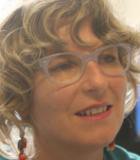
Funzione/Ruolo
Professoressa associata di Biologia molecolare presso l'Università La Sapienza di Roma
Percorso professionale
Dopo la laurea in Scienze Biologiche all'Università La Sapienza di Roma nel 1998, consegue un dottorato di ricerca in Biologia Molecolare presso la stessa università. Si trasferisce poi in Olanda per un post doc all'Università di Utrecht, nel dipartimento di Genetica e Biologia cellulare dal 1998 al 2003. Lì si occupa dei meccanismi molecolari degli ormoni vegetali come l'auxina. Questi studi rivelano il ruolo cruciale di questo ormone nel regolare processi fondamentali come la divisione, la polarità e il fato di una cellula. Dal 2003 al 2006 rientra in Italia come professoressa a contratto presso la Facoltà di Scienze Matematiche, Fisiche e Naturali della Sapienza di Roma grazie agli "Incentivi a favore della mobilità dei docenti italiani e stranieri impegnati all'estero" e all'assegnazione del prestigioso Career Development Award da parte della Giovanni Armenise - Harvard Foundation della Harvard University (USA). È la prima volta che questo premio viene assegnato a un progetto di Biologia Vegetale. Nel 2008 diventa ricercatrice presso il Dipartimento Generale di Biologia Molecolare presso la Sapienza e dal 2010 lavora in qualità di professoressa associata presso il Dipartimento di Biologia e Biotecnologie "Charles Darwin". Nel 2010 risulta vincitrice di un prestigiosissimo ERC starting grant assegnato dall' European Reasercher Council per un valore di 1.500.000 €.
Risultati scientifici
Sabrina Sabatini si è affermata come leader a livello internazionale nella biologia dello sviluppo delle piante. Studiando la radice della arabidopsis thaliana, Sabatini e i suoi collaboratori sono riusciti a comprendere il meccanismo di azione dei fitormoni, scoperta che apre una nuova strada per accelerare i processi evolutivi delle specie coltivate. Da questa scoperta deriva tra l'altro la possibilità di velocizzare e aumentare la crescita delle radici per farle sprofondare nel terreno fino al raggiungimento della falda acquifera o, viceversa, impedire che le radici scendano troppo in profondità evitando che raggiungano zone con concentrazioni saline eccessivamente elevate. Future applicazioni di questa scoperta segnerebbero dunque un punto di svolta nella produzione dei tanto odiati/amati Ogm, che potrebbero risultare surclassati.
Attività editoriali e pubblicazioni
Sabrina Sabatini è autrice di numerosi articoli tra cui:
(2015) Pacifici E, Polverari L, Sabatini S. Plant hormone cross-talk: the pivot of root growth.Journal of Experimental Botany, 66(4):1113-21.
(2014) Heidstra R, Sabatini S. Plant and animal stem cells: similar yet different.Nature Reviews Molecolar Cell Biology, 15(5):301-12.
(2013)Perilli S, Perez-Perez JM, Di Mambro R, Peris CL, Díaz-Triviño S, Del Bianco M, Pierdonati E, Moubayidin L, Cruz-Ramírez A, Costantino P, Scheres B, Sabatini S. RETINOBLASTOMA-RELATED protein stimulates cell differentiation in the Arabidopsis root meristem by interacting with cytokinin signaling.Plant Cell, 25(11):4469-78.
(2013) Mattei B, Sabatini S, Schininà ME. Proteomics in deciphering the auxin commitment in the Arabidopsis thaliana root growth.Journal of Proteome Research, 12(11):4685-701.
(2013)Moubayidin L, Di Mambro R, Sozzani R, Pacifici E, Salvi E, Terpstra I, Bao D, van Dijken A, Dello Ioio R, Perilli S, Ljung K, Benfey PN, Heidstra R, Costantino P, Sabatini S. Spatialcoordination between stem cell activity and cell differentiation in the root meristem.Developmental Cell, 26(4):405-15.
(2011) Perilli S., Di Mambro R., Sabatini S. Growth and development of the root apical meristem.Current Opinion in Plant Biology,Current Opinion in Plant Biology, 15(1):17-23.
(2011) Kim K, Ryu H, Cho YH, Scacchi E, Sabatini S, Hwang I. Cytokinin-facilitated Proteolysis of ARABIDOPSIS RESPONSE REGULATOR2 Attenuates Signaling Output in Two-component Circuitry.Plant Journal, 69(6):934-45.
(2011) Aichinger E, Villar CB, Di Mambro R, Sabatini S, Köhler C. The CHD3 chromatin remodeler PICKLE and polycomb group proteins antagonistically regulate meristem activity in the Arabidopsis root. Plant Cell, 23:1047-60.
(2010)Moubayidin L., Perilli S, Dello Ioio R., Di Mambro R, Costantino P and Sabatini S.Root meristem growth is controlled by an increase in the rate of cell differentiation relative tocell division.Journal of Biotechnology,150, Supplement 1, S110.
(2010)Moubayidin L, Perilli S, Dello Ioio R, Di Mambro R, Costantino P and Sabatini S.The rate of cell differentiation controls the Arabidopsis root meristem growth phase.Current Biology, 20:1138-1143.
Riconoscimenti e premi
Nel 2003 vince il Career Development Award da parte della Giovanni Armenise-Harvard Foundation della Harvard University (USA), per la prima volta assegnato a un progetto di Biologia Vegetale. Nel 2010 risulta vincitrice di un prestigiosissimo ERC starting grant assegnato dall'European Reasercher Council.
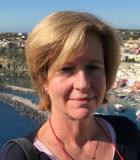
Funzione/Ruolo
Professoressa ordinaria di Farmacologia presso l’Università degli Studi di Milano
Percorso professionale
Dopo la Laurea in Scienze biologiche presso l’Università degli Studi di Milano nel 1983 e un periodo di ricerca presso il Dipartimento di Farmacologia, Chemioterapia e Tossicologia medica della stessa Università, si reca negli Stati Uniti al National Institute of Health (NIH, Bethesda) dove rimane per tre anni e consegue un PhD in Neuropharmacology. Rientrata in Italia, prosegue la sua formazione e le sue ricerche prima come ricercatrice, poi come professoressa associata di Farmacologia al Dipartimento di Farmacologia, Chemioterapia e Tossicologia Medica dell’Università degli Studi di Milano. Dal 2017 è professoressa ordinaria di Farmacologia nella stessa università: docente di farmacologia per Corsi di laurea triennali e magistrali in Scienze Biologiche e in Scienze del Farmaco; docente in Master di II livello e in Scuole di Specializzazione della Facoltà di Medicina e Chirurgia e responsabile del laboratorio di “Terapia del dolore, farmaci d’abuso e neuroimmunologia” costituito da giovani scienziati italiani e stranieri.
Risultati scientifici
I suoi interessi scientifici si concentrano sullo studio dei meccanismi alla base dell’insorgenza, del mantenimento e della risoluzione del dolore infiammatorio cronico e del dolore neuropatico, con lo scopo di identificare nuovi approcci terapeutici più efficaci e sicuri. Il suo gruppo di ricerca ha dimostrato che alla base della cronicizzazione del dolore esiste una interazione patologica tra neuroni, cellule immunitarie, glia e microglia nel sistema nervoso centrale e periferico. La ricerca verte proprio sull’identificazioni dei meccanismi cellulari e molecolari e sui determinanti principali che sottendono ai processi di neuro-infiammazione nel sistema nervoso, con focus sull’equilibrio delle citochine pro e antinfiammatorie. Recentemente ha dimostrato come la somministrazione di cellule staminali, per le loro proprietà intrinseche, rappresenti un importante strumento per modulare l’attività di cellule residenti e quindi anche la neurotrasmissione del dolore. Queste cellule si comportano infatti come diretti trasportatori di fattori trofici, immunomodulatori e omeostatici in grado di modificare la trasmissione degli stimoli nocicettivi. Nella ricerca di nuovi target farmacologici per il trattamento del dolore è stata identificata anche una nuova famiglia di chemiochine: le Prokineticine.
Paola Sacerdote si è inoltre sempre occupata di approfondire la farmacologia di base e clinica degli analgesici più utilizzati in medicina del dolore, cioè gli oppioidi. Il suo gruppo di ricerca è stato il primo a caratterizzarne gli effetti sul sistema immunitario, rivelando il rischio di immunosoppressione associata alla terapia. Da molti anni lavora con centri di Terapia del Dolore in Italia e nel mondo, per migliorare l’utilizzo clinico degli oppioidi, per capirne il potenziale d’abuso e individualizzare la terapia personalizzata al paziente.
Attività editoriali e pubblicazioni
È autrice di circa 190 pubblicazioni scientifiche, e ha partecipato a Consensus Conferences nel campo del dolore e degli oppioidi che hanno portato a importanti pubblicazioni molto utilizzate dai Terapisti del dolore. Ha scritto capitoli per numerosi libri a diffusione nazionale e internazionale.
Di seguito un elenco delle principali pubblicazioni scientifiche:
(2017) Brini A, Amodeo G, Ferreira LM, Milani A, Niada S, Moschetti G, Franchi S, Borsani E, Rodella LF, Panerai AE, Sacerdote P. Therapeutic effect of human adipose-derived stem cells and their secretome in experimental diabetic pain. Scientific Reports, 7(1):9904.
(2017) Franchi S, Amodeo G, Gandolla M, Moschetti G, Panerai AE, Sacerdote P. Effect of Tapentadol on splenic cytokine production in mice. Anesthesia and Analgesia, 124:986-995.
(2016) Castelli M, Amodeo G, Negri L, Lattanzi R, Maftei D, Gotti C, Pistillo F, Onnis V, Congu C, Panerai AE, Sacerdote P, Franchi S. Antagonism of the prokineticin system prevents and reverses allodynia and inflammation in a mouse model of diabetes. Plos One, 11(1):e0146259.
(2014) Maftei D, Marconi V, Florenzano F, Giancotti LA, Castelli M,vMoretti S, Borsani E, Rodella LF, Balboni G, Luongo L, Maione S, Sacerdote P, Negri L and Lattanzi R. Controlling the activation of the Bv8/Prokineticin system reduces neuroinflammation and abolishes thermal and tactile hyperalgesia in neuropathic animals. British Journal of Pharmacology, 171:4850-65.
(2014) Moretti S, Castelli M, Franchi S, Raggi MA, Mercolini L, Protti M, Somaini L, Panerai AE, Sacerdote P. D-9-Tetrahydrocannabinol-induced anti-inflammatory responses in adolescent mice switch to proinflammatory in adulthood. Journal of Leukocyte Biology, 96:523-34.
(2013) Sacerdote P, Franchi S, Moretti S, Castelli M, Procacci P, Magnaghi V, Panerai AE. Cytokine Modulation is Necessary for Efficacious Treatment of Experimental Neuropathic Pain. Journal of Neuroimmune Pharmacology, 8:202-11.
(2013) Sacerdote P, Niada S, Franchi S, Arrigoni E, Rossi A, Yenagi V, De Girolamo L, Panerai AA, Brini AT. Systemic administration of human Adipose-derived Stem Cells (hASCs) reverts nociceptive hypersensitivity in an experimental model of neuropathy. Stem Cells And Development, 22:1252-63.
(2012) Franchi S, Valsecchi AE, Borsani E, Procacci P, Ferrari D, Zaffa C, Sartori P, Rodella LF, Vescovi A, Maione S, Rossi F, Colleoni M, Sacerdote P, Panerai AE. Intravenous Neural Stem Cells abolish nociceptive hypersensitivity and trigger nerve regeneration in experimental neuropathy. Pain, 153:850-861.
(2012) Sacerdote P, Franchi S, Panerai AE. Non-Analgesic Effects of Opioids: Mechanisms and Potential Clinical Relevance of Opioid-Induced Immunodepression. Current Pharmaceutical Design,18(37):6034-42.
(2009) Giannini E, Lattanzi R, Nicotra A, Campese Af, Grazioli P, Screpanti I, Balboni G, Salvadori S, Sacerdote P, Negri L. The chemokine Bv8/prokineticin 2 is up-regulated in inflammatory granulocytes and modulates inflammatory pain. Proceedings of the National Acadademy of Sciences USA, 106:14646-51.
(2008) Gironi M, Martinelli-Boneschi F, Sacerdote P, Solaro C, Zaffaroni M, Cavarretta R, Moiola L, Bucello S, Radaelli M, Pilato V, Rodegher M, Cursi M, Franchi S, Martinelli V, Nemni R, Comi G, Martino G. A pilot trial of low-dose naltrexone in primary progressive multiple sclerosis. Multiple Sclerosis, 14: 1076-83.
(2008) Pergolizzi J, Böger RH, Budd K, Dahan A, Erdine S, Hans G, Kress HG, Langford R, Likar R, Raffa RB, Sacerdote P. Opioids and the management of chronic severe pain in the elderly: consensus statement of an international expert panel with focus on the six clinically most often used WHO step III opioids (buprenorphine, fentanyl, hydromorphone, methadone, morphine, oxycodone). Pain Practice. 8:287-313.

Funzione/Ruolo
Direttrice Gestione Iniziative e Progetti presso Essity.
Percorso professionale
Dopo la Laura Magistrale in Ingegneria Gestionale conseguita presso l’Università di Pisa, trascorre 7 anni in Procter&Gamble, principalmente nella categoria UK Beauty Care, ricoprendo diversi ruoli di supply chain tra cui Operations, Initiatives e Quality management, in una realtà dinamica e competitiva, maturando una significativa esperienza in gestione della supply chain, project management e sviluppo del prodotto e industrializzazione attraverso i principi di Early Management.
Nel 2013 entra in Essity, nel settore Operational Excellence e Initiatives Management, guidando trasformazioni produttive e di portafoglio ad alto impatto sul business italiano e poi europeo.
Risultati scientifici
Valeria Salvadori è specializzata in principi di Lean Manufacturing (TPM), capacità di coaching, capacità di comunicazione e influenza, conoscenza del business e innovazione di prodotto e gestione dell'industrializzazione.

Funzione/Ruolo
Dermatologa
Percorso professionale
Dopo la laurea in Medicina e Chirurgia all'Università di Torino nel 2010, prosegue la sua formazione con una specializzazione in Dermatologia conseguita nel 2016, seguita da un dottorato di ricerca in medicina molecolare. Martina Sanlorenzo inizia la sua carriera da ricercatrice già dal 2011 a Torino, nel 2012 è Medical fellow all'Ayder Refferal Hospital di Mekelle, in Etiopia. L'anno successivo è Research fellow presso l'Ortiz lab, del Dipartimento di Dermatologia della University of California a San Francisco e sempre dal 2013 è anche Medical fellow nel centro Melanoma and cutaneous oncology, presso la medesima università californiana.
Nel 2016 inizia la sua attività di ricerca all'Istituto di Ricerca sul Cancro alla'Università Medica di Vienna, città in cui si trasferisce e avvia un'attività medica privata.
Risultati scientifici
Martina Sanlorenzo nel 2016 ha vinto il premio "L'Oreal Italia per le donne e la scienza" in partnership con Unesco grazie al suo progetto intitolato "Interazione tra farmaci a bersaglio molecolare e immunoterapia nel trattamento del melanoma metastatico: modello preclinico per la valutazione del potenziale sinergismo". Proprio attraverso questo premio è stato possibile per la ricercatrice condurre studi di ricerca clinica che si propongono di integrare due approcci terapeutici, da una parte le terapie che colpiscono le cellule del melanoma (uno dei tumori più aggressivi e difficilmente curabili) e dall'altra quelle che mirano a potenziare la risposta del sistema immunitario contro il tumore.
Attività editoriali e pubblicazioni
È autrice di numerose pubblicazioni nazionali ed internazionali, tra cui:
(2016) Dapavo P, Vujic I, Fierro MT, Quaglino P, Sanlorenzo M. The infliximab biosimilar in the treatment of moderate to severe plaque psoriasis. Journal of the American Academy of Dermatology, 75(4):736-9.
(2016) Posch C, Moslehi H, Sanlorenzo M, Green G, Vujic I, Panzer-Grümayer R, Rappersberger K, Ortiz-Urda S. Pharmacological inhibitors of c-KIT block mutant c-KIT mediated migration of melanocytes and melanoma cells in vitro and in vivo. Oncotarget.
(2016) Ribero S, Balagna E, Sportoletti Baduel E, Picciotto F, Sanlorenzo M, Fierro MT, Quaglino P, Macripo G. Efficacy of electrochemotherapy for eruptive legs keratoacanthomas. Dermatology and Therapy, 29(5):345-348.
(2016) Posch C, Sanlorenzo M, Vujic I, Oses-Prieto JA, Cholewa BD, Kim ST, Ma J, Lai K, Zekhtser M, Esteve-Puig R, Green G, Chand S, Burlingame AL, Panzer-Grümayer R, Rappersberger K, Ortiz-Urda S. Phospho-proteomic analysis reveals increased CK2αkinase activity in NRAS(Q61) mutant melanoma. Journal of Investigative Dermatology, 136(10):2041-8.
(2016) Sanlorenzo M, Vujic I, Posch C, Ma J, Lin K, Lai K, Lee D, Vujic M, Oses-Prieto JA, Chand S, Rodriguez-Peralto JL, Burlingame A, Ortiz-Urda S. Oncogenic KIT mutations in different exons lead to specific changes in melanocyte phospho-proteome. Journal of Proteomics, 144:140-7.
(2016) Vujic I, Sanlorenzo M, Esteve-Puig R, Vujic M, Kwong A, Tsumura A, Murphy R, Moy A, Posch C, Monshi B, Rappersberger K, Ortiz-Urda S. Acyl protein thioesterase 1 and 2 (APT-1, APT-2) inhibitors palmostatin B, ML348 and ML349 have different effects on NRAS mutant melanoma cells. Oncotarget, 7(6):7297-306.
(2015) Sanlorenzo M, Vujic I, Ortiz-Urda S. Time-Dependent Measurement of Adverse Events-Reply. JAMA Dermatology, 151(12):1392-1393.
(2015) Sanlorenzo M, Ribero S, Osella Abate S, Mariani S, Strignano P, Salizzoni M, Savoia P, Fierro MT, Quaglino P. Genetic mutations in primary malignant melanoma of the esophagus: case report and literature review. Giornale Italiano di Dermatologia e Venereologia.
(2015) Posch C, Cholewa BD, Vujic I, Sanlorenzo M, Ma J, Kim ST, Kleffel S, Schatton T, Rappersberger K, Gutteridge R, Ahmad N, Ortiz-Urda S. Combined Inhibition of MEK and Plk1 has Synergistic Anti-Tumor Activity in NRAS Mutant Melanoma. Journal of Investigative Dermatology, 135(10):2475-83.
(2015) Ribero S, Gualano MR, Osella-Abate S, Scaioli G, Bert F, Sanlorenzo M, Balagna E, Fierro MT, Macripò G, Sapino A, Siliquini R, Quaglino P. Histological regression in primary melanoma with sentinel lymph node status: a systematic review and meta-analysis. JAMA Dermatology, 151(12):1301-1307.
Riconoscimenti e premi
Tra i numerosi riconoscimenti ottenuti, nel 2015 riceve l'Euroderm Excellence e nel 2016 vince il premio L'Oreal-UNESCO Italy - For Women in Science 2015-2016.

Funzione/Ruolo
Direttrice di Ricerca presso la sede di Monserrato, Sardegna, del Consiglio Nazionale delle Ricerche
Percorso professionale
Serena Sanna si laurea in Matematica nel 2003 presso l'Università di Cagliari. Dopo 3 mesi diventa collaboratrice scientifica dell'Istituto di Ricerca Genetica e Biomedica (IRGB) del CNR a Cagliari, nel 2005 si trasferisce per due anni presso il dipartimento di Biostatistica alla School of Public Health, dell'Università del Michigan, partner scientifico dell'IRGB. Nel 2007, torna in Italia all'IRGB come Research Investigator, continuando la sua collaborazione con l'Università del Michigan, dove torna per un periodo di sei mesi nel 2010. Nel 2011 diventa tutor dei dottorandi di ricerca dell'Università di Sassari e nello stesso anno ottiene il ruolo permanente all'Istituto di Ricerca Genetica e Biomedica (IRGB) del CNR a Cagliari. Nel 2016 ottiene il dottorato di ricerca in Scienze Mediche dall'Università di Groningen, in Olanda, dove attualmente svolge il ruolo di Assistant Professor presso l'University Medical Center Groningen.
Nel 2019 diventa prima ricercatrice del CNR e del 2020 Direttrice di Ricerca presso la sede del CNR di Moserrato, Sardegna.
Risultati scientifici
Nell'ambito del progetto ProgeNIA, genetica delle malattie legate all'invecchiamento che raccoglie più di sei mila individui, residenti dalla regione dell'Ogliastra in Sardegna, e attraverso l'utilizzo di tecnologie all'avanguardia per la caratterizzazione del genoma, è stato possibile per la ricercatrice individuare alcuni dei fattori genetici che contribuiscono all'insorgenza delle malattie comuni (quali le patologie cardiovascolari) o che modificano fattori di rischio (per esempio il colesterolo e la pressione sanguigna). La ricercatrice utilizza metodi di statistica inferenziale per massimizzare l'informazione genomica ottenuta, riducendo in questo modo i costi sperimentali di circa cinque volte, rispetto ai metodi tradizionali. E' attualmente ancora impegnata come co-investigatrice per il progetto ProgeNIA, e in particolare per il sequenziamento genetico della popolazione Sarda tramite i sequenziatori di nuova generazione (NGS), dei macchinari molto costosi che permettono di sequenziare il genoma di un individuo in tempistiche notevolmente inferiori rispetto ai sequenziatori tradizionali (alcuni giorni invece che diversi anni). L'obiettivo di questo progetto è quello di individuare l'intero spettro di varianti genetiche presenti nella popolazione Sarda e studiarne poi il loro ruolo nell'insorgenza delle malattie complesse e nella modificazione della sintomatologia associata.
Attività editoriali e pubblicazioni
Serena Sanna è autrice di numerose pubblicazioni, fra cui:
(2015) Sidore C, Busonero F, Maschio A, Porcu E, Naitza S, Zoledziewska M, Mulas A, Pistis G, Steri M, Danjou F, Kwong A, Ortega del Vecchyo VD, Chiang CWK, Bragg-Gresham J, Pitzalis M, Nagaraja R, Tarrier B, Brennan C, Uzzau S, Fuchsberger C, Atzeni R, Reinier F, Berutti R, Huang J, Timpson NJ, Toniolo D, Gasparini P, Malerba G, Dedoussis G, Zeggini E, Soranzo N, Jones C, Lyons R, Angius A, Kang HM, Novembre J, Sanna S, Schlessinger D, Cucca F, Abecasis GR. Genome sequencing elucidates Sardinian genetic architecture and augments GWAS findings: the examples of lipids and blood inflammatory markers. Nature Genetics, 47:1272-1281.
(2013) Orrù V, Steri M, Sole G, Sidore C, [....], Schlessinger D, Abecasis GR, Fiorillo E, Sanna S, Cucca F. Genetic Variants Regulating Immune Cell Levels in Health and Disease. Cell, 155(1):242-256.
(2011) Sanna S, Li B, Mulas A,Sidore C, Kang HM, Jackson AU, Piras MG, Usala G, Maninchedda G, Sassu A, Serra F, Palmas MA, Wood WH 3rd, Njølstad I, Laakso M, Hveem K, Tuomilehto J, Lakka TA, Rauramaa R, Boehnke M, Cucca F, Uda M, Schlessinger D, Nagaraja R, Abecasis GR. Fine mapping of five loci associated with low-density lipoprotein cholesterol detects variants that double the explained heritability. PLoS Genetics, 7(7):e1002198.
(2008) Uda M, Galanello R, Sanna S, Lettre G, Sankaran VG, Chen W, Usala G, Busonero F, Maschio A, Albai G, Piras MG, Sestu N, Lai S, Dei M, Mulas A, Crisponi L, Naitza S, Asunis I, Deiana M, Nagaraja R, Perseu L, Satta S, Cipollina MD, Sollaino C, Moi P, Hirschhorn JN, Orkin SH, Abecasis GR, Schlessinger D, Cao A. Genome-wide association study shows BCL11A associated with persistent HbF and amelioration of the phenotype of β-thalassemia. Proceeding of the National Academy Society of the United States of America, 105(5):1620-5.
(2008) Willer CJ, Sanna S, Jackson AU, Scuteri A, et al . Newly identified loci that influence lipid concentrations and risk of coronary artery disease. Nature Genetics, 40(2):161-9.
La lista completa delle pubblicazioni è disponibile online: https://scholar.google.nl/citations?hl=en&user=6hjWp7sAAAAJ&view_op=list_works&sortby=pubdate
Riconoscimenti e premi
Nel 2008 riceve il premio Best Young Scientist award dalla European Society of Human Genetics (ESHG)
Nel 2009 e 2010, due delle sue pubblicazioni (Peufer et al 2009; and Sanna et al 2010) sono state selezionate fra le migliori pubblicazione di scienziati del CNR per quegli anni.
Nel 2013 è stata riconosciuta come Migliore giovane ricercatrice del CRN in biomedicina.
Nel 2014, 2015, 2016, 2017 e 2018, è nella lista degli Highly Cited Scientists della Thomson Reuters, NY, che include l'1% degli scienziati del suo settore.
Nel 2018 riceve il premio “Guido Dorso” dalla associazione Guido Dorsoe dal Senato italiano come migliore ricercatrice del sud Italia.

Funzione/Ruolo
Ricercatrice presso l'Osservatorio Astronomico INAF di Roma
Percorso professionale
Dopo aver conseguito la laurea in Fisica nel 2005 presso l'Università La Sapienza di Roma, prosegue la sua formazione prima attraverso un dottorato di ricerca in Astronomia nello stesso ateneo nel 2009, poi con un master di specializzazione in Scienza e Tecnologie Spaziali all'Università Tor Vergata nel 2012. Già dal 2006 è research assistant dell'Osservatorio Astronomico di Roma, mentre nel 2010 è visiting scientist del Max Planck Institute for Extraterrestrial Physics (MPE), in Germania. Nel 2012 svolge un tirocinio presso la Thales Alenia Space. Continua le sue ricerche all'interno dell'Osservatorio Astronomico di Roma in cui oggi è ricercatrice.
Risultati scientifici
Paola Santini studia l'evoluzione delle galassie a partire dalla loro formazione nelle primissime fasi di vita del nostro Universo. Misurandone e interpretandone i segnali, cerca di comprendere i meccanismi fisici alla base della loro evoluzione, e spiegare come l’Universo è arrivato ad essere quello che osserviamo oggi. Alcune delle domande a cui cerca di dare risposta sono, ad esempio, come e quanto rapidamente le galassie formano le loro stelle, come e perché a un certo punto smettono di formarne, e come questi processi variano nel tempo. A tal scopo, si avvale delle migliori immagini a disposizione acquisite da strumenti all’avanguardia da spazio e da terra nell’ambito di importanti survey extragalattiche, risultato di grosse collaborazioni internazionali. Sfrutta principalmente osservazioni ottiche, infrarosse e submillimetriche. Con i suoi studi getta uno sguardo direttamente sul passato remoto del nostro Universo, osservando la debolissima luce proveniente da galassie che si trovano in epoche differenti dell'evoluzione cosmica.
Attività editoriali e pubblicazioni
Paola Santini è autrice e coautrice di oltre 200 pubblicazioni scientifiche. L'elenco aggiornato è disponibile su ADS Public Library.
Riconoscimenti e premi
Nel 2015 vince il premio Giovani Ricercatori Italiani istituito dal Gruppo 2003 (un gruppo di scienziati italiani che lavorano per la valorizzazione dei giovani) per la ricerca scientifica.

Area STEM: Psicologia e neuroscienze
Competenze: biotecnologie, intelligenza artificiale, leadership, neurologia, neuroscienze, psichiatria, Start-up, strategie di salute pubblica
Parole chiave: Alzheimer, Parkinson, precision neurology, salute delle donne, salute mentale, salute pubblica, Tecnologia medica (MedTech)
Regione: ESTERO
Funzione/Ruolo
Chief Medical Officer, Fondatrice e Presidente di Women’s Brain foundation, Vice Presidente di Euresearch, Consulente presso Innosuisse.
Percorso professionale
La dottoressa Antonella Santuccione Chadha è una medica, rinomata per la sua competenza in neuroscienze e psichiatria, nonché per la sua leadership nella gestione organizzativa, nella ricerca e nello sviluppo clinico. È la fondatrice e presidente della Women's Brain Foundation, un'organizzazione senza scopo di lucro dedicata all'utilizzo della medicina di precisione per esplorare l'impatto del sesso e del genere sulle malattie mentali e cerebrali.
Oltre al suo ruolo presso la Women's Brain Foundation, è vicepresidente e membro del consiglio di amministrazione di Euresearch, un'agenzia svizzera che supporta le attività di ricerca e innovazione in tutta Europa. È anche un consulente esperta presso Innosuisse, l'Agenzia Svizzera per l'Innovazione che supporta PMI, start-up, istituzioni di ricerca e altre organizzazioni svizzere nelle loro attività di ricerca e sviluppo.
La sua leadership e la sua guida strategica sono state fondamentali per il successo di varie start-up, e ha fornito preziosi consigli a presidenti, CEO, consigli di amministrazione e colleghi junior.
La dottoressa Chadha ha un background professionale diversificato, avendo lavorato in università europee, aziende farmaceutiche come Roche e Biogen, l'agenzia di regolamentazione svizzera per l'approvazione di prodotti terapeutici. Ha anche ricoperto il ruolo di direttrice medica e CEO ad interim di Altoida, un'azienda specializzata in diagnostica digitale basata sull'intelligenza artificiale per la neurologia di precisione. I suoi ruoli di leadership in queste organizzazioni l'hanno vista guidare grandi team in contesti aziendali, accademici e ospedalieri.
Risultati scientifici
La dottoressa Antonella Santuccione Chadha è una neuroscienziata di spicco e promotrice di policy che hanno significativamente promosso la comprensione delle malattie cerebrali, delle differenze per sesso e genere in medicina e dell'intelligenza artificiale nell'assistenza sanitaria. La sua ricerca ha influenzato la conoscenza scientifica, lo sviluppo di farmaci e le politiche sanitarie globali.
Differenze di Sesso e Genere nelle Malattie Cerebrali
- Malattia di Alzheimer e Parkinson: La dottoressa Santuccione Chadha è stata fondamentale nel dimostrare come il sesso biologico e il genere influenzino il rischio di malattia, la progressione e le risposte al trattamento. La sua ricerca evidenzia i meccanismi di malattia specifici per sesso nell'Alzheimer e nel Parkinson, sostenendo approcci di medicina di precisione (Nature Reviews Neurology, 2018; Nature Medicine, 2024).
- Differenze di Sesso nella Ricerca Clinica: Ha contribuito a colmare le lacune di genere in neurologia, migliorando la progettazione degli studi clinici e garantendo l'inclusione di dati stratificati per sesso nella ricerca e nelle politiche sanitarie (European Journal of Neurology, 2020).
Meccanismi delle Malattie Neurodegenerative e Approcci di Trattamento Innovativi
- Patologia dei Prioni e della Beta-Amiloide: Le sue prime scoperte hanno fatto luce su come le proteine prioniche e la beta-amiloide contribuiscano alla neurodegenerazione, influenzando la ricerca sui trattamenti per l'Alzheimer (Journal of Cell Biology, 2005; Molecular Psychiatry, 2012).
- Biologia dei Tumori Cerebrali: Ha contribuito a identificare le cellule staminali cerebellari come cellule iniziatrici del medulloblastoma, una scoperta chiave nella ricerca sul cancro al cervello (Oncogene, 2010).
Intelligenza Artificiale nella Salute Cerebrale
- IA per l'Assistenza Sanitaria Specifica per Sesso: Ha aperto la strada alle applicazioni dell'IA che rilevano e correggono i pregiudizi di genere nella salute digitale, modellando la ricerca e le politiche sull'IA biomedica (NPJ Digital Medicine, 2020).
- IA per la Previsione dell'Alzheimer: Il suo lavoro ha contribuito a modelli di IA specifici per sesso per la previsione della malattia di Alzheimer, migliorando la diagnosi precoce e i risultati dei pazienti (Alzheimer's & Dementia, 2024).
Medicina di Precisione e Strategie di Salute Pubblica
- Capitale Cerebrale e Politiche Pubbliche: Ha introdotto il concetto di "Capitale Cerebrale", collegando l'investimento nella salute cerebrale alla crescita economica e all'innovazione (Innovation in Aging, 2022; The Brookings Institution, 2022).
- COVID-19 e Differenze di Sesso: La sua ricerca ha scoperto differenze di sesso nelle risposte immunitarie ai vaccini COVID-19, contribuendo a modellare le strategie di vaccinazione (Contemporary Clinical Trials, 2022).
Direzioni Future: Sviluppo di Farmaci Specifici per Sesso e Impatto Politico
- Modelli In Vitro per la Sperimentazione di Farmaci: Sta guidando gli sforzi per sviluppare modelli in vitro specifici per sesso per le malattie cerebrali, rivoluzionando lo sviluppo di farmaci (Nature Reviews Neurology, in fase di revisione).
- Impatto Economico della Salute Cerebrale delle Donne: La sua ricerca in corso esamina l'onere finanziario delle disparità di sesso in neurologia, sostenendo investimenti sanitari equi dal punto di vista del genere (International Journal of Geriatric Psychiatry, in fase di revisione).
Attività editoriali e pubblicazioni
La dottoressa Antonella Santuccione Chadha ha apportato contributi significativi alla neuroscienza, alla medicina di precisione, alla malattia di Alzheimer e alla ricerca informata su sesso e genere attraverso un ampio portfolio di pubblicazioni scientifiche, libri e policy papers. Ha scritto e co-firmato oltre 50 articoli peer-reviewed in prestigiose riviste, tra cui Nature Medicine, The Lancet, European Journal of Neurology e Alzheimer’s Dementia, coprendo argomenti come la malattia di Alzheimer, la malattia di Parkinson, il capitale cerebrale, l'intelligenza artificiale nell'assistenza sanitaria e la medicina specifica per sesso.
Il suo lavoro pionieristico include policy papers sulla salute cerebrale delle donne, la demenza e le condizioni neurologiche in collaborazione con istituzioni come The Economist Impact, l'Agenzia Europea per i Medicinali (EMA) e l'Istituto Europeo di Salute delle Donne. Ha anche contribuito a linee guida e discussioni normative sul trattamento della malattia di Alzheimer e sul ruolo di sesso e genere nello sviluppo dei farmaci.
La dottoressa Santuccione Chadha è anche autrice di diversi libri che sfidano i pregiudizi nelle neuroscienze e nell'assistenza sanitaria, tra cui Una Bambina Senza Testa (Edizioni Mondo Nuovo, 2021), Sex and Gender Differences in Alzheimer’s Disease (Elsevier, 2021), Sex and Gender Biases in Digital Health (Elsevier, 2022) e Precision Medicine for the Next Pandemic (Elsevier, 2024). Queste opere riflettono il suo impegno nell'integrare approcci sensibili al genere nell'innovazione scientifica e nelle soluzioni sanitarie.
Inoltre, detiene un brevetto relativo ai disturbi neurologici, sottolineando ulteriormente il suo impatto sulla medicina traslazionale e sullo sviluppo terapeutico. Attraverso le sue pubblicazioni, la ricerca e la difesa, la dottoressa Santuccione Chadha continua a guidare i progressi scientifici e politici verso un sistema sanitario più equo e basato sulla precisione.
Riconoscimenti e premi
I suoi successi le sono valsi numerosi riconoscimenti, tra cui l'inserimento nella lista delle 100 donne più influenti nel mondo degli affari in Svizzera dal 2018 e la nomina di Donna dell'Anno in Svizzera nel 2019. Nel 2021, la dottoressa Antonella Santuccione Chadha ha ricevuto anche il World Sustainability Award per i suoi contributi all'avanzamento della medicina di precisione e il "Premio Medicina Italia" nel 2021 per i suoi sforzi nella gestione della pandemia. Nel 2022, è stata insignita del Veuve Clicquot Bold Woman Award in Svizzera. Più recentemente, nel 2024, ha ricevuto il "Women Empowering Award" ed è stata riconosciuta per i suoi contributi all'avanzamento scientifico svizzero con il progetto "Katherinenturm". Nel 2025 è stata inclusa tra i leader pionieri nella salute delle donne e nella FemTech.

Funzione/Ruolo
Professoressa ordinaria di Astrofisica presso l'Università della Calabria (Arcavacata di Rende, Italy)
Percorso professionale
Dopo aver conseguito il dottorato di ricerca in Fisica all'Università della Calabria, Sandra Savaglio diventa Fellow e Senior Research Scientist presso alcuni importanti centri di ricerca internazionali come la John Hopkins University, lo European Southern Observatory (Monaco di Baviera) e lo Space Telescope Science Institute (Baltimora). Lavora anche in Germania, all'Istituto Max-Planck per la Fisica Extraterrestre. Alla ricerca affianca l'insegnamento dell'Astrofisica presso la John Hopkins e l'Università Tecnica a Monaco di Baviera. Nel 2004 finisce sulla copertina della rivista Time Magazine, scelta come simbolo della fuga dei cervelli europei verso gli Stati Uniti. Quasi 10 anni dopo, nel 2014, rientra in Italia: il Consiglio d'amministrazione dell'Università della Calabria decide di procedere alla chiamata diretta della studiosa. Savaglio accetta, ed oggi è professoressa ordinaria di Astrofisica nella sede universitaria di Arcavacata (Cosenza).
Risultati scientifici
I principali interessi di ricerca di Sandra Savaglio riguardano la cosmologia osservativa, l'arricchimento chimico dell'universo e dei fenomeni esplosivi, in particolare le galassie lontane e le galassie che ospitano le esplosioni più energetiche dell'universo mai osservate finora: i lampi gamma (Gamma Ray Burts, GRB), che possono durare da pochi millisecondi a diverse decine di minuti. Per fare ciò utilizza i più potenti telescopi a raggi ultravioletti, infrarossi e ottici. Nel 2006 ha creato il database pubblico GRB Host Studies (GHostS), che contiene informazioni relative alle galassie che ospitano lampi gamma utilizzato dal 2007 al 2015 per oltre 33 studi di altissimo livello. GHostS rappresenta la più grande e completa banca dati di questo tipo al mondo.
Attività editoriali e pubblicazioni
Sandra Savaglio ha scritto due libri di divulgazione: Tutto l’universo per chi ha poco spazio-tempo (Mondadori, 2018) e, con Mario Caligiuri, Senza Attendere (Rubettino, 2006).
E' autrice, o co-autrice, di oltre 200 pubblicazioni su riviste scientifiche e atti di congressi internazionali, tra cui:
(2015) Greiner J, Savaglio S, et al. A very luminous magnetar-powered supernova associated with an ultra-longγ-ray burst, Nature, 523, 189.
(2012) Savaglio S et al. Supersolar metal abundances in two galaxies at z ~ 3.57 revealed by the GRB 090323 afterglow spectrum, Monthly Notices of the Royal Astronomical Society.
(2009) Savaglio S, Glazebrook K, Le Borgne D. The Galaxy Population Hosting Gamma-Ray Bursts, The Astrophysical Journal.
(2006) Savaglio S. GRBs as cosmological probes: cosmic chemical evolution, New Journal of Physics.
(2005) Savaglio S et al. The Gemini Deep Deep Survey. VII. The Redshift Evolution of the Mass-Metallicity Relation, The Astrophysical Journal.
(2004) Glazebrook K, Abraham RG, McCarthy PJ, Savaglio S, et al. A high abundance of massive galaxies 3-6 billion years after the Big Bang, Nature, 430, 181.
(2004) Savaglio S & Fall SM. Dust Depletion and Extinction in a Gamma-Ray Burst Afterglow, The Astrophysical Journal.
(2003) Savaglio S, Fall SM & Fiore F. Heavy-Element Abundances and Dust Depletions in the Host Galaxies of Three Gamma-Ray Bursts, The Astrophysical Journal.
(1999) Savaglio S. The LyαForest of the Quasar in the Hubble Deep Field South, The Astrophysical Journal Letters.
(2000) Savaglio S, Carbone V. Scaling in Atletics World Records, Nature, 404, 244.
Riconoscimenti e premi
Nel 2008 riceve il premio internazionale "Pythagoras" conferito a scienziati che si sono distinti per i traguardi ottenuti nel campo della Fisica e della Matematica. Nel 2010 e 2011 vince i premi internazionali dedicati a personalità importanti di origine calabrese "Made in Calabria e Calabria in the World". Nel 2014 viene insignita del premio internazionale "Prime Donne", conferito a donne capaci di valorizzare la presenza femminile nella società. Nel 2015 le è attribuito il premio internazionale "Pericle d'Oro" e riceve anche il premio internazionale "Frescobaldi". Nel 2016 riceve il premio internazionale "Vittorio De Sica".

Funzione/Ruolo
Artificial Intelligence Projects and Customer Relationship Manager presso 3RDPLACE | AI models of Datrix group
Percorso professionale
Si laurea in Chimica Fisica nel 2014 presso l'Università Federico II di Napoli e prosegue la sua formazione con un Dottorato in Chimica Teorica e Computazionale. Nel periodo 2011- 2014 lavora presso il Centre for Advanced Biomaterials for Health Care dell'Istituto Italiano di Tecnologia, IIT@CRIB. Nel 2014 è visiting researcher presso l' École Nationale Supérieure de Chimie de Paris, France e l' Institute for Molecular Sciencedi Nagoya in Giappone. Dal 2014 al 2017 è prima researcher e poi senior researcher presso il Department of Drug Discovery and Development, dell'Istituto Italiano di Tecnologia IIT@D3.
Risultati scientifici
Attività editoriali e pubblicazioni
Marika Savarese è autrice di diverse pubblicazioni su riviste internazionali, fra cui:
Excited State Proton Transfer and Intramolecular Charge Transfer in 1, 3 diketone Molecules: a Density Functional Theory Based investigation. Marika Savarese*, Éric Brémond, Nadia Rega,Carlo Adamo, Ilaria Ciofini, Chem. Phys. Chem., 2016; DOI: 10.1002/cphc.201500908.
Computational Insights into Excited-State Proton-Transfer Reactions in Azo and Azomethine Dyes. Marika Savarese*, Éric Brémond, Ludmil Antonov, Ilaria Ciofini, Carlo Adamo, Chem. Phys.Chem., 2015; 16, 3966.
Modeling of charge transfer Processes to understand photophysical signatures: The case of Rhodamine 110. (Editor's Choice) Marika Savarese*, Umberto Raucci, Carlo Adamo, Paolo Antonio Netti, Ilaria Ciofini, Nadia Rega Chem. Phys. Lett., 2014; 610, 148.
Exploring the limits of recent exchange–correlation functionals in modeling lithium/benzene interaction. Marika Savarese*, Éric Brémond, Carlo Adamo Theo. Chem. Acc., 2016; 145, 1.
Studies on the Enantioselective Iminium Ion Trapping of Radicals Triggered by an Electron-Relay Mechanism. Ana Bahamonde, John J Murphy, Marika Savarese, Éric Brémond, Andrea Cavalli, Paolo Melchiorre, J. Am. Chem. Soc., 2017, 139, 4559.
Fluorescence Lifetimes and Quantum Yields of Rhodamine Derivatives: New Insights from Theory and Experiment. Marika Savarese, Anna Aliberti, Ilaria De Santo , Edmondo Battista, Filippo Causa , Paolo Antonio Netti , Nadia Rega J. Phys. Chem., A 2012; 116, 7491

Funzione/Ruolo
Ricercatrice Senior presso IRES Piemonte, Istituto di Ricerche Economiche e Sociali
Percorso professionale
Dopo la laurea in Fisica, ottenuta nel 1996 presso l’Università di Torino, vince una borsa di studio per svolgere attività di ricerca e specializzazione all’estero. Si reca presso il Dipartimento di Biofisica Molecolare dell’Università di Utrecht (NL) per collaborare alla realizzazione di un microscopio confocale a doppio fotone con tecniche di imaging basate sul time-gating.
Nel 1998 intraprende il dottorato di ricerca in Neuroscienze e si occupa di plasticità neuronale durante lo sviluppo e di investigare le basi molecolari dei processi di apprendimento emotivo. Dal 2000 al 2002 è host Research Fellow presso il Brain Science Institute del RIKEN (Giappone). Nel 2002 ottiene il Dottorato di Ricerca con una tesi sul rimodellamento sinaptico della corteccia cerebellare durante lo sviluppo, utilizzando tecniche di imaging e di elettrofisiologia.
Dal 2002 al 2009 è stata Post-Doc e ricercatrice a contratto presso l'Istituto Nazionale di Neuroscienze dell’Università di Torino con ruoli di responsabile di progetto, titolare di fondi di ricerca e coinvolta in attività di docenza.
È stata successivamente Funzionaria presso la Commissione Europea svolgendo attività di ricerca nell'Istituto per la Salute e la Protezione del Consumatore del Joint Research Centre di Ispra.
Attualmente è ricercatrice senior presso un'istituzione pubblica, coinvolta in attività di ricerca policy-oriented. È referente per i temi dell’innovazione digitale in sanità all'interno dell’unità di ricerca dedicata alla salute pubblica.
Risultati scientifici
Uno dei suoi principali contributi scientifici è la scoperta, insieme al suo team di ricerca, del coinvolgimento di una specifica area del cervelletto nell’apprendimento emotivo (2004) e la scoperta del ruolo di un circuito cerebellare “feed-forward” nel mantenere la risoluzione temporale per l’integrazione sinaptica dopo l’apprendimento emotivo (2008).
Attività editoriali e pubblicazioni
Attualmente è Associate Editor per la rivista Frontiers in Public Health, Digital Health.
Ha all’attivo numerose pubblicazioni scientifiche. Elenco completo qui: https://orcid.org/0000-0002-2261-8683

Funzione/Ruolo
Capo gruppo del laboratorio di ricerca Synthetic and Systems Biology for Biomedicine dell'Istituto Italiano di Tecnologia, con sede a Napoli, presso l'Università Federico II.
Percorso professionale
Dopo aver conseguito la Laurea in Biotecnologie per la Salute e la Laurea magistrale in Biotecnologie Mediche (Cum laude e menzione alla carriera) presso l’Università di Napoli Federico II, Velia Siciliano ha svolto un Dottorato di Ricerca in Genetica Umana presso il Telethon Institute of Genetics and Medicine, Napoli, Italia. Nel 2012 si è trasferita a Boston dove ha svolto attività di Postdoctoral fellow nel dipartimento di Bioingegneria e al centro di Biologia Sintetica del MIT. Nel 2015 in seguito alla vincita di una borsa di studio per giovani ricercatori indipendenti conferita dall’università Imperial College London, si sposta a Londra dove inizia una linea di ricerca indipendente nel dipartimento di medicina.
A settembre 2017 viene reclutata dall’Istituto Italiano di Tecnologia-IIT con il programma Tenure Track dopo un’iniziale valutazione da parte di una commissione scientifica internazionale. In IIT Velia Siciliano sviluppa una nuova linea di ricerca, Synthetic and Systems Biology for Biomedicine. Contemporaneamente mantiene una posizione di ricercatrice onoraria all’Imperial College London che le consente di continuare le attività di ricerca iniziate a Londra.
Risultati scientifici
Velia Siciliano ha recentemente vinto il più prestigioso fondo di ricerca, l’ERC Starting Grant, un finanziamento di 1.5 milioni di euro dalla comunità europea. E’ inoltre partner di altri finanziamenti: un ERC Advanced (coordinato dal Prof. Di Leonardo, Università la Sapienza, Roma) e il Cosy-BIo (FET-grant, europeo. Coordinato dal Prof. Di Bernardo).
E’ co-inventrice di 1 brevetto (MIT), è stata relatrice in più di 13 conferenze, è membro del comitato scientifico per la scuola estiva di Synthetic and Systems Biology (https://ssbss2018.icas.xyz/), per il Mammalian Syntehtic bIology workshop, ed è chair della conferenza di Cell Therapies + Bioengineering (https://www.aiche.org/sbe/conferences/cell-therapies-and-bioengineering-conference/2018).
Velia Siciliano fa della Global Young Academy of Science dal 2018, ed è stata riconosciuta come una tra i 10 ricercatori under 40 più promettenti in Italia da Fortune (https://www.fortuneita.com/2019/07/14/40-under-40-i-10-giovani-ricercatori-da-tenere-docchio/), e una della 1000 donne con più impatto in Italia per scienza e innovazione (https://startupitalia.eu/unstoppablewomen). Infine è tra le 20 finaliste di Donna D (La Repubblica) per donna del 2019.
Attività editoriali e pubblicazioni
Velia Siciliano è Review Editor per Nanobiotechnology, Frontiers in Molecular Biosciences, Bioengineering e Biotechnology and Materials ed è stata invitata a far parte del comitato editoriale di BioDesign Research, una rivista internazionale, peer-reviewed, open-access, parte della famiglia Science Partner Journal (SPJ); è ad-hocreviewer per più riviste.
[2020] Tedeschi F, Siciliano V.,Mammalian synbio sensors,in Hanbook of Cell Biosensor, Springer.
[2019] Dipalo M, Caprettini V, Bruno G, Caliendo F, Garma L, Melle G, Dukinova M, Siciliano V, Santoro F, De Angelis F. Membrane Poration Mechanisms at the Cell–Nanostructure Interface, Advanced Biosystems, 3(12): 1900148.
[2019] Pennacchio FA, Caliendo F, Iaccarino G, Langella A, Siciliano V, Santoro F. 3D-patterned scaffolds modulate the biointerface at the nanoscale, Nano Letters, 19 (8), 5118-5123.
[2019] Cella F. Siciliano V., Protein-based parts and devices that respond to intracellular and extracellular signals in mammalian cells, Current Opinion in Chemical Biology, 52, 47-53.
[2019] Caliendo F., Dukhinova M., Siciliano V., Engineered cell-based therapeutics: synthetic biology meets immunology, Frontiers in Bioengineering and Biotechnology.
[2018] Cella F., Wroblewska L., Weiss R, Siciliano V. Engineering of protease sensitive RNA-Binding protein in mammalian cells, Nature Communications, 7, 43.
[2018] Siciliano V., Di Andreth B., Monel B., Beal J., Huh J.,Clayton K.,Wroblewska L.,McKeon Am., Walker BD.,Weiss R. Engineering modular intracellular protein sensor-actuator devices. Nature Communications, 9(1):1881.
[2015] Wroblewska L, Endo K, Kitada T, Siciliano V, Saito H, Weiss R. Engineering mammalian cells with RNA-encoded synthetic translational circuits. Nature Biotechnology, 33(8):839-41.
[2014] Stanton B, Siciliano V, Ghodasara A, Wroblewska L, Clancy K, Trefzer A, Chesnut J, Weiss R, Voigt C. Systematic transfer of prokaryotic sensors and circuits to mammalian cells. ACS Synthetic BiologyDec 19;3(12):880-91.
[2013] Siciliano V, Garzilli I, Fracassi C, Ventre S, Criscuolo S, di Bernardo D. miRNAs confer phenotypic robustness to gene networks by suppressing biological noise: a synthetic biology approach. Nature Communications, 4:2364.
[2012] Menolascina F, Siciliano V, di Bernardo D. Engineering and Control of Biological Systems: A New Way to Tackle Complex Diseases and Biotechnological Innovation. FEBS Letter, 586(15):2122-8.
Riconoscimenti e premi
2014 Premio per innovazione scientifica in synthetic biology. Synberc fall retreat
2016 Proof-of concept grant, Synbicite (UK)
2018 Premio Giovani Innovatori MIT Italia
2018 Premio Galilei, 2032 Rotary International
2019 Premio Mortari Award, Merck
Nel settembre 2021 viene nominata fra le 50 donne italiane di maggiore ispirazione per il mondo della tecnologia con il riconoscimento InspiringFifty for Italy.
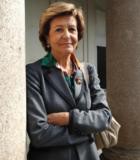
Funzione/Ruolo
Professoressa emerita di Microbiologia Agraria presso l'Università degli Studi di Milano
Percorso professionale
Nel 1965 consegue la Laurea in Scienze Biologiche e prosegue la carriera accademica fino a diventare professoressa ordinaria di Microbiologia degli alimenti presso l'Università degli Studi del Molise. Dal 1993 al 2013 insegna Microbiologia agraria all'Università degli Studi di Milano. Assume diversi incarichi all'interno della governance universitaria: è Preside della Facoltà di Agraria dal 2004-2010 e durante tale mandato fonda la Facoltà di Agraria dell'Università di Makeni, in Sierra Leone. Dal 2005 al 2013 è Delegata del Rettore alla Cooperazione Internazionale allo Sviluppo. Claudia Sorlini è stata inoltre componente del Comitato Pari Opportunità dell'Ateneo di Milano (2007- 2010) e coordinatrice della sezione Donne e Scienza del Centro di Ricerca GENDERS - Gender & Equality in Research and Science (2006 - 2013). Dal 2013 assume incarichi esterni all'Università: nel 2014 fa parte della Steering Committee of the EU Scientific Programme for Expo 2015e dal 2013 del Comitato Women for EXPO (Ministero Affari Esteri).
Risultati scientifici
È esperta nel campo delle biotecnologie microbiche applicate al biorisanamento di siti inquinati, alla produzione di bioenergia (metano, idrogeno e fertilizzanti) e ai biofertilizzanti. Insieme al suo team ha messo a punto un sistema basato su cellule batteriche vitali per recuperare antiche statue di pietra e affreschi; un'immagine di queste indagini ha ottenuto la copertina dell'American Society for Microbiology Journal. Ha ottenuto un'esperienza specifica nella biodegradazione di inquinanti xenobiotici come plastiche, pesticidi, solventi ecc. ed è stata coinvolta nella promozione delle donne scienziato accogliendo giovani studentesse nei suoi progetti scientifici europei, e partecipando, come referente scientifico, ai progetti, come Stages (Structural Transformation to Achieve Gender Equality in Science, 2012-2013), che sostengono le pari opportunità di genere nella scienza.
Attività editoriali e pubblicazioni
Claudia Sorlini è autrice di circa 300 pubblicazioni su riviste internazionali e nazionali e capitoli di libri. Fra le più recenti:
(2018) Vigani G., Rolli E., Dell'Orto M, Michoud G, Soussi A., Raffafu N., Borin S., Sorlini C., Zocchi G., Daffonchio D. Root bacterial endophytes confer drought resistance and enhance expression and activity of a vacuolar H+ -pumping pyrophosphatase in pepper plants. Environmental Microbiology.
(2018) Sorlini C. Agricoltura e alimentazione: quale futuro? Notiziario della Banca Popolare di Sondrio, 137: 14-17.
(2016) Sorlini C. "Cambiamento climatico, una sfida da vincere". In Clima, il pianeta che cambia. Touring Club Italiano Milano, 7-9.
(2015) Expo 2015 EU Scientific Steering Committee. Fischler F., Wilkinson D., Benton T., Daniel H., Darcy-Vrillon B. Hefferman P., Kok E., Saarela M., Jakubczyc E., Sorlini C., Swinnen J., von Brown J. New ways of providing knowledge to tackle food and nutrition security: what should the EU do? European Union.
(2015) Sorlini C., Dendena B., Grassi S. "The mutifaceted nature of the agrifood world". In The many faces of sustainability, a cura di Veca S., Feltrinelli, Milano, 3-29.
Riconoscimenti e premi
Nel 2015 riceve dal Capo dello Stato, Sergio Mattarella, l'onorificenza dell'Ordine al Merito della Repubblica Italiana, per "ricompensare benemerenze acquisite verso la Nazione nel campo delle lettere, delle arti, della economia e nel disimpegno di pubbliche cariche e di attività svolte a fini sociali, filantropici ed umanitari, nonché per lunghi e segnalati servizi nelle carriere civili e militari".
Nello stesso anno è insignita dell'Ambrogino D'Oro, Civica benemerenza del Comune di Milano. Ha inoltre ricevuto il Premio "Donne che ce l'hanno fatta" di Pechino, 20 - Making women world congressper il suoimpegno tra arte, scienza, cultura e sociale e il Premio Tecnovisionarie: donne che vedono il futuro di EXPO Women Global Forum - Women & Tech per aver dato un contributo accademico rilevante e aver coordinato progetti europei e nazionali sulle tematiche dell'ambiente, dell'agricoltura e delle bioenergie. Per il suo impegno inoltre nella cooperazione internazionale, con un master e un progetto di ricerca sull'agricoltura in zone aride e la supervisione della Facoltà di Agraria di Makeni (Sierra Leone), che ha contribuito a istituire.

Area STEM: Scienze biomediche e biotecnologie
Competenze: biostatistica, metodi di ricerca
Parole chiave: analisi dei dati, autotrapianto, biostatistica, cancro, coronavirus, Covid-19, Covid-19 in persone con sclerosi multipla, risonanza magnetica, sclerosi multipla, vaccini nelle persone con sclerosi multipla
Regione: Liguria
Funzione/Ruolo
Professoressa ordinaria di Statistica media all'Università degli studi di Genova
Percorso professionale
Dopo aver conseguito la laurea in Fisica con indirizzo Biofisico presso l'Università degli studi di Genova nel 1992, prosegue la sua formazione attraverso una specialità in Fisica Medica, Analisi statistica dei dati medici e Imaging Biomedico presso l'Università di Pisa. Nel 1998 consegue la specializzazione in Statistica Medica all'Università degli Studi di Milano. Dal 1998 entra a far parte come borsista del gruppo di Epidemiologia Clinica dell'Istituto Nazionale per la Ricerca sul Cancro (IST) di Genova, dove si occupa di Sperimentazioni Cliniche in ambito oncologico. Per 10 anni collabora come consulente statistico con la Neuroimaging Reserach Unit dell'ospedale San Raffaele di Milano e si dedica alla ricerca sulla Sclerosi Multipla. Dal 2005 è Professoressa, prima associata, poi ordinaria di Statistica medica all'Università degli Studi di Genova.
Risultati scientifici
Il lavoro di ricerca di Maria Pia Sormani si focalizza sullo studio delle problematiche metodologiche legate all'uso della risonanza magnetica nella sclerosi multipla, che ha approfondito durante i dieci anni passati collaborando con la Neuroimaging Research Unit presso l'Ospedale San Raffaele di Milano e sulla definizione del disegno di studio per testare nuovi farmaci in questa patologia. Recentemente si è occupata di studi sull'efficacia dell'autotrapianto autologo di cellule ematopoietiche nei casi di sclerosi multipla aggressiva. Su questo argomento ha presentato una meta analisi al Congresso Europeo di Sclerosi Multipla (ECTRIMS) che dovrebbe costituire la base per pianificare e condurre uno studio randomizzato su questa terapia. Partecipa anche allo studio MESEMS, il primo studio mondiale che valuta il trapianto di cellule staminali nella sclerosi multipla, diretto dal prof Uccelli della Clinica Neurologica dell'Università di Genova. Altre aree di ricerca riguardano il trapianto di midollo osseo nelle leucemie, la definizione di endpoint nella Distrofia Muscolare di Duchenne e lo studio di endpoint surrogati in studi di cancro alla mammella, in collaborazione con il San Martino-IST di Genova.
Attività editoriali e pubblicazioni
Fa parte del comitato editoriale di Multiple Sclerosis Journal e Multiple Sclerosis and Related Disorders. Ha pubblicato più di 350 articoli su riviste peer reviewed.
Riconoscimenti e premi
Nel 2016 viene premiata tra le 38 top scientist italiane dall'osservatorio ONDA (Osservatorio Nazionale sulla Salute della Donna).

Funzione/Ruolo
Professoressa ordinaria di Ricerca operativa e Presidente della International Federation of Operational Research Societies, Università di Brescia
Percorso professionale
Dopo la laurea in Matematica nel 1980 presso l'Università degli Studi di Milano, prosegue la sua formazione frequentando la Scuola di Perfezionamento in Matematica. Nel 1983 consegue il diploma, diventando ricercatrice operativa. Dal 1983 al 1987 è professoressa associata della facoltà di Scienze Matematiche, Fisiche e Naturali dell'Università di Udine. Diviene poi titolare di un incarico di collaborazione all'Istituto per le Applicazioni della Matematica e dell'Informatica del CNR, dal 1986 al 1987. Dal 1994 è professoressa ordinaria di Ricerca Operativa della facoltà di Economia dell'Università di Brescia. Dal 2002 al 2008 è Preside della stessa facoltà. Dal 1 novembre 2016 è Prorettrice Vicaria dell'Università di Brescia.
Risultati scientifici
L'attività di ricerca di Maria Grazia Speranza è orientata allo studio di modelli di programmazione matematica a variabili miste intere, cioè di modelli di ottimizzazione in cui si vuole minimizzare o massimizzare una funzione le cui variabili sono vincolate a un insieme prefissato e devono in parte assumere valori interi. Tali modelli sono stati applicati a diversi problemi reali, in particolare nell'area della finanza, dove la decisione da prendere riguarda come investire un capitale in titoli con l'obiettivo di minimizzare il rischio dell'investimento garantendo un dato rendimento medio, e nell'area del trasporto e della logistica, dove la decisione riguarda ad esempio scelte di localizzazione o di distribuzione con l'obiettivo di minimizzare i costi garantendo un dato livello di servizio. Le ricerche più recenti riguardano il valore della collaborazione e la mobilità sostenibile.
Attività editoriali e pubblicazioni
Maria Grazia Speranza è responsabile editoriale di numerose riviste scientifiche come Transportation Science e EURO Journal on Transportation and Logsistic. È inoltre autrice di oltre 150 pubblicazioni, tra cui:
((2018) Archetti C, Christiansen, M, Speranza MG. Inventory routing with pickups and deliveries, European Journal of Operational Research, 268:314–324.
(2018) Speranza MG. Trends in transportation and logistics, European Journal of Operational Research, 264: 830–836.
(2017) Guastaroba G, Savelsbergh M, Speranza MG. Adaptive kernel search: A heuristic for solving mixed integer linear programs, European Journal of Operational Research, 263: 789-804.
(2017) Archetti C, Boland N, Speranza MG. A matheuristic for the multi-vehicle inventory routing problem, Informs Journal on Computing, 29:377-387.
(2016) Guastaroba G, Vigo D, Speranza MG. Intermediate facilities in freight transportation planning: a survey, Transportation Science, 50:763-789.
È inoltre coautrice dei volumi:
S. Martello, M.G. Speranza, Ricerca operativa per l'economia e l'impresa, Esculapio, 2012.
R. Mansini, W. Ogryczak, M. G. Speranza, Linear and Mixed Integer Programming for Portfolio Optimization, EURO Advanced Tutorials on Operational Research, Springer, 2015.
Riconoscimenti e premi
Nel 2008-2009 è stata Vice-Presidente di IFORS (International Federation of Operation Research Societies). Nel 2011-2012 è stata Presidente dell'EURO (Association of European Operational Research Societies). Nel 2014 è stata Presidente della Transportation Science and Logistic Society di INFORMS (The Institute for Operations Research and the Management Science). E' membro dei comitati scientifici dei principali convegni internazionali nell'area dei trasporti e della logistica. E' chair del program committee del convegno IFORS che si terrà a Quebec City nel 2017. E' stata plenary speaker a numerosi convegni internazionali e in particolare a Optimization days 2005 a Montréal (insieme a John Nash) e alla 27th European Conference on Operational Research tenutasi a Glasgow nel 2015.
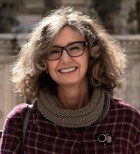
Area STEM: Matematica
Competenze: analisi causale, con successive applicazioni in campo medico, finanziario e economico, modelli grafici markoviani, statistica, sviluppo di strumenti statistici per dati multivariati
Parole chiave: credit scoring, modelli per dati individuali in ambito biomedico e epidemiologico, modelli per la previsione di insolvenza delle piccole e medie imprese (PMI), responsabilità sociale di impresa
Regione: Umbria
Funzione/Ruolo
Professoressa ordinaria di Statistica all’Università degli Studi di Perugia.
Percorso professionale
Si laurea nel 1991 in Economia e Commercio presso l’Università degli Studi di Firenze, dove nel 1995 consegue il dottorato in Statistica Applicata. Dopo un’esperienza come Research Fellow presso la Open University di Milton Keynes (U.K.), vince nel 1996 il posto di Ricercatrice in Statistica all’Università degli Studi di Perugia, dove nel 2005 diventa Professoressa ordinaria.
Nel 2005 è consulente dell’Istituto Regionale per la Programmazione Economica della Toscana (IRPET) per una ricerca sull’analisi e previsione dei flussi turistici regionali.
Nel 2007 è Visiting Professor presso il Center of Research in Statistical Methodology della Università di Warwick (UK).
Nel 2007 consulente della Banca Mondiale per una indagine sulla percezione e comportamento degli abitanti di Teheran relativamente alle problematiche ambientali.
Nel 2008 consulente dell’IRPET per l’analisi della competitività delle Regioni europee.
Nel 2009 consulente del Ministero del Tesoro (Dipartimento UVAL) per per lo sviluppo di una metodologia per la definizione di aree urbane e rurali basata su variabili socioeconomiche.
Dal 2010 al 2012 fa parte del gruppo di ricerca europeo sugli aspetti economici e finanziari degli Investimenti Socialmente Responsabili, finanziato dalla fondazione svedese MISTRA.
Dal 2011 al 2013 partecipa al gruppo di ricerca “Identification of Graphical Markov Models with latent variables”, con incontri annuali presso l’ American Institute of Mathematics, Palo Alto.
Dal 2011 al 2014 fa parte del gruppo di ricerca svedese SIMSAM per lo studio degli effetti sulla salute della esposizione a fattori di rischio nell’infanzia.
Dal 2013 al 2016 è coordinatrice del Dottorato in Metodi matematici e statistici per l’economia e le scienze sociali.
Dal 2014 al 2019 è Delegata del Rettore per le Relazioni Internazionali dell’Università di Perugia, curando i rapporti con Atenei stranieri, con Ministeri italiani e con il CUN – Consiglio Universitario Italiano. Numerose le missioni all’estero.
Dal 2015 al 2019 è stata Affiliated Professor della Università di Umeå (SE).
Nel 2020, componente dell’Advisory Committee dell’ISTAT per il disegno e la implementazione della indagine nazionale sulla sieroprevalenza del COVID-19; attualmente coinvolta in due progetti di analisi di dati di pazienti affetti da COVID-19, in Toscana e in Lombardia.
Nel 2020 e nel 2021 è più volte ospite del programma SKY “I numeri della pandemia”. Dal 2020 fa parte del Rotary E-Club “Due Mondi” che si caratterizza per la organizzazione di incontri principalmemte online.
Attualmente insegna “Statistica” e “Metodi statistici per il Credit Scoring” e “Graphical Markov Models”.
Risultati scientifici
I principali risultati riguardano: (a) l’estensione dei modelli grafici markoviani a variabili con distribuzione normale asimmetrica; (b) lo studio della identificabilità puntuale o per intervallo di modelli statistici quando le informazioni sono parziali; (c) metodi parametrici di inferenza causale.
In relazione al punto (a) ha contribuito a formulare la prima estensione dei modelli grafici a variabili continue con distribuzione normale asimmetrica estesa (Extended Skew-Normal distribution). In relazione al punto (b) ha derivato le condizioni di identificabilità dei modelli grafici (gaussiani o per dati categoriali) con fattori di confondimento e dei modelli a risposta binaria o continua in presenza di fattori di selezione non ignorabili (informative missingness). In relazione al punto (c) ha inoltre derivato la scomposizione parametrica degli effetti causali in presenza di variabili intermedie binarie (causal inference with binary mediators).
I risultati sopra elencati sono stati frutto di collaborazioni scientifiche con ricercatori italiani e stranieri. Le applicazioni riguardano, in ambito microeconomico, l’analisi di dati per la previsione dell’insolvenza delle PMI, lo studio della relazione fra solvibilità e responsabilità sociale. In ambito medico e epidemiologico si è occupata della valutazione della efficacia di trattamenti medici in studi caso-controllo, e della stima della numerosità incognita di una popolazione elusiva mediante metodi cattura-ricattura.
Attività editoriali e pubblicazioni
Dal 2011 è nell’Editorial Board della rivista internazionale “Statistical Papers”.
Ha pubblicato numerosi contributi scientifici, fra cui i seguenti.
[2021] Raggi M., Stanghellini E., Doretti M. Path Analysis for Binary Random Variables. Sociological Methods and Research. Forthcoming.
[2019] Stanghellini E., Doretti M.. On marginal and conditional parameters in logistic regression models. Biometrika, 106(3):732-739.
[2018] Doretti M., Geneletti S., Stanghellini E. Missing Data: A Unified Taxonomy Guided by Conditional Independence. International Statistical Review, 86: 189-204.
[2014] Genbäck, M., Stanghellini E., De Luna X. Uncertainty Intervals for regression parameters with non-ignorable missingness in the outcome. Statistical Papers, 56(3): 829-847.
[2014] Nicolosi M., Grassi S., Stanghellini E. Item Response Models to Measure Corporate Social Responsibility. Applied Financial Economics, 24(22):1449-1464.
[2013] Stanghellini E., Vantaggi B. On the identification of discrete concentration graph models with one hidden binary variable. Bernoulli, 19(5A): 1920-1937.
[2011]. Hutton J.L., Stanghellini E. Modelling bounded health scores with censored skew-normal distributions. Statistics in Medicine, 30: 368–376.
[2009] Stanghellini E. Introduzione ai metodi statistici per il Credit Scoring. Springer Verlag Italia. Monografia.
[2005] Stanghellini E., Wermuth N. On the identification of path analysis models with one hidden variable. Biometrika, 92(2):337-350.
[2004] Stanghellini E., Van der Heijden P.G.M. A multiple-record systems estimation method that takes observed and unobserved heterogeneity into account. Biometrics, 60: 510-516.
[2003] Capitanio A., Azzalini A., Stanghellini E. Graphical Models for skew-normal variates. Scandinavian Journal of Statistics, 30: 129-144.
[1997] Stanghellini E. Identification of a single-factor model using graphical Gaussian rules. Biometrika 84: 241-244.
Riconoscimenti e premi
1997: Vincitrice ex-aequo del Premio per la migliore Tesi di Dottorato in Statistica (VII ciclo) della Società Italiana di Statistica.
1999: Assegnataria della Jemolo Fellowship presso il Nuffield College della Università di Oxford.
Dal 2010 è Elected Member dell’ International Statistical Institute.
2011: Vincitrice dello Square Grant dell’ American Institute of Mathematics.

Funzione/Ruolo
Professoressa Ordinaria all’Istituto Niels Bohr dell’Università di Copenhagen, Copenhagen, Danimarca
Percorso professionale
Irene Tamborra ha conseguito la Laurea Triennale in Fisica nel 2005 e la Laurea Magistrale in Fisica Teorica nel 2007, entrambe all’Università di Bari. Presso la stessa università, ha ottenuto il Dottorato di Ricerca con una tesi in Fisica Astroparticellare nel 2011. È stata Alexander von Humboldt Research Fellow presso il Max Planck Institute for Physics a Monaco di Baviera dal 2011 al 2013 e ricercatrice al Centro di Eccellenza GRAPPA dell’Università di Amsterdam dal 2013 al 2015. Si è trasferita all’Università di Copenhagen nel 2016 come Knud Højgaard Assistant Professor. È stata promossa Professoressa Associata nel 2017 e Professoressa Ordinaria nel 2021.
Risultati scientifici
La sua ricerca è all’intersezione tra l’astrofisica e la fisica delle particelle. Irene Tamborra ha proposto numerose idee per esplorare vari oggetti astrofisici tramite delle particelle elementari chiamate neutrini. La sua ricerca ha anche l’obiettivo di connettere la fisica che avviene all’interno delle sorgenti astrofisiche a livello microscopico alle osservazioni multi-messaggere su larga scala. Parte del lavoro di ricerca di Irene Tamborra è incentrato sulle oscillazioni di sapore dei neutrini, specialmente nel contesto delle sorgenti astrofisiche compatte e dell’universo primordiale, dove i neutrini sono estremamente abbondanti. Si occupa anche di esplorare l’origine degli elementi in ambito astrofisico e l’esistenza di nuova Fisica oltre quella prevista dal Modello Standard delle Particelle Elementari. Nel 2014, ha scoperto una nuovo fenomeno che avviene poco prima dell’esplosione di una supernova: LESA. LESA non è altro che una asimmetria macroscopica nell’emissione di neutrini e antineutrini elettronici ed è tuttora oggetto di intensa attività di ricerca.
Attività editoriali e pubblicazioni
Irene Tamborra è autrice di numerose pubblicazioni scientifiche. La lista completa è disponibile online, su Google Scholar.
Riconoscimenti e premi
Nel 2009 ha ricevuto il premio “Antonio Stanghellini” dalla Società Italiana di Fisica. Nel 2011 ha ricevuto la menzione di onore per il premio “Fubini” del’Istituto Italiano di Fisica Nucleare; nello stesso anno è diventata “Alexander von Humboldt Fellow”. Nel 2019 è stata eletta “Distinguished Associate Professor” dalla Fondazione Carlsberg, ha ricevuto il premio “MERAC” dalla Società Astronomica Europea e il premio “S. P. Duggal” dall’Unione Internazionale di Fisica Pura e Applicata. Nel 2020, ha ricevuto il premio per le “Donne in Fisica” dal Network Danese di Donne in Scienza. Irene Tamborra è membro dell’Unione Internazionale degli Astronomi, della Società Astronomica Europea e ricopre incarichi di rilievo in numerose commissioni internazionali.

Area STEM: Scienze cliniche e scienza dell'alimentazione
Competenze: medicina veterinaria, sicurezza alimentare
Parole chiave: analisi biomolecolari, apicultura, controlli igienico-sanitari, coronavirus, Covid-19, Covid-19: impatto sul packaging alimentare, Covid-19: persistenza del virus nelle industrie, frodi commerciali, qualità nutrizionale, rischio chimico, tecnologia alimentare
Regione: Puglia
Funzione/Ruolo
Professoressa ordinaria presso il Dipartimento di Medicina Veterinaria dell’Università degli Studi di Bari e Presidente della Scuola di Specializzazione in “Ispezione degli Alimenti”.
Percorso professionale
Dopo la laurea in Farmacia conseguita presso l’Università degli Studi di Bari nel 1984, inizia a svolgere attività didattica e di ricerca presso diverse università italiane e straniere: Università di Teramo, Università Cattolica del Sacro Cuore di Roma, Università degli Studi di Tirana e Università della Bretagna occidentale (Francia). Nel triennio 2003/2006 ricopre il ruolo di presidente del corso di laurea in Scienze Zootecniche e Sanità degli Alimenti alla Facoltà di Medicina Veterinaria dell’Università di Bari e, presso la stessa facoltà, nel triennio 2007/2010 è presidente del corso di laurea magistrale in Igiene e Qualità degli Alimenti di origine animale. Dal 2008 al 2014 è presidente della Scuola di Specializzazione in Igiene e Tecnologia del latte e derivati e coordinatrice del dottorato in Produzione, qualità e sicurezza degli alimenti di origine animale dal XX al XXVI ciclo. Attualmente è Presidente della Scuola di specializzazione in Ispezione degli alimenti di origine animale e fa parte del collegio dei docenti della Scuola di dottorato in Sanità animale e Zoonosi. Nel 2014 riceve l’incarico di collaborare con l’assessorato Risorse agroalimentari, Agricoltura, Alimentazione, Riforma fondiaria, Caccia e Pesca, Foreste della Regione Puglia per la stesura della Legge regionale sull’apicoltura. Dal 2017 è componente del Tavolo Regionale di Coordinamento e Monitoraggio per il Coordinamento e Cooperazione tra Amministrazioni ed Enti coinvolti in materia di sicurezza alimentare e sanità pubblica veterinaria ai sensi del Piano Regionale della Prevenzione 2014-2018 (TCM) presso il Dipartimento Promozione della Salute, del Benessere sociale e dello Sport per tutti (Regione Puglia).
Risultati scientifici
La professoressa Tantillo è responsabile scientifica di numerosi progetti di ricerca nazionali e internazionali, finalizzati al controllo igienico-sanitario degli alimenti, ad accertare la qualità nutrizionale e funzionale degli alimenti, alla messa a punto di innovazioni tecnologiche per la conservazione degli alimenti, a svelare, infine, frodi sanitarie e commerciali mediante tecniche biomolecolari. Tra le sue attività di ricerca, ci sono il controllo della presenza di microrganismi patogeni in matrici alimentari, l’analisi chimico-fisica per la determinazione e valutazione del rischio chimico negli alimenti, l’analisi DNA-based per l’identificazione di specie in alimenti preparati o trasformati.
Attività editoriali e pubblicazioni
È autrice del volume La produzione igienica della carne. Gli stabilimenti di macellazione e i laboratori di sezionamento (Edagricola, 2001), di 3 capitoli del testo Igiene e tecnologia degli alimenti di origine animale (a cura di Giampaolo Colavita, Le Point Veterinaire Italie, 2012) e del volume divulgativo Carta d’identità dei prodotti tradizionali pugliesi (Infosei, 2007).
È inoltre autrice/coautrice di numerose pubblicazioni scientifiche, tra cui:
[2018] Terio, Valentina, Bottaro, Marilisa, Di Pinto, Angela, Fusco, Giovanna, Barresi, Teodosio, Tantillo, Giuseppina, Martella, Vito (2018). Occurrence of Aichi virus in retail shellfish in Italy. FOOD MICROBIOLOGY, 74: 120-124.
[2017 ] Terio V, Bottaro M, Pavoni E, Losio M N, Serraino A, Giacometti F, Martella V, Mottola A, Di Pinto A, Tantillo G. Occurrence of hepatitis A and E and norovirus GI and GII in ready-to-eat vegetables in Italy. International Journal of Food Microbiology, 249:61-65, ISSN: 0168-1605, doi: 10.1016/j.ijfoodmicro. 2017.03.008.
[2017] Di Pinto A, Terio V, Marchetti P, Bottaro M, Mottola A, Bozzo G, Bonerba E, Ceci E, Tantillo G. DNA-based approach for species identification of goat-milk products,Food Chemistry, 229:93-97, ISSN: 0308-8146, doi: 10.1016/j.foodchem. 2017.02.067.
[2016] Sportelli M C, Picca R A, Ronco R, Bonerba E, Tantillo G, Pollini M, Sannino A, Valentini A, Cataldi T, Cioffi N. Investigation of industrial polyurethane foams modified with antimicrobial copper nanoparticles, Materials, 9, ISSN: 1996-1944, doi: 10.3390/ma9070544.
[2016] Calvano C D, Picca R A, Bonerba E, Tantillo G, Cioffi N, Palmisano F. MALDI-TOF mass spectrometry analysis of proteins and lipids in Escherichia coli exposed to copper ions and nanoparticles, Journal of Mass Spectometry. 828-840, ISSN: 1076-5174, doi: 10.1002/jms.3823.
[2016] Mottola A, Bonerba E, Bozzo G, Marchetti P, Celano G V, Colao V, Terio V, Tantillo G, Figueras M J, Di Pinto A. Occurrence of emerging food-borne pathogenic Arcobacter spp. isolated from pre-cut (ready-to-eat) vegetables. International Journal of Food Microbiology, 236:33-37, ISSN: 0168-1605, doi: 10.1016/j.ijfoodmicro. 2016.07.012.
[2016] Mottola A, Bonerba E, Figueras M J, Pérez-Cataluña A, Marchetti P, Serraino A, Bozzo G, Terio V, Tantillo G, Di Pinto A. Occurrence of potentially pathogenic arcobacters in shellfish,Food Microbiology, 57:23-27, ISSN: 0740-0020, doi: 10.1016/j.fm.2015.12.010.
[2015] Ditaranto N, Van der Werf I D, Picca R A, Sportelli M C, Giannossa L.C., Bonerba E, Tantillo G, Sabbatini L. Characterization and behaviour of ZnO-based nanocomposites designed for the control of biodeterioration of patrimonial stoneworks. New Journal of Chemistry, 39:6836-6843, ISSN: 1144-0546, doi: 10.1039/c5nj00527b.
[2015] Di Pinto A, Bottaro M, Bonerba E, Bozzo G, Ceci E., Marchetti P, Mottola A, Tantillo G. Occurrence of mislabeling in meat products using DNA-based assay, Journal of Food Science and Tecnology, 52:2479-2484, ISSN: 0022-1155, doi: 10.1007/s13197-014-1552-Y.
[2014] Bonerba E, Ceci E, Montemurro N, Tantillo G, Di Pinto A, Celano G, Bozzo G.Determinazione quantitativa in HPLC Uv-Vis di fitofarmaci nel miele mediante procedura estrattiva QuEChERS.Italian Journal of Food Safety, 3:85-91, ISSN: 2239-7132, doi: 10.4081/ijfs.2014.1647.
[2014] Di Pinto A, Bonerba E, Bozzo G, Ceci E, Terio V, Tantillo G. Occurence of potentially enterotoxigenic Bacillus cereus in infant milk powder.European Food Research and Technoogy, ISSN: 1438-2377, doi: Doi: 10.1007/s00217-013-1988-8.
Riconoscimenti e premi
Il gruppo di ricerca coordinato dalla professoressa Tantillo della Sezione di sicurezza degli alimenti del Dipartimento di Medicina Veterinaria di Bari è risultato primo nella graduatoria nazionale di “Evaluation of Research Quality” nel periodo 2004/2010 (SSD VET/04). Giuseppina Tantillo fa parte del Comitato Scientifico Nazionale AIVI e, dal 2013, come esperta esterna, del Comitato Tecnico Certificazione RINA S.p.A. (Settore Ittico, Ge).
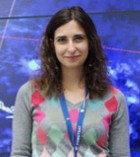
Funzione/Ruolo
LEO Spacecraft Operations Engineer in EUMETSAT, l’agenzia spaziale europea per satelliti meteorologici
Percorso professionale
Stefania Tarquini si laurea presso il Politecnico di Milano in Ingegneria Aerospaziale nel 2010 e in Ignegneria Spaziale nel dicembre 2012, includendo un’esperienza di tesi all’estero di sei mesi alla Pennsylvania State Univeristy negli Stati Uniti.
Durante gli studi, lavora nel suo tempo libero ad un progetto extra-curriculare, il satellite ESMO (European Student Moon Orbiter) gestito dall’Agenzia Spaziale Europea in collaborazione con l’azienda inglese Surrey Satellite Technology Ltd (SSTL). Dopo un anno di lavoro come ingegnera tecnica per il sottosistema propulsivo del satellite, Stefania Tarquini assume il ruolo di Team Leader per il gruppo del Politecnico di Milano, dove gestisce più di dieci persone e, oltre a compiti tecnici per il design del satellite, si occupa di coordinazione delle attività con l’industria.
Dopo la laurea, viene assunta da Telespazio Vega (gruppo Finmeccanica, sezione tedesca) come Spacecraft Controller in EUMETSAT a Darmstadt, in Germania, dove svolge la funzione di operatrice della flotta di satelliti Meteosat e riesce a farsi notare per le sue qualità di ingegnera e manager.
Nel 2015 viene assunta direttamente da EUMETSAT come ingegnera per il satellite Metop, facente parte del programma EUMETSAT Polar System (EPS) portato avanti insieme all’agenzia statunitense NOAA, con la quale EUMETSAT collabora con la distribuzione reciproca dei dati agli utenti e lo scambio di strumenti di rilevamento (europei e americani) per l'imbarco sui rispettivi satelliti.
Nel 2018 Stefania Tarquini si è occupata di coordinare le attività per il lancio di Metop-C, l’ultimo satellite della costellazione Metop, che monta diversi strumenti per il monitoraggio del clima e applicazioni meteorologiche. Il ruolo ha incluso la gestione delle attività di diversi team e la preparazione per le fasi critiche post-lancio di Launch and Early Operation Phase (LEOP), svolto in collaborazione con l’Agenzia Spaziale Europea, e di Spacecraft In-Orbit Verification (SIOV), dove tutti gli strumenti del satellite vengono accesi per la prima volta e testati in orbita.
Dopo il lancio di Metop-C nel Novembre 2018, adesso Stefania Tarquini si occupa delle operazioni dei tre satelliti Metop e lavora come project manager per un altro progetto che include test tecnologici sul Metop-A e si occupa di trovare soluzioni “pulite” per terminarne la vita operativa senza creare detriti spaziali.
Nei prossimi anni Stefania Tarquini si occuperà anche della preparazione delle operazioni per i satelliti di EPS-SG, la seconda generazione di satelliti Metop che verrà lanciata a partire dal 2023.
Risultati scientifici
Durante l’esperienza universitaria di tesi e ricerca, Stefania Tarquini ha lavorato per la selezione di profili innovativi antighiacchio per pale di rotori di elicotteri. Il lavoro ha incluso ricerca e sperimentazione con materiali speciali superidrofobici che sono poi stati testati in una camera a ghiaccio su un vero rotore di elicottero, dando poi vita a diverse pubblicazioni.
Attraverso il progetto ESMO Stefania Tarquini ha acquisito molte conoscenze del sottosistema propulsivo di satelliti a propulsione liquida e durante la laurea triennale ha lavorato anche alla ricerca di materiali innovativi per propellenti solidi e ibridi.
Le principali aree di espezienza adesso sono nel campo delle operazioni spaziali per satelliti in orbita bassa (LEO) e nello specifico sui sotto-sistemi di controllo d’assetto, potenza e controllo di temperatura, dove Stefania Tarquini svolge sia un ruolo tecnico che di coordinazione delle attività con l’industria, Airbus France.
Dal momento che i satelliti Metop possono essere comandati solo per una decina di minuti ogni 101 minuti, una delle aree di forza è la veloce risoluzione di problemi in caso di anomalie e sinergia con altri membri del team.
Dopo aver acquisito la certificazione PRINCE2 a Londra in Project Management, Stefania Tarquini adesso si specializza anche della gestione e pianificazione di progetti e nello specifico per il progetto sulla fine della vita operativa del satellite Metop-A.
Attività editoriali e pubblicazioni
[2018] S. Tarquini,”Planning an End-Of-Life Technology Test Campaign for the Metop-A satellite”, Proceeding of SpaceOps Conference 2018, Marseille.
[2014] S. Tarquini, C. Antonini, A. Amirfazli, M. Marengo & J. Palacios, “Investigation of Ice Shedding Properties of Superhydrophobic Coatings on Helicopter Blades”, Cold Regions Science&Technology, 100, 50–58.
[2013] S. Tarquini, Carlo Antonini, A. Amirfazli, J. Palacios, M. Marengo, “Assessing Icephobicity Of Superhydrophobic Surfaces As Passive Coating Icing Mitigation Strategy On Helicopter Blades”, Proceeding of ILASS 2013, Chania, Crete, 1-4 September 2013.
[2012] S. Tarquini, L. Ferrario, A. Devereaux, L. Rossettini, “Design and Development of a Dual Mode Bipropellant Propulsion System for the European Student Moon Orbiter”, Proceeding of 3AF-ESA-CNES Space Propulsion 2012, Bordeaux, 7-10 May 2012.
Riconoscimenti e premi
Premio “PoMiLIA-61” per la miglior tesi di laurea del 2012 sull’argomento di soluzioni innovative per il risparmio energetico nel settore aerospaziale (Luglio 2013).

Area STEM: Psicologia e neuroscienze
Competenze: creative arts therapies, educazione al fine vita, terapia della dignità
Parole chiave: comunicazione mediatica, coronavirus, Covid-19, cure palliative, fine-vita, incidenti critici negli istituti penitenziari, lutto, morte, negazione sociale della morte, resilienza e spiritualità, stress morale tra i medici, suicidio, testamento biologico
Regione: Veneto
Funzione/Ruolo
Professoressa ordinaria di Psicologia sociale e Direttrice del Master in Death Studies & The End of Life all’Università degli Studi di Padova
Percorso professionale
Dopo la laurea in Psicologia con Indirizzo Applicativo, presso l’Università degli Studi di Padova nel 1989, prosegue gli studi per la Specializzazione in “Clinica e Teoria della Terapia Sistemica”, presso il “Centro Gregory Bateson”, Ospedale Niguarda Ca’ Granda di Milano. Nel 1995 si laurea in Filosofia teoretica con il professore Emanuele Severino all’Università degli Studi Ca’ Foscari di Venezia. Nel 1996 ottiene il perfezionamento in “Antropologia Culturale e Sociale” all’Università degli Studi di Padova. Nel 1991 assume il ruolo di esercitatrice assegnata alla cattedra di Psicologia sociale all’Università di Padova, dove diviene ricercatrice nel 1999 e professoressa associata nel 2003. Nel 2017 ottiene l’abilitazione nazionale di Prima Fascia in Psicologia sociale, e dal 2024 assume il ruolo di professoressa ordinaria, sempre presso l'università di Padova.
Partecipa attivamente a progetti europei e internazionali: in particolare, è stata Project Director Manager del progetto Europeo Daphne “EMPoWER” per l’elaborazione della violenza domestica. È stata componente del Progetto internazionale "Retorno às raízes? Gênero, identidade e integração na imigração brasileira contemporânea na itália", finanziato da CNPq (Conselho Nacional de Pesquisa – Brasil) contro la discriminazione delle donne immigrate “di ritorno” dal Brasile. È stata responsabile scientifica dell’European Project Grundtvig, Lifelong Learning Programme, Education and Culture – Supporting Potential Development (Italia, Austria, Bulgaria, Portogallo, Romania, Islanda) per donne disoccupate. È stata Visiting Professor presso la Universidade De Caxias do Sul (UCS), nel 2010, e presso la Semmelweiss University of Budapest (Hungary), nel 2017.
Dal 2012 è docente alla Scuola di Dottorato in “Scienze sociali. Interazioni, Comunicazione, Costruzioni Culturali” dell’Università degli Studi di Padova. Insegna “Psicologia delle relazioni intragruppo e intragruppi e delle relazioni di sistema” del Dipartimento di Scienze Politiche, Giuridiche e Studi internazionali (DSPGi), e “Fondamenti di Psicologia sociale” del Dipartimento di Scienze Politiche, Giuridiche e Studi internazionali (DSPGi), nel corso di laurea magistrale in Psicologia del Lavoro e della Comunicazione presso il Dipartimento FISPPA.
Direttrice del Master in "Death studies & the end of life” e di siti Endlife e Ases, Ines Testoni è altresì titolare dell’unico corso in Italia di “Psicologia delle relazioni di fine-vita, perdita, morte”. Membro della Società Italiana di Cure Palliative (SICP) e della parallela European Association of Palliative Care (EACP), fa parte del direttivo (Steering Group) del Family Bereavement Network in Europe (FBNE). È inoltre membro dell’International Society for Research on Aggression (ISRA) ed è componente della Federation of European Psychodrama Training Organisations (FEPTO). È membro della Conferenza Nazionale dei Master in Cure Palliative e Terapia del Dolore, istituita dal Ministero dell’Università e della Ricerca (MIUR).
È affiliata a numerosi organismi di ricerca di rilevanza internazionale ed è stata direttrice scientifica di una decina di congressi internazionali sui temi della morte, del morire e della palliazione. Dal 2018 è research fellow presso l’Emili Sagol Creative Arts Therapies Research Center, University of Haifa (Israel).
Risultati scientifici
La sua ricerca è incentrata sul concetto severiniano di “nichilismo”, in particolare sulle rappresentazioni della morte intesa come annientamento, sul quale ruota l’intero apparato di ricerca che si si concentra su alcuni temi fondamentali: psicotanatologia, educazione alla morte (Death Education), elaborazione del lutto e trattamento del dolore, costrutti sociali della rappresentazione ontologiche della morte su cui si incentrano i comportamenti umani violenti contro sé stessi e contro gli altri (tossicodipendenza, anoressia e suicidio, violenza di genere) e i fattori psicosociali del suicidio; lutto (in particolare: lutto anticipatorio dopo una prognosi infausta, lutto traumatico; lutto perinatale; consulenza, supporto e terapia per l’elaborazione del lutto); costruzione sociale delle dinamiche biopolitiche e bioetiche in funzione delle rappresentazioni della morte; accompagnamento del morente; Dignity Therapy; consenso informato tra le rappresentazioni sociali della malattia e della cura; dinamiche concettuali emergenti dal concetto di identità “mente-cervello”; autodeterminazione e problemi psicologici legati al testamento biologico (direttive anticipate di trattamento); morte/spiritualità/ religiosità; strategie di coping sociale e individuale dinanzi al morire; Terror Management Theory; formazione del personale sanitario, comunicazione della brutta notizia (Breaking Bad News); psicodramma per l’elaborazione del lutto e la death education.
Un ulteriore ambito di ricerca riguarda il rapporto tra morte e “sociatry” (uso della morte nella violenza sociale: violenza e discriminazione di genere; dinamiche mafiose).
Attività editoriali e pubblicazioni
Ines Testoni è autrice di una decina volumi e curatrice di altrettanti testi, di un centinaio di articoli e contributi per opere collettanee di rilevanza nazionale e internazionale, tra cui:
(2019) Testoni, I., Piscitello, M., Ronconi, L., Zsák, É., Iacona, E., Zamperini, A. Death Education and the Management of Fear of Death Via Photo-Voice: An Experience Among Undergraduate Students, Journal of Loss and Trauma, doi: 10.1080/15325024.2018.1507469
(2019) Testoni, I., Ronconi, L. Noppe Cupit, I., et al. The effect of death education on fear of death amongst Italian adolescents: A nonrandomized controlled study, Death Studies, doi: 10.1080/07481187.2018.1528056
(2018) Testoni I, Bisceglie D, Ronconi L, Pergher V, Facco E. Ambivalent trust and ontological representations of death as latent factors of religiosity. Cogent Psychology, 5(1). doi: 10.1080/23311908.
(2018) Testoni I., Mariani C., Zamperini A. . Domestic Violence Between Childhood Incest and Re-victimization: A Study Among Anti-violence Centers in Italy, Frontiers in Psychology, doi: 10.3389/fpsyg.2018.02377
(2018) Testoni, I., Ronconi, L., Palazzo, L., Galgani, M., Stizzi, A., Kirk, K. Psychodrama and moviemaking in a death education course to work through a case of suicide among high school students in Italy. Frontiers in Psychology, doi:10.3389/fpsyg.2018.00441
(2017) Testoni I, Facco E, Perelda F. Toward A New Eternalist Paradigm for Afterlife Studies: The Case of the Near-Death Experiences Argument. World Futures, 73(7):442-456. doi:10.1080/02604027.2017.1357935.
(2017) Solomon S, Testoni I, Bianco S. Clash of civilizations? Terror Management Theory and the role of the ontological representations of death in contemporary global crisis. TPM Testing Psychometric Methodology in Applied Psychology, 24(3):379-398. doi: 10.4473/TPM24.3.5.
(2017) Testoni I, De Cataldo L, Ronconi L, & Zamperini A. Pet loss and representations of death, attachment, depression, and euthanasia.Anthrozoös, 30(1):135-148. doi:10.1080/08927936.2017.1270599.
(2017) Testoni I, Ghellar T, Rodelli M, De Cataldo L, Zamperini A. Representations of death among Italian vegetarians: An ethnographic research on environment, disgust and transcendence. Europe’s Journal of Psychology, 13(3):378-395. doi:10.5964/ejop.v13i3.1301.
(2017) Testoni I, Milo V, Ronconi L, Feltrin A, Zamperini A, Rodelli M, Cillo U, Germani G. Courage and representations of death in patients who are waiting for a liver transplantation. Cogent Psychology, eprint, 4(1). http://www.tandfonline.com/doi/pdf/10.1080/23311908.2017.1294333.
(2016) Testoni I, Parise, G, Visintin EP, Zamperini A, Ronconi L. Literary plastination: From body's objectification to the ontological representation of death, differences between sick-literature and tales by amateur writers. TPM - Testing, Psychometrics, Methodology in Applied Psychology,23(2):247-263. doi: 10.4473/TPM23.2.8.
(2016) Testoni I, Visintin EP, Capozza D, Carlucci MC. & Shams M. The implicit image of God: God as reality and psychological well-being. Journal for the Scientific Study of Religion,55(1):174-184. doi:10.1111/jssr.12252.

Area STEM: Chimica
Competenze: bioelettronica, chimica analitica, diagnostica, scienza e tecnologia dei materiali
Parole chiave: ambiente, bioelettronica, biosensori, chimica analitica, coronavirus, Covid-19, donne e scienza, hiv, invenzioni, macchina degli odori, nanotecnologie, rivelazione virus, scienza dei materiali, sensori
Regione: Puglia
Funzione/Ruolo
Professoressa ordinaria di Chimica presso l'Università di Bari e professoressa a contratto presso l'Abo Academy University in Finlandia.
Percorso professionale
Ha conseguito la laurea in Fisica e il PhD in Chimica presso UNIBA ed è stata post-doc presso Bell Labs negli Stati Uniti. Nel 2010 Torsi è stata insignita del premio H.E. Merck della nota multinazionale, ed è ad oggi ancora l'unica donna ad aver ricevuto questo prestigioso riconoscimento internazionale. Nel 2019 le è stato conferito il Distinguished Women Award dall' International Union of Pure and Applied Chemistry - IUPAC. È stata anche l'unica donna presidente della European Material Research Society che, con più di 4000 membri, è la più grande della categoria in Europa. Torsi è autrice di oltre 200 articoli, pubblicati anche su riviste ad elevatissimo impatto come Science e Nature. I suoi lavori hanno raccolto quasi 13.000 citazioni contribuendo a raggiungere un h-index di 54 (google scholar). Finanziamenti per la ricerca raccolti per oltre 26 M €, comprendono diversi progetti nazionali ed europei, di cui Torsi è spesso la coordinatrice. Luisa Torsi è molto impegna anche come role model per le giovani scienziate. In una recente campagna della Fondazione Bracco, è stata protagonista di una storia di TOPOLINO nel ruolo di Louise Torduck, una scienziata di successo della Calisota Valley.
Risultati scientifici
Le ricerche di Luisa Torsi sono incentrate su sistemi bio-elettronici a transistor in grado di rivelare un singolo marcatore proteico o un singolo virus in un campione reale non pretrattato di sangue o saliva (concentrazione di 10 zeptomolare). L’interfaccia del dispositivo che risponde in pochi muniti e può essere fabbricato a basso costo, ha dimensioni ordini di grandezza maggiori della singola proteina da rivelare. Questo è un record mondiale basato sulla tecnologia Single-Molecule with a large Transistor -SiMoT brevettata da Torsi ed il suo gruppo nel 2018. La prospettiva è lo sviluppo di sistemi diagnostici ultrasensibili, veloci, a basso costo ed alta affidabilità per lo screening ultra-precoce di patologie progressive quali i tumori o le infezioni sia virali che batteriche.
Attività editoriali e pubblicazioni
È autrice di più di 200 articoli scientifici e numerosi brevetti, tra cui:
(2020) Macchia E., Picca R.A., Manoli, K., Di Franco, C., Blasi, B., Sarcina, L., Ditaranto, N., Cioffi, N., Österbacka, R., Scamarcio, G., Torricelli, F., Torsi L.* About the amplification factors in organic bioelectronic sensors. Materials Horizons, 7, 999 – 1013. 2020 Materials Horizons most popular article.
(2019) Macchia, E., Tiwari, A., Manoli, K., Holzer, B., Ditaranto, N., Picca, R.A., Cioffi, N., Di Franco, C., Scamarcio, G., Palazzo, G., Torsi, L.* Label-free and selective single-molecule bioelectronic sensing with a millimeter-wide self-assembled monolayer of anti-immunoglobulins. Chemistry of Materials, 31, 6476-6483.
(2018) Macchia, E., Manoli, K., Holzer, B., Di Franco, C., Ghittorelli, M., Torricelli, F., Alberga, D., Mangiatordi, G.F., Palazzo, G., Scamarcio, G., Torsi, L.* Single mo-lecule detection with a millimetre-sized transistor. Nature Communications, 9, 3223; Highlighted in Nature: https://www.nature.com/articles/d41586-018-05950-z
(2017) Holzer., B., Manoli, K., Ditaranto, N., Macchia, E., Tiwari, A., Di Franco, C., Scamarcio, G., Palazzo, G., Torsi, L. Characterization of Covalently Bound Anti-human Immunoglobulins on Self-assembled Monolayer Modified Gold Elec-trodes. Advanced Biosystem, 1, 1700055.
(2016) Macchia E, Alberga D, Manoli K, Torsi L, et al. Organic bioelectronics probing conformational changes in surface confined proteins. Scientific Reports, 6, 28085
(2015) Macchia E, Giordano F, Magliulo M, Torsi L, et al. An analytical model for bio-electronic organic field-effect transistor sensors.Applied Physics Letters, 106(2).
(2015) Afzal A, Di Franco C, Mesto E, Torsi L, et al. Au/In2O3 and Au/ZrO2 composite nanoparticles via in situ sacrificial gold electrolysis. Materials Express, 5(3):171-179
(2015) Mulla M Y, Tuccori E, Magliulo M, Torsi L, et al. Capacitance-modulated transistor detects odorant binding protein chiral interactions, Nature Communications, 6,6010
(2015) Palazzo G, De Tullio D, Magliulo M, Torsi L, et al. Detection Beyond Debye's Length with an Electrolyte-Gated Organic Field-Effect Transistor. Advanced Materials, 27(5):911-916.
(2013) Torsi L et al. Organic field-effect transistor sensors: a tutorial review. Chemical Society Reviews, 42(22):8612-8628.
(2008) Torsi L, et al. A sensitivity-enhanced field-effect chiral sensor. Nature Materials, 7(5): 412-417.
(1995) Dodabalapur A, Katz EH, Torsi L, et al. Organic Heterostructure Filed-Effect Transistors.Science, 269 (5230):1560-1562.
(1995) Dodabalapur A, Torsi L, Katz EH. Organic Transistors - 2 dimensional transport and improved electrical characteristics. Science, 268 (5208):270-271.
Riconoscimenti e premi
Nel 2010 è la prima italiana nonché la prima donna a vincere l'Henrick Emmanuel Merckper le Scienze Analitiche, premio internazionale che viene assegnato a scienziati che abbiano inventato un metodo di analisi in grado di migliorare la qualità della vita dei cittadini. Lo riceve per l'invenzione del sensore bio-elettronico stampabile su plastica o carta di cui sopra.
Nel 2013 è insignita del premio itwiin come "Migliore inventrice Italiana del 2013" dall'Associazione Italiana Donne Inventrici e Innovatrici.
Nel 2015 Euwiin International 2015 (European Union WomenInventors&Innovators Awards) le assegna il titolo di Miglior Inventrice europea nella sezione "Inventor" (primo posto assoluto).
Nel 2015 è stata la Presidente della European Material Research Society, prima donna a rivestire questo ruolo.
Nel 2021 è stata insignita della Medaglia Wilhelm Exner, un prestigioso riconoscimento conferito dal 1921 alla presenza del Presidente Austriaco dall' Associazione Austriaca delle piccole e medie imprese per celebrare l'eccellenza nella ricerca e nella scienza.

Funzione/Ruolo
Responsabile dell'Unità Operativa Cardiologia Invasiva e del "Monzino Women" presso il Centro Cardiologico Monzino, IRCCS, Milano
Percorso professionale
Dopo aver conseguito la laurea in medicina e Chirurgia presso l’Università di Milano nel 1992, si specializza in Cardiologia presso l’Università degli Studi di Milano nel 1997. Nel periodo 1997-1998 svolge una fellowship in Imaging intracoronarico presso il Washington Hospital Center di Washington, DC. Dal 1998 frequenta il Centro Cardiologico Monzino in qualità di medico assistente presso l’Unità di Cardiologia Interventistica dove diventa aiuto senior nel 2008 e referente nel 2014. Nel gennaio 2017 istituisce il Women Heart Center per la prevenzione cardiovascolare nella donna presso il Centro Cardiologico Monzino e dal settembre 2018 dirige l’Unità Operativa 3 di Cardiologia Invasiva presso il medesimo Istituto.
E’ Tutor per gli studenti del corso di Medicina e Chirurgia- Università di Milano
Docente presso la Scuola di Specializzazione in Patologie dell’Apparato Cardiovascolare Università di Milano.
E’ nominata membro della commissione per la valutazione di dispositivi cardiovascolari presso l’Istituto Superiore di Sanità (2011) e membro della Commissione dell’Istituto Superiore di Sanità (2018) per la stesura del documento ministeriale per l’applicazione e la diffusione della Medicina di Genere (in attuazione dell’articolo 3, comma 1, Legge 3/2018).
Risultati scientifici
L’attività di ricerca di Daniela Trabattoni si concentra soprattutto nell’ambito della Cardiologia Interventistica, indagando i fattori che possono influenzare l’outcome della rivascolarizzazione coronarica in funzione dell’impiego di differenti tipologie di stent coronarici, focalizzandosi anche sull’analisi gender-based. Ha approfondito gli effetti delle terapie di cardioprotezione impiegate nel corso di infarto miocardico acuto quali adiuvanti dell’angioplastica primaria nel recupero funzionale del ventricolo sinistro. Ha esplorato le potenziali correlazioni tra forame ovale pervio e emicrania e condotto analisi comparative tra dispositivi occlusori differenti per la correzione percutanea di PFO. Ha lavorato alla stesura del documento di consenso della società di Cardiologia Invasiva per la gestione della terapia antiaggregante piastrinica in pazienti sottoposti a rivascolarizzazione coronarica e indirizzati a chirurgia in urgenza o elettiva. Ha condotto studi per la valutazione della sicurezza ed efficacia di trattamento antipiastrinico di breve durata dopo impianto di stent coronarici medicati o drug-coated in pazienti ad alto rischio emorragico.
Attività editoriali e pubblicazioni
Daniela Trabattoni è revisora di diverse riviste cardiologiche internazionali e nazionali: Giornale italiano di Cardiologia, Journal of Cardiovascular Medicine, International Jorunal of Cardiology, Catheterization & Cardiovascular Interventions, Cephalalgia, Circulation Cardiovasc Interventions.
Ha fatto parte del comitato editoriale del Journal of Endovascular Therapy (2010-2013) e attualmente fa parte del comitato editoriale della rivista Journal of Hypertension and Immunotherapy.
Ha al suo attivo numerose pubblicazioni scientifiche.
Riconoscimenti e premi
Dal 1995 fa parte della Società Italiana di Cardiologia.
Dal 2001 fa parte della Società Europea di Cardiologia e fa parte del Gruppo Italiano di Cardiologia Invasiva.
Dal 2005 fa parte dell'American College of Cardiology.
Dal 2007 è membro della European Association of Percutaneous Cardiovascular Interventions (EAPCI).
Nel 2007 ha ricevuto il premio "Rosa Camuna" dalla Regione Lombardia.
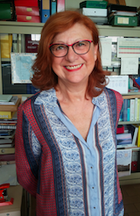
Funzione/Ruolo
Prima Ricercatrice dell'Istituto Nazionale di Fisica Nucleare (INFN), sezione di Milano
Percorso professionale
Dopo aver conseguito la laurea in Fisica presso l'Università di Trieste nel 1977 prosegue la sua formazione prima come Summer Student nel 1978 presso il CERN e poi frequentando la Scuola di specializzazione in Fisica a Trieste, come borsista del Consorzio per l'Incremento studi e Ricerche dei Dipartimenti di Fisica dell'Università di Trieste. Nel 1983 entra a far parte dell'Istituto Nazionale di Fisica Nucleare, sezione di Trieste, come ricercatrice e successivamente nella sezione di Milano. E' associata scientifica presso il CERN di Ginevra, ininterrottamente dal 1978.
Risultati scientifici
I due principali filoni di ricerca di Clara Troncon sono lo studio della Fisica delle particelle elementari con acceleratori e, nello specifico, le misure delle proprietà degli Heavy Flavour, le verifiche di precisione del Modello Standard, inclusa la ricerca e poi la scoperta del bosone di Higgs e la ricerca dell'evidenza di segnali di nuova fisica oltre il Modello Standard. Il secondo filone comprende lo sviluppo, la progettazione e la realizzazione di sensori di silicio a microstrip e pixel e lo sviluppo, la progettazione, la realizzazione, commissioning e operazione di rivelatori di vertice. La sua attività di ricerca inizia al CERN, dove dal 1979 al 1986 si dedica allo studio del quark charm con gli esperimenti dell'EHS, European Hybrid Spectrometer, all'acceleratore SPS (SuperProtoSincrotrone). Dal 1986 al 2000 partecipa all'esperimento DELPHI all'acceleratore LEP del CERN, dove contribuisce alle misure di precisione del bosone neutro Z0 e del bosone W, alle verifiche del Modello Standard e alla ricerca del bosone di Higgs. Il suo gruppo collabora alla costruzione del rivelatore di vertice al silicio di DELPHI. Nel 1997, inizia a partecipare all'esperimento ATLAS al Large Hadron Collider (LHC) del CERN, in cui ha un ruolo importante nella costruzione del rivelatore a pixels. Dopo l'installazione di questo rivelatore nel 2008, si dedica alla ricerca e allo studio del bosone di Higgs e alla ricerca di particelle supersimmetriche e di segnali di una nuova fisica alla scala del TeV(teraelettronvolt) Si è inoltre impegnata dal 1996 al 2000 in attività di studio per i futuri Linear Colliders attraverso il Conceptual Design del Next Linear Collider e lo studio di fattibilità per la ricerca del bosone di Higgs. Dal 2001 al 2006 attraverso la collaborazione RD50 si è dedicata alla ricerca e sviluppo di rivelatori a semiconduttore resistenti a radiazione per collisori di altissima luminosità.
Attività editoriali e pubblicazioni
E' autrice di oltre 1.100 pubblicazioni scientifiche, fra cui:
(2016) ATLAS Collaboration, Aad G, Troncon C, et al. Search for dark matter produced in association with a Higgs boson decaying to two bottom quarks in pp collisions at √s=8 TeV with the ATLAS detector. Physical Review D, 93: 7, 072007.
(2016) ATLAS Collaboration, Aad G, Troncon C, et al. Search for magnetic monopoles and stable particles with high electric charges in 8 TeV pp collisions with the ATLAS detector. Physical Review D, 93:5, 05200.
(2013) ATLAS Collaboration, Aad G, Troncon C, et al. Evidence for the spin-0 nature of the Higgs boson using ATLAS data. Physical Review Letters B, 726, 120-144.
(2012) ATLAS Collaboration, Aad G, Troncon C, et al. Search for squarks and gluinos using final states with jets and missing transverse momentum with the ATLAS detector in √s=7 TeV proton-proton collisions. Physical Letters B, 710, 67-85.
(2012) ATLAS Collaboration, Aad G, Troncon C, et al. Observation of a new particle in the search for the Standard Model Higgs boson with the ATLAS detector at the LHC. Physical Review Letters B, 716, 1-29.
(2011) ATLAS Collaboration, Aad G, Troncon C, et al. Measurement of the top quark-pair production cross section with ATLAS in pp collisions at √s=7 TeV. The European Physical Journal A, C71, 1577.
(2010) ATLAS Collaboration, Aad G, Troncon C, et al. Observation of a Centrality-Dependent Dijet Asymmetry in Lead-Lead Collisions at √sNN=2.77 TeV with the ATLAS Detector at the LHC. Physical Review Letters, 105, 252303.
(2008) ATLAS Collaboration, Aad G, Troncon C, et al. The ATLAS Experiment at the CERN Large Hadron Collider. JINST 3: S08003.
(1998) Accomando E, Troncon C, et al. Physics with e+ e- colliders. Physics Report C, 299, 1. Amsterdam (Olanda).
(1996) DELPHI Collaboration, Abreu P, Troncon C, et al. Performance of the DELPHI Detector. Nuclear Instruments and Methods in Physics Research A, 378, 57.
Riconoscimenti e premi
Dal 2006 al 2012 è stata membro eletto della INFN CSN1 (Commissione Scientifica Nazionale 1, Fisica delle particelle con acceleratori) e referee per l’esperimento Babar nella CSN1. Dal 2011 al 2014 ha fatto parte dell’ANVUR (Agenzia Nazionale per la Valutazione della Qualità della Ricerca), del MIUR e coordinatrice del subGEV02 (Fisica sperimentale, Particelle e Nucleare).
Dal 2012 a oggi Clara Troncon fa parte del Gruppo di Lavoro per la Valutazione INFN (fase finale VQR) e responsabile della delegazione per la CSN1. Dal 2013 su designazione del Presidente dell'INFN, viene nominata dal Direttore Generale del CERN Delegata italiana nel comitato CERN ACCU (Advisory Committee of CERN Users), carica successivamente rinnovata. Nel 2015 è designata da ACCU come Rappresentante ACCU nel CERN Scientific Information Policy Board. Nello stesso anno diventa membro del GEV02 (Gruppo Esperti della Valutazione per le Scienze Fisiche per la VQR (Valutazione della qualità della Ricerca 2015-2017, per l’ANVUR-MIUR e coordinatrice del subGEV02_I (Fisica sperimentale, Particelle e Nucleare), carica che ricopre ancora oggi.
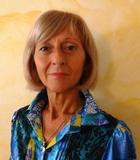
Funzione/Ruolo
Professoressa ordinaria di Farmacologia presso l'Università di Ferrara
Percorso professionale
Dopo la laurea in Scienze Biologiche presso l'Università di Ferrara nel 1988, prosegue i suoi studi nella stessa università conseguendo il dottorato di ricerca in Farmacologia Cellulare e Molecolare nel 1996. Diventa assistente ricercatrice di Farmacologia e dal 2009 a oggi è professoressa associata nella stessa disciplina sempre all'Università di Ferrara.
Risultati scientifici
I temi di ricerca di Katia Varani e del suo gruppo sono ben rappresentati dallo studio farmacologico, biochimico e molecolare dei recettori dell'adenosina che hanno un importante ruolo nel sistema nervoso centrale, nel sistema cardiovascolare e nella risposta immunitaria. L'interazione dei recettori dell'adenosina viene studiata nelle malattie neurodegenerative (corea di Huntington, morbo di Parkinson e sclerosi multipla), nel dolore cronico e neuropatico, nei disturbi cardiovascolari come ipertensione e insufficienza cardiaca, nelle malattie infiammatorie e nel cancro. Alcuni studi dimostrano che i recettori A3 dell'adenosina rappresentano un possibile bersaglio terapeutico per prevenire lo sviluppo dei tumori mesoteliali della pleura (tumori della membrana che riveste il polmone) dopo l'esposizione all'amianto. Altri studi hanno evidenziato che i recettori A2A se stimolati hanno un ruolo anti infiammatorio nelle patologie croniche infiammatorie, quali ad esempio l'artrite reumatoide. Recentemente studi preclinici hanno mostrato che modulatori allosterici dei recettori A1 dell'adenosina sono dotati di proprietà analgesica e ansiolitica. Lo sviluppo di nuovi potenziali farmaci agenti sui recettori dell'adenosina potrebbe costituire un valido e innovativo aiuto farmacologico nella pratica clinica.
Attività editoriali e pubblicazioni
Katia Varani è autrice di oltre 200 articoli scientifici pubblicati su riviste internazionali, tra cui:
(2018) Borea PA, Gessi S, Merighi S, Vincenzi F, Varani K. Pharmacology of Adenosine Receptors: The State of the Art. Physiology Review, 98(3):1591-1625.
(2017) Borea PA, Gessi S, Merighi S, Vincenzi F, Varani K. Pathologic overproduction: the bad side of adenosine. British J Pharmacology, 174:1945-1960.
(2016) Tabrizi M, Baraldi PG, Borea PA, Varani K (2016). Medicinal chemistry, pharmacology, and potential therapeutic benefits of cannabinoid CB2 receptor agonists. Chemical Reviews, 116:519-560.
(2016) Borea PA, Gessi S, Merighi S, Varani K. Adenosine as a multi-signalling guardian angel in human diseases: when, where and how does it exert its protective effects?. Trends in Pharmacological Sciences, S0165-6147(16)00041-9.
(2015) Preti D, Baraldi PG, Moorman AR, Borea PA, Varani K. History and perspectives of A2Aadenosine receptor antagonists as potential therapeutic agents. Medicinal Research Reviews, 35(4):790-848.

Funzione/Ruolo
Chief Diversity Officer, European Space Agency
Percorso professionale
Ersilia Vaudo si è laureata in Astrofisica all’Università La Sapienza di Roma, dove ha inizialmente lavorato nel Dipartimento di Cosmologia su esperimenti per la misura dell’anisotropia della radiazione di fondo cosmico. Dal 1991 lavora all’Agenzia Spaziale Europea, a Parigi, dove attualmente è Chief Diversity Officer.
Durante la sua carriera ha ricoperto vari ruoli strategici, tra cui la preparazione delle decisioni a livello Ministerale, il supporto alla formulazione della Strategia Spaziale Europea e del programma di Esplorazione Spaziale dell’ ESA, la creazione dell’European Space Policy Institute a Vienna, ed è stata Segretario Esecutivo del Gruppo consultivo scientifico-tecnologico della missione ExoMars. Ha inoltre lavorato quattro anni all’ufficio dell’ESA di Washington DC, curando in particolare le relazioni con la NASA. Ersilia Vaudo è stata membro del Board of Directors di Women in Aerospace US ed è attualmente membro dell’International Women’s Forum, di Women in Aerospace – Europe, e del Women’s Forum for the Economy & Society Daring Circle.
Risultati scientifici
Ersilia Vaudo Scarpetta ha una lunga esperienza in programmi spaziali, in particolare scienza e esplorazione, strategia spaziale europea, relazioni con la NASA. Inoltre, lavora per promuovere l'avanzamento delle ragazze e delle donne nell'eduzione e nelle carriere STEM e promuove i valori della diversità e inclusione.
Ha tenuto diversi TEDx Talk, fra cui:
TEDX Bari, 2015: L’Universo e’ resiliente?
TEDX Roncade, 2015: La sfida della conoscenza
TEDX Matera, 2018: Donne, Spazio e Superpoteri
TEDX THBrandenburg: A journey through Space. Stretching the limits
Attività editoriali e pubblicazioni
(2019) Piu' donne di scienza per vincere la sfida della competitività, Il Sole 24 Ore
(2018) Simply into science, how to tear down the STEM gender, Worldcrunch.com
(2018) La Scienza delle Donne, Wired
(2018) Why women in space are developing science ‘superpowers’, becoming smarter and shooting higher, Womenthology.co.uk
(2017) Lunar glow: what is driving the new space race to the Moon, Worldcrunch.com
(2016) Space and its Links to Economic Theory and Public Support, in "Theorizing European Space Policy" (a cura di Thomas C. Hoerber e Emmanuel Sigalas), Washington DC: Rowman & Littlefield
(2016) Il futuro del lavoro ai tempi del determinismo tecnologico, Il Menabo’ di Etica ed Economia
(2015) The role of space in support of the common objectives of the European Nordic countries, 66th International Astronautical Congress, Jerusalem, Israel
(2014) Rosetta, the comet Hunter, Il Menabo’ di Etica ed Economia
(2002) Assessing ESA’s Current Voting Rules and Practice and Potential Weighted Voting Systems in the Perspective of Enlargement, ESA Bulletin.
Riconoscimenti e premi
Ersilia Vaudo Scarpetta ha ricevuto numerosi premi e riconoscimenti.
Nel 1983, ha ricevuto la borsa di studio "Enrico Persico", dell'Accademia dei Lincei
Nel 1986, la borsa di studio "Amelia Earhart" Fellowship per merito distintivo negli studi di astrofisica
Nel 2016 ha vinto il "Premio Cajeta" nella categoria "Scienza e Ricerca Scientifica".
Nel 2019 è stata nominata per lo "European Diversity Awards" nella categoria "Head of Diversity of the Year " e inclusa nella lista delle "Unstoppable Women" di StartupItalia che riconosce l’impegno delle donne nell'innovazione in Italia. Nello stesso anno è stata chiamata per la Lectio Magistralis di Inaugurazione del 157mo Anno Accademico al Politecnico di Milano.
Nel settembre 2021 viene nominata fra le 50 donne italiane di maggiore ispirazione per il mondo della tecnologia con il riconoscimento InspiringFifty for Italy.
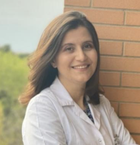
Area STEM: Psicologia e neuroscienze
Competenze: neuroimaging in malattie neurodegenerativa, neurologia clinica
Parole chiave: atassia cerebellare, atassia di Friedreich, conduzione di trial clinici, controllo del movimento, disordini del movimento, malattie da accumulo di glicogeno, malattie neurodegenerative rare, neuromodulazione, paralisi cerebrali infantili, Paraparesi Spastica Ereditaria, riabilitazione motoria, valutazione clinica
Regione: Puglia
Funzione/Ruolo
Docente al corso di Master in Neuroscienze presso King’s College London, Università di Londra. Specializzanda in Malattie dell’Apparato Respiratorio presso l’Università di Foggia.
Percorso professionale
Dopo la laurea in Medicina e Chirurgia nel 2007 presso l’Università degli Studi di Firenze, prosegue un percorso di formazione scientifica con un Master in Neuroscienze presso l’Institute of Psychiatry, Psychology & Neuroscience del King’s College, Università di Londra. Negli anni 2012-2015 consegue il Dottorato di ricerca in Medicina dello Sviluppo e Scienze della Programmazione presso l’Università di Padova e lavora presso l’IRCCS “Eugenio Medea” di Conegliano Veneto. Nel 2019-2020 completa un Post-Doctoral Fellowship presso l’Università di Padova. Nel 2021 inizia la specializzazione medica in Malattie dell’Apparato Respiratorio presso l’Università di Foggia. Dal 2010 è docente al Corso di Master in Neuroscienze presso IOPPN del King’s College a Londra.
Risultati scientifici
Fin dall’inizio del suo lavoro di ricerca in ambito delle neuroscienze ha approcciato lo studio di disordini neurologici, partendo con la Sclerosi Multipla e la Sclerosi Laterale Amiotrofica con approccio clinico e di laboratorio. Mentre svolgeva un progetto sulla tossicità del SOD-1 in modelli sperimentali e acquisiva competenze tecniche di laboratorio, ha anche sviluppato un interesse particolare per i disturbi del movimento.
Il filone di ricerca che ha prevalentemente esplorato è lo studio delle atassie cerebellari, ed in particolare dell’Atassia di Friedreich. Ha esplorato gli aspetti clinici ed anche il volume cerebrale, la diffusione e le caratteristiche di attivazione cerebrale-cerebellare con tecniche di neuroimaging avanzato in questa patologia. Questa ricerca è stata seguita da un importante follow-up clinico e neuroradiologico che ha generato anche una collaborazione internazionale nell’ambito delle malattie rare cerebellari (ENIGMA-Ataxia).
Ulteriormente, ha posto interesse nell’ambito dell’esplorazione e sviluppo di proposte di trattamento, quali studi clinici sperimentali ed il loro disegno, applicazione della neuromodulazione e strategie di riabilitazione nell’Atassia di Friedreich.
È impegnata nell’insegnamento post-laurea e nel tutoraggio di laureandi in ambito delle professioni sanitarie.
I risultati delle sue ricerche sono stati pubblicati in riviste scientifiche internazionali, e sono stati presentati come contributi in conferenze nazionali e internazionali.
Attività editoriali e pubblicazioni
[2020] Vavla M, Arrigoni F, Toschi F, Peruzzo D, Maria Grazia D'angelo MG, Gandossini S, Russo A, Diella E, Tirelli S, Salati R, Rufini A, Condo I, Testi R, Martinuzzi A. Sensitivity of neuroimaging indicators in monitoring the effects of interferon gamma treatment in Friedreich’s Ataxia. Front. Neurosci. doi: 10.3389/fnins.2020.00872.
[2021] Pizzighello S, Vavla M, Minicuci N, Pellegri A, Martinuzzi A. Trends observed in bilateral cerebral palsy during a thirty-year period: A cohort study with an ICF-based overview. Pediatr Neonatol. Feb 5:S1875-9572(21)00018-8. doi: 10.1016/j.pedneo.2021.01.016. Online ahead of print. PMID: 33663988
[2020] Scalco RS, Lucia A, Santalla A, Martinuzzi A, Vavla M, Reni G, Toscano A, Musumeci O, Voermans NC, Kouwenberg CV, Laforêt P, San-Millán B, Vieitez I, Siciliano G, Kühnle E, Trost R, Sacconi S, Stemmerik MG, Durmus H, Kierdaszuk B, Wakelin A, Andreu AL, Pinós T, Marti R, Quinlivan R, Vissing J; EUROMAC Consortium. Data from the European registry for patients with McArdle disease and other muscle glycogenoses (EUROMAC). Orphanet J Rare Dis. Nov 24;15(1):330. doi: 10.1186/s13023-020-01562-x. PMID: 33234167
[2020] Vavla M, Montanaro D, Pizzighello S, Frijia F, Arrigoni F, Baratto A, Piccoli G, Paparella G, Martinuzzi A. Brain Magnetic Spectroscopy Imaging and Hereditary Spastic Paraplegia: A focused Systematic Review on Current Landmarks and Future Perspectives. Front Neurol. Jul 14;11:515. doi: 10.3389/fneur.2020.00515. eCollection 2020. PMID: 32765386
[2020] Montanaro D, Vavla M, Frijia F, Aghakhanyan G, Baratto A, Coi A, Stefan C, Girardi G, Paparella G, De Cori S, Totaro P, Lombardo F, Piccoli G, Martinuzzi A. Multimodal MRI longitudinal assessment of White and Grey Matter in different SPG types of Hereditary Spastic Paraparesis Front Neurosci. Jun 4;14:325. doi: 10.3389/fnins.2020.00325. eCollection 2020. PMID: 32581663
[2020] Paparella G, Vavla M, Bernardi L, Girardi G, Stefan C, Martinuzzi A. Efficacy of a combined treatment of botulinum toxin and intensive physiotherapy in Hereditary Spastic Paraplegia. Front. Neurosci. Doi: 10.3389/fnins.2020.00111
[2020] Vavla M, D'Angelo MG, Arrigoni F, Toschi N, Peruzzo D, Gandossini S, Russo A, Diella E, Tirelli S, Salati R, Scarpazza P, Luffarelli R, Fortuni S, Rufini A, Condò I, Testi R, Martinuzzi A. Safety and efficacy of interferon γ in friedreich's ataxia. Mov Disord. 35(2):370-371. doi: 10.1002/mds.27979. Epub 2020 Jan 13. PMID: 31930551
[2020] Vavla M, Paparella G, Papayannis A, Pascuzzo R, Girardi G, Pellegrini F, Capello G, Prosdocimo G, Martinuzzi A. Optical Coherence Tomography in a cohort of genetically defined Hereditary Spastic Paraplegia: A brief research report. Front. Neurol. | doi: 10.3389/fneur.2019.01193
[2019] Vavla M, Paparella G, Merotto V, Comiotto J, Piai J, Martinuzzi A. Combining Transcranial Direct Current Stimulation and Intensive Physiotherapy in Patients with Friedreich’s Ataxia: A Pilot Study. Acta Scientific Neurology 2.1: 03-10.
[2018] Vavla M, Arrigoni F, Nordio A, De Luca A, Pizzighello S, Petacchi E, Paparella G, D'Angelo MG, Brighina E, Russo E, Fantin M, Colombo P, Martinuzzi A. Functional and Structural Brain Damage in Friedreich's Ataxia. Front Neurol. Sep 6;9:747. doi: 10.3389/fneur.2018.00747. ECollection 2018. PMID: 30237783.
[2016] Martinuzzi A, Montanaro D, Vavla M, Paparella G, Bonanni P, Musumeci O, Brighina E, Hlavata H, Rossi G, Aghakhanyan G, Martino N, Baratto A, D'Angelo MG, Peruch F, Fantin M, Arnoldi A, Citterio A, Vantaggiato C, Rizzo V, Toscano A, Bresolin N, Bassi MT. Clinical and Paraclinical Indicators of Motor System Impairment in Hereditary Spastic Paraplegia: A Pilot Study. PLoS One. Apr 14;11(4): e0153283. doi: 10.1371/journal.pone.0153283.
[2014] Aghakhanyan G, Martinuzzi A, Frijia F, Vavla M, Hlavata H, Baratto A, Martino N, Paparella G, Montanaro D. Brain White Matter Involvement in Hereditary Spastic Paraplegias: Analysis with Multiple Diffusion Tensor Indices.AJNR Am J Neuroradiol. Aug;35(8):1533-8. doi: 10.3174/ajnr.A3897.
Riconoscimenti e premi
Nel 2011 Marinela Vavla ha vinto una borsa di ricerca per il dottorato di Ricerca e nel 2019 una borsa per un Post-Doctoral Fellowship, entrambe presso l’Università di Padova. Negli anni 2015-2020 ha ricevuto finanziamenti dall’Associazione Ogni Giorno per Emma per svolgere ricerca nell’ambito delle atassie cerebellari e Atassia di Friedreich.

Funzione/Ruolo
Presidente del Corso di Laurea e Professoressa ordinaria di Informatica dell'Università La Sapienza di Roma
Percorso professionale
Dopo aver conseguito la laurea in Ingegneria Elettronica all'Università La Sapienza di Roma nel 1978, lavora come ricercatrice presso la Fondazione Ugo Bordoni fino al 1982. Nel 1983 è visiting scholar all'Università di Stanford e, dal 1984 al 1986, è ricercatrice presso il centro scientifico IBM di Roma. Dal 1986 al 1996 è professoressa associata presso la facoltà di Ingegneria dell'Università di Ancona. Dal 1996 è professoressa presso il Dipartimento di Informatica della facoltà di S.MM.FF.NN dell'Università di Roma "La Sapienza". Nel 2001 vince un concorso di prima fascia e diventa professoressa ordinaria, presso lo stesso ateneo, dove dal 2011 al 2013 è Presidente del Corso di Laurea in Informatica, incarico che ha di nuovo assunto dal novembre 2016. Dal 2013 è responsabile del corso di laurea in Informatica, modalità teledidattica. Insegna presso la laurea magistrale in Informatica (in lingua inglese) i corsi di Machine Learning e Web and Social Information Extraction, e dal 2017, anche il corso di Business Intelligence della laurea magistrale in lingua inglese in Management. E' impegnata in questioni di genere, e da sei anni coordina il progetto di orientamento NERD? per aumentare il numero di ragazze iscritte nei corsi di informatica.
Risultati scientifici
Nei primi anni di attività scientifica, Paola Velardi si occupa di Architettura dei Calcolatori e di affidabilità per poi rivolgere i suoi studi all'Intelligenza Artificiale. In seguito, i suoi principali interessi di ricerca riguardano l'elaborazione del linguaggio naturale, l'apprendimento automatico, la modellazione semantica e il semantic web, ovvero la trasformazione del web in un ambiente dove i documenti pubblicati sono associati a informazioni e dati che ne specificano il contesto semantico in un formato adatto all'interrogazione e all'interpretazione (per esempio, tramite motori di ricerca) e, più in generale, all'elaborazione automatica di testi. Più recentemente, si occupa di analisi di reti sociali, applicando i suoi studi alla profilazione di utenti, al rilevamento di "trending topics" (argomenti di discussione che diventano popolari fra gli utenti di reti sociali), allo studio della leadership femminile nelle reti sociali aziendali, alla sorveglianza epidemiologica e e-health.
Attività editoriali e pubblicazioni
È autrice di più di 150 pubblicazioni nazionali ed internazionali, fra cui:
(2021) Aragona D, Podo L, Prenkaj B, Velardi P. CoRoNNa: A Deep Sequential Framework to Predict Epidemic Spread. SAC '21 Proceedings of the 36th Annual ACM Symposium on Applied Computing. 3.
(2016) Stilo G, Velardi P. Hashtag Sense Clustering based on Temporal Similarity. Computational Linguistics, 43-1.
(2016) Stilo G, Velardi P. Efficient Temporal Mining of Micro-blog Texts and its application to Event Discovery. Data Mining and Knowledge Discovery, 30(2):372-402.
(2015) Faralli S, Stilo G, Velardi P. Recommendation of micro-blog users based on hierarchical interest profiles. Social Network Analysis and Mining, 5, 25.
(2015) Gesualdo F, Stilo G, D'Ambrosio A, Carloni E, Pandolfi E, Velardi P, et al. Can Twitter be a source of information on allergy? Correlation of pollen counts with tweets reporting symptoms of allergic rhinoconjunctivitis and names of antihistamine drugs. PloS One, 10(7):e0133706
(2015) Faralli S, Stilo G, Velardi P. Large Scale Homophily Analysis in Twitter using a Twixonomy. Proceedings of International Joint Conference on Artificial Intelligence (IJCAI 2015) Buenos Aires.
(2015) Faralli S, Stilo G, Velardi P. What Women Like: A Gendered Analysis of Twitter Users' Interests based on a Twixonomy. Ninth International AAAI Conference on Web and Social Media Workshop: Wikipedia, a Social Pedia: Research Challenges and Opportunities, Oxford.
(2015) Di Tommaso G, Stilo G, Velardi P. Women leadership in enterprise social networks: A SNA toolkit to foster the emergence of informal leaders in organizations. International Conference on Information Society (i-Society 2015), IEEE, London.
(2014) P. Velardi P, G. Stilo G, E. Tozzi E, Gesualdo F. Twitter mining for fine-grained syndromic surveillance. Artificial Intelligence in Medicine, 61(3):153-63.
(2013) Velardi P, S. Faralli S, Navigli R. OntoLearn Reloaded: A Graph-based Algorithm for Taxonomy Induction.Computational Linguistics, 39(3), MIT Press.
(2013) Gesualdo F, Stilo G, Agricola E, Gonfiantini MV, Pandolfi E, Velardi P, Tozzi AE. Influenza-like illness surveillance on Twitter through automated learning of naïve language. PLoS One, 8(12):e82489.
Riconoscimenti e premi
Ha partecipato come partner, partner associato o coordinatore a vari progetti nazionali e europei. Tra gli altri, i progetti nazionali (MIUR legge 297) CHAT, su temi di multimodalità, e LC3, un laboratorio pubblico-privato di ricerca sul tema della comunicazione di conoscenze culturali; i progetti regionali SimiTur 2.0 (POR FESR 2007/2013 - CO-RESEARCH) sul tema del turismo; PARTECIPATE (Progetti di Ricerca presentati da Enti di Ricerca LR 13/2008) su temi di e-collaboration e interfacce partecipative in ambito turistico/culturale; HomeCare4All (POR FERS Lazio 2007/2013) su temi di salute pubblica e interazione multilingua con gli utenti; e infine Fiordaliso (POR FERS Lazio 2007/2013) sul tema dell'analisi della leadership femminile nelle reti sociali aziendali. Ha fatto parte del comitato di governo della Network of Excellence europea INTEROP (2003-2007), su temi di enterprise interoperabilità e del comitato scientifico del "EU Virtual Laboratory for Enterprise Interoperability", un ente europeo di ricerca legalmente costituitosi in Belgio nel 2007. È revisore della comunità europea, revisore e PC member delle più importanti conferenze e riviste nelle tematiche di interesse (ACL, EACL, EMNLP, ESWC, IJCAI, ICWSM, TKDD, TKDE, CL, AIIM, BIBM, WWW, ecc). È Associate Editor di Knowledge and Information Systems.
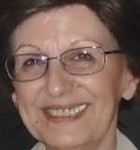
Funzione/Ruolo
Professoressa ordinaria di Chimica Generale dell'Università di Bologna
Percorso professionale
Dopo la Laurea in Chimica presso l'Università di Bologna nel 1971, prosegue la sua formazione prima come borsista, poi contrattista e infine ricercatrice della facoltà di Farmacia dell'università bolognese fino al 1992. Nello stesso anno diventa professoressa associata nella facoltà di Scienze Matematiche, Fisiche e Naturali della stessa università, e viene confermata nuovamente nel 1995. Dal 2005 è professoressa ordinaria di Chimica Generale dell'Università di Bologna.
Risultati scientifici
Dal 1972 al 1991 lavora con un incarico di ricerca presso l'Istituto FRAE (ora ISOF) del CNR di Bologna occupandosi di Chimica delle Radiazioni e, in particolare, dei meccanismi di trasferimento elettronico coinvolti nei sistemi modello per la conversione dell'energia solare in energia chimica. Attualmente si occupa di Fotochimica ed Elettrochimica supramolecolare, dedicandosi in particolare alla progettazione e alla realizzazione di specie formate dall'interazione di due o più molecole in grado di svolgere funzioni utili predeterminate. Gli obiettivi principali della ricerca sono: 1. Ideare e realizzare sistemi chimici nei quali alcuni componenti molecolari possono essere messi in movimento rispetto agli altri mediante opportuni stimoli esterni, che possono essere di tipo luminoso, chimico o elettrochimico. Congegni di questo tipo sono noti come macchine molecolari e sono attualmente di grande interesse scientifico, come chiaramente evidenziato dall'assegnazione del Nobel per la Chimica 2016; 2. Progettare e realizzare sistemi in grado di raccogliere, trasmettere, immagazzinare ed elaborare segnali chimici, luminosi ed elettrochimici. Fra sistemi del genere vi sono antenne, fili, congegni presa/spina, sistemi di tipo "prolunga". I risultati di questa ricerca sono di importanza basilare nei campi delle nanoscienze e delle nanotecnologie, ad esempio per la costruzione di dispositivi in grado di convertire l'energia solare in energia chimica e lo sviluppo di congegni ultraminiaturizzati per l'elaborazione delle informazioni (computer chimici); sono anche di grande interesse per la medicina nell'ambito della quale, ad esempio, la realizzazione di sistemi per il rilascio controllato di farmaci apre nuove aspettative alla terapia dei tumori.
Attività editoriali e pubblicazioni
Margherita Venturi è autrice di due libri, con Vincenzo Balzani: Chimica! Leggere e scrivere il libro della natura (Scienza Express Edizioni, 2012) e Energia, Risorse, Ambiente (Zanichelli, 2014).
È autrice di oltre 250 pubblicazioni quasi tutte su riviste internazionali altamente qualificate, tra cui:
(2015) D’Agostino S, Bergamini G, Ceroni P, Comotti A, Sozzani P, Bassanetti I, Grepioni F, Hernandez TM, Silvi S, Venturi M, Credi A. Photoinduced reversible switching of porosity in molecular crystals based on star-shaped azobenzene tetramers. Nature Chemistry, 7:634-640.
(2015) Ragazzon G, Baroncini M, Silvi S, Venturi M, Credi A. Light-powered autonomous and directional molecular motion of a dissipative self-assembling system. Nature Nanotechnology, 10:70-75.
(2008) Balzani V, Credi A, Venturi M. Photochemical conversion of solar Energy. ChemSusChem, 1:26-58.
(2008) Balzani V, Credi A, Venturi M. Molecular Devices and Machines – Concepts and Perspectives for the Nanoworld. Wiley-VCH: Weinheim, 1-546.
(2006) Balzani V, Clemente-León M, Credi A, Ferrer B, Venturi M, Flood A H, Stoddart J F. Autonomous artificial nanomotor powered by sunlight. Proc. Natl. Acad. Sci. USA, 103:1178-1183.
Riconoscimenti e premi
Nel 2000 ha creato, presso il Dipartimento di Chimica "Giacomo Ciamician", il gruppo Per conoscere la Chimica, formato da docenti, ricercatori, dottorandi e studenti universitari, con lo scopo di promuovere l'immagine della Chimica, disciplina tanto importante quanto incompresa. Sfruttando il fascino della Chimica "in azione", il gruppo ha messo a punto uno spettacolo dal titolo "Suoni, luci, colori ed altri effetti speciali" nel corso del quale, per mezzo di esperimenti spettacolari e coinvolgenti, gli studenti (dalle scuole elementari alle superiori) e i cittadini vengono messi di fronte a un volto nuovo della Chimica, scoprendo così quanto questa disciplina sia importante la nostra vita quotidiana, nonché per lo sviluppo e la comprensione delle altre scienze, dalla Biologia alla Medicina. Nel 2014 riceve la medaglia Gabriello Illuminati "in riconoscimento del contributo dato allo sviluppo delle scienze chimiche con particolare riferimento agli aspetti della didattica come autrice di articoli, manuali didattici, libri universitari e di divulgazione scientifica, coordinatrice e partner di progetti italiani ed europei, organizzatrice di cicli di conferenze e attività di aggiornamento, consulente per mostre/percorsi scientifici, creatrice di gruppi per promuovere l'immagine della Chimica".

Funzione/Ruolo
Professoressa ordinaria di Patologia Generale presso l'Università di Padova e Direttrice della Fondazione Istituto di Ricerca Pediatrica (IRP)
Percorso professionale
Dopo la laurea in Scienze Biologiche all'Università di Padova nel 1991, prosegue la sua formazione con un dottorato di ricerca in Biologia Evoluzionistica che consegue nel 1995 presso la stessa università. Entra poi a far parte della comunità scientifica dell'Istituto di Immunologia di Basilea dove è la ricercatrice più giovane. Nel 2001 torna in Italia come ricercatrice dell'Università di Padova, per dirigere prima il laboratorio di immunologia al Venetian Institute of Molecular Medicine (VIMM), e poi il laboratorio di Immunità Adattativa dell'Humanitas di Milano. Nel 2014 diventa professoressa associata e l'anno successivo è ordinaria di Patologia Generale presso l'Università di Padova. E' stata per anni membro del comitato scientifico dell'Associazione Italiana per la Ricerca sul Cancro (AIRC) ed è da anni revisore per la comunità europea (FP7 e ERC). Ha coordinato progetti nazionali (AIRC, Telethon, MIUR, Ministero della Salute) europei (E-rare) e internazionali (Prostate Cancer Research Programme ) ed è stata partner di due ambiziosi progetti della comunità europea, SYBILLA e MERLIN.
Risultati scientifici
Dopo lo studio dei linfociti T (capaci di uccidere le cellule infettate dai virus o di aiutare i linfociti B nella produzione di anticorpi) iniziato all'Istituto di Immunologia di Basilea, Viola si specializza anche nello studio dell'immunologia tumorale e, successivamente, delle cellule staminali mesenchimali (cellule staminali adulte, non provenienti dagli embrioni). Più recentemente, comincia lo studio dei macrofagi (cellule deputate a fagocitare i patogeni e coinvolte in tutti i processi infiammatori) grazie al progetto STePS, grazie al quale Antonella Viola vince l'ERC Advanced Grant. I risultati della sua ricerca rivestono grande importanza nella ricerca di base ma anche in altri ambiti, dall'immunoterapia dei tumori (capacità di sfruttare il nostro stesso sistema immunitario per curare in maniera diretta e focalizzata alcune patologie), alle malattie autoimmuni (malattie causate dall'attivazione impropria del nostro sistema immunitario).
Attività editoriali e pubblicazioni
Autrice di numerose pubblicazioni scientifiche, tra cui:
(2011) Molon B, Ugel S, Del Pozzo F, Soldani C, Zilio S, Avella D, De Palma A, Mauri PL, Monegal A, Rescigno M, Savino B, Colombo P, Jonjic N, Pecanic S, Lazzarato L, Fruttero R, Gasco A, Bronte V, Viola A. Chemokine nitration prevents intratumoral infiltration of antigen-specific T cells. The Journal of Experimental Medicine,208(10):1949-62.
(2010) Contento RL, Campello S, Trovato AE, Magrini E, Anselmi F and Viola A. Adhesion shapes T cells for prompt and sustained T cell receptor signaling. EMBO Journal, 29:4035-47.
(2008) Viola A & Luster AD. Chemokines and Their Receptors: Drug Targets in Immunity and Inflammation. Annual Review of Pharmacology and Toxicology, 48:171-197.
(2007) Viola A & Gupta N. Tether and Trap: Regulation of membrane rafts by actin-binding proteins. Nature Reviews Immunology, 7:889-96.
(2006) Campello S, Lacalle RA, Bettella M, Manes S, Scorrano L & Viola A. Orchestration of leukocyte chemotaxis by mitochondrial dynamycs. The Journal of Experimental Medicine, 203:2879-2886.
(2006) Tavano R, Contento RL, Baranda SJ, Soligo M, Tuosto L, Manes S & Viola A. CD28 interaction with filamin-A controls lipid raft accumulation at the T cell immunological synapse. Nature Cell Biology, 8:1270-1276.
(2005) Molon, Gri G, Bettella M, Goumez-Mouton C, Lanzavechia A, Martinez-A C, Manes S & Viola A. T cell costimulation by chemokine receptors. Nature Immunology, 6:465-71.
(2005) Bronte V, Kasic T, Gri G, Gallana K, Borsellino G, Marigo I, Battistini L, Iafrate M, Prayer-Galetti T, Pagano F & Viola A. Boosting anti-tumor responses of T lymphocytes infiltrating human prostate cancers. The Journal of Experimental Medicine, 201:1257-68.
(1999) Viola A, Schroeder S, Sakakibara Y & Lanzavecchia A. T lymphocyte costimulation mediated by reorganization of membrane microdomains. Science, 283:680-2.
(1996) Viola A & Lanzavecchia A. T cell activation determined by T cell receptor number and tunable thresholds. Science, 273:104-6.
Riconoscimenti e premi
Nel 2010 vince il Cancer Reseach Institute Investigator Award (CRI, New York) e nel 2008 il premio "Donne Eccellenti" e il prestigioso premio "Chiara D'Onofrio". Nel 2013 Antonella Viola riceve l'ERC Advanced Grant e un finanziamento di 2,5 milioni di euro per portare avanti il suo progetto STEPS. Nel 2016 viene eletta membro dell'European Molecular Biology Organization (EMBO), prestigioso riconoscimento che era stato preceduto nel 2006 dalla nomina ad EMBO Young Investigator.

Funzione/Ruolo
Dirigente di Ricerca, Associata ai Laboratori Nazionali di Frascati dell'Istituto Nazionale di Fisica Nucleare (INFN)
Percorso professionale
Si laurea in Fisica all'Università La Sapienza di Roma nel 1971, proseguendo la sua formazione all'interno dei Laboratori Nazionali di Frascati dell'Istituto Nazionale di Fisica Nucleare (INFN), dove diventa ricercatrice stabilizzata nel 1975. Durante l'attività di ricerca sperimentale in fisica delle particelle lavora anche presso il CERN di Ginevra e il laboratorio DESY di Amburgo. Dalla fine degli anni '80 si dedica principalmente alla fisica astro-particellare conducendo esperimenti presso il Laboratorio INFN del Gran Sasso, il laboratorio sotterraneo dedicato alla fisica astro-particellare più grande e importante del mondo per numero di esperimenti e per complessità d'infrastrutture tecnologiche e di sicurezza. Nel 2009 diventa direttrice del Laboratorio del Gran Sasso, prima donna a ricoprire tale incarico, fino al 2012.
Risultati scientifici
Lucia Votano svolge la sua attività di ricerca di base nel campo della fisica sperimentale delle particelle elementari di alta energia e nel campo della fisica astro-particellare, un settore di congiunzione tra astrofisica, cosmologia e studio delle interazioni fondamentali delle particelle elementari. I suoi interessi principali riguardano da molti anni lo studio dei neutrini, una particella elementare di cui esistono tre tipi di "sapore" diverso. I neutrini sono insieme ai fotoni le particelle più numerose nell'universo di materia ordinaria. Interagiscono pochissimo con essa e sono quindi in grado di attraversare indisturbati grandi corpi celesti, portandoci informazioni dagli angoli più remoti dell'universo. Con il progetto internazionale OPERA al Laboratorio del Gran Sasso, Lucia Votano e il suo team sono stati capaci di misurare in maniera diretta per la prima volta al mondo l'oscillazione (la trasformazione) del neutrino di sapore muonico in neutrino di tipo tau. OPERA ha utilizzato il fascio di neutrini prodotto al CERN di Ginevra e inviato al laboratorio del Gran Sasso con un viaggio di 730 km di lunghezza sotto la crosta terrestre e di circa 2,4 millisecondi di durata. Attraverso l'oscillazione si è dimostrato che i neutrini hanno massa, ancorché piccolissima: un segnale di nuova fisica al di là del Modello Standard delle particelle elementari e delle interazioni fondamentali. Dal 2015 Lucia Votano è impegnata assieme ad altri colleghi nell'esperimento internazionale JUNO (Jiangmen Underground Neutrino Observatory) che verrà realizzato nel sud della Cina entro il 2020. Si tratta di un gigantesco rivelatore sotterraneo di ultima generazione per neutrini, utile a indagare ulteriormente la loro natura attraverso il fenomeno dell'oscillazione, che permette loro di mutare da un tipo (di sapore) a un altro.
Attività editoriali e pubblicazioni
È coautrice di circa 300 articoli scientifici pubblicati su riviste internazionali, tra cui:
(2018) M. Reguzzoni et al., GIGJ: a crustal gravity model of the Guangdong Province for predicting the geoneutrino signal at the JUNO experiment.
arXiv:1901.01945 [physics.geo-ph].
(2018) N. Agafonova et al. Final Results of the OPERA Experiment on ντ appearance in the CNGS Neutrino Beam. Phys. Rev. Lett. 120, 211801.
(2018) N. Agafonova et al. Final results of the search for νμ→νe oscillations with the OPERA detector in the CNGS beam. JHEP 1806, 151.
(2018) N. Agafonova et al. Measurement of the cosmic ray muon flux seasonal variation with the OPERA detector. arXiv:1810.10783 [hep-ex].
(2018) F. Riggi et al. Time and orientation long-distance correlations between extensive air showers detected by the MRPC telescopes of the EEE Project Nuovo Cim. C40, 6, 196.
(2018) M. Grassi et al. Charge reconstruction in large-area photomultipliers
JINST 13 (02): P02008.
(2018) A. Paoloni, A. Mengucci, M. Spinetti, M. Ventura, L. Votano. Streamer studies in Resistive Plate Chambers, arXiv:1806.03443 [physics.ins-det].
(2016) Agafonova A, Aleksandrov A, Votano L, et al. Determination of the muon charge sign with the dipolar spectrometers of the OPERA experiment.Journal of Instrumentation, 11, 07.
(2016) Berra A, Cecchini S, Cindolo F, Votano L, et al. Longitudinally segmented shashlik calorimeters with SiPM readout. Nuclear Instruments and Methods in Physics Research Section A Accelerators Spectrometers Detectors and Associated Equipment.
(2016) Abbrescia M, Avanzini C, Baldini L, Votano L, et al. A study of upward going particles with the Extreme Energy Events telescopes Nuclear Instruments and Methods in Physics Research A. Nuclear Instruments and Methods in Physics Research Section A Accelerators Spectrometers Detectors and Associated Equipment, 816.
Lucia Votano ha anche scritto du libri a carattere divulgativo: Il fantasma dell’universo. Che cos’è il neutrino (Carocci, 2015) and La via della seta. La fisica da Enrico Fermi alla Cina (Di Renzo, 2017).
Riconoscimenti e premi
Lucia Votano è stata insignita nel 2010 dell'Onorificenza della Presidenza della Repubblica Italiana di "Commendatore Ordine al Merito".
Ha ricevuto inoltre numerosi premi e riconoscimenti per meriti scientifici, fra cui il premio "Guido Dorso", il premio "Minerva, Roma Capitale delle Donne 2013", il premio internazionale "L'Altra Italia", il premio internazionale "NordSud" per le scienze esatte e naturali, il premio "Life Gates".

Funzione/Ruolo
Prima ricercatrice e team leader presso il Dipartimento di Oncologia e Medicina Molecolare dell’ Istituto Superiore di Sanità, Roma.
Percorso professionale
Dopo la laurea in Scienze Biologiche, all’Università La Sapienza di Roma nel 1994, prosegue la sua formazione accademica, presso lo stesso Ateneo con un dottorato in Scienze Immunologiche che consegue nel 1998. Nel frattempo inizia la sua attività di ricerca presso il laboratorio di Immunologia dell’Istituto di Patologia Generale dell’Università Tor Vergata di Roma e il laboratorio di Immunologia del CNR di Roma. Nel 1997 ottiene un incarico di ricerca presso il Dipartimento di Ematologia, Oncologia e Medicina Molecolare dell’Istituto Superiore di Sanità, dove nel 2005 diviene Prima Ricercatrice. Nel 2009 consegue un Master in Comunicazione della Scienza alla Scuola Internazionale Superiore di Studi Avanzati (SISSA) di Trieste. Dal 2008 al 2017 è Direttrice del Reparto di Biotecnologie Ematologiche e Oncologiche, Dipartimento di Oncologia e Medicina Molecolare. Coordina da molti anni progetti finanziati dall'AIRC (Associazione Italiana per la Ricerca sul Cancro) e dal Ministero della Salute tra cui il progetto COLOMED (COLOrectal cancer in MEDiterranean countries, www.colomed.it) per la creazione di un coordinamento inter-mediterraneo contro il tumore del colon.
Risultati scientifici
Ann Zeuner è una ricercatrice in campo biomedico, specializzata nella biologia delle cellule staminali tumorali e nello sviluppo di nuove terapie contro il cancro. Ha brevettato nuove e importanti tecnologie applicate alla terapia dei pazienti oncologici, tra cui un metodo per alleviare la tossicità da chemioterapia e un nuovo farmaco anticancro economico, efficace e dotato di minimi effetti collaterali. È costantemente impegnata nella divulgazione scientifica per le scuole, ed è autrice di un testo per le scuole superiori (Le cellule staminali, ed. Istituto Superiore di Sanità); tiene lezioni e seminari in scuole di tutti i livelli e corsi di formazione per insegnanti. Ha collaborato con l’Accademia dei Lincei nell'ambito del programma "I Lincei per una nuova didattica nella scuola: una rete nazionale" e conduce all'interno dell’ISS una unità operativa per la formazione degli studenti nell'ambito del programma "Alternanza Scuola Lavoro" del MIUR. Promuove infine importanti iniziative a favore della cooperazione internazionale tra scienziati oltre ad attività di formazione e di scambio di risorse nell’area mediterranea.
Attività editoriali e pubblicazioni
Ann Zeuner siede nel comitato editoriale diFrontiers in Molecular Targets and Therapeutics e del Notiziario dell’Istituto Superiore di Sanità. Ha pubblicato numerosi articoli su riviste scientifiche internazionali, comprese quelle più autorevoli in campo scientifico quali Science, Nature, Cell Stem Cell, Blood, Cancer Research.
Di seguito le sue più rilevanti:
(2017) Colace L, Boccia S, De Maria R, Zeuner A. Colorectal cancer: towards new challenges and concepts of preventive healthcare. Ecancer medical science. 2017 Nov 28;11:ed74. doi: 10.3332/ecancer.2017.ed74. eCollection 2017.
[2017] Manic G, Signore M, Sistigu A, Russo G, Corradi F, Siteni S, Musella M, Vitale S, De Angelis ML, Pallocca M, Amoreo CA, Sperati F, Di Franco S, Barresi S, Policicchio E, De Luca G, De Nicola F, Mottolese M, Zeuner A, Fanciulli M, Stassi G, Maugeri-Saccà M, Baiocchi M, Tartaglia M, Vitale I, De Maria R. CHK1-targeted therapy to deplete DNA replication-stressed, p53-deficient, hyperdiploid colorectal cancer stem cells. Gut. 2017 Apr 7 (Epub ahead of print).
[2015] Francescangeli F, Contavalli P, Gambara G, De Angelis ML, Baiocchi M, Pagliuca A, Fiorenzano A, Prezioso C, Boe A, Todaro M, Stassi G, Castro NP, Watanabe K, Salomon DS, De Maria R, Minchiotti G, Zeuner A. Dynamic regulation of the cancer stem cell compartment by Cripto-1 in colorectal cancer. Cell Death & Differentiation, 22(10):1700-13.
[2014] Zeuner A, Todaro M, Stassi G, De Maria R. Colorectal Cancer Stem Cells: From the Crypt to the Clinic. Cell Stem Cell. 2014 Dec 4;15(6):692-705.
[2014] Zeuner A, Francescangeli F, Contavalli P, Zapparelli G, Apuzzo T, Eramo A, Baiocchi M, De Angelis ML, Biffoni M, Sette G, Todaro M, Stassi G, De Maria R. Elimination of quiescent/slow-proliferating cancer stem cells by Bcl-XL inhibition in non-small cell lung cancer. Cell Death & Differentiation, 105.
[2013] Todaro M, Turdo A, Bartucci M, Iovino F, Dattilo R, Biffoni M, Stassi G, Federici G, De Maria R, Zeuner A. Erythropoietin activates cell survival pathways in breast cancer stem-like cells to protect them from chemotherapy. Cancer Research, 73(21):6393-400.
[2012] Francescangeli F, Patrizii M, Signore M, Federici G, Di Franco S, Pagliuca A, Baiocchi M, Biffoni M, Vitiani LR, Todaro M, De Maria R, Zeuner A. Proliferation State and Polo-like Kinase1 Dependence of Tumorigenic Colon Cancer Cells. Stem Cells, 30(9):1819-30.
[2011] Bartucci M, Dattilo R, Martinetti D, Todaro M, Zapparelli G, Di Virgilio A, Biffoni M, De Maria R, Zeuner A. Prevention of chemotherapy-induced anemia and thrombocytopenia by constant administration of stem cell factor. Clinical Cancer Research, 17(19):6185-91.
[2009] Zeuner A, Pedini F, Francescangeli F, Signore M, Girelli G, Tafuri A, De Maria R. Activity of the BH3 mimetic ABT-737 on polycythemia vera erythroid precursorcells Blood, 113:1522-5.
[2007] Zeuner A, Signore M, Martinetti D, Bartucci M., Peschle C., De Maria R. Chemotherapy-induced thrombocytopenia derives from the selective death of megakaryocyte progenitors and can be rescued by Stem Cell Factor. Cancer Research, 67:4767-4773.
[1999] De Maria R, Zeuner A, Eramo A, Domenichelli C, Bonci D, Grignani F, Srinivasula SM, Alnemri ES, Testa U, Peschle C. Negative regulation of erythropoiesis by caspase-mediated cleavage of GATA-1. Nature, 401:489-493.
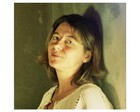
Area STEM: Scienze biomediche e biotecnologie
Competenze: biologia molecolare, biologia strutturale, donne e scienza, rappresentazione grafica della biologia cellulare, molecolare e strutturale, ricerca interdisciplinare
Parole chiave: animazione molecolare, biologia strutturale, genere e scienza, grafica 3D
Regione: Lombardia
Funzione/Ruolo
Ricercatrice presso l’Istituto di Biofisica del CNR, Milano
Percorso professionale
Dopo la laurea in Biologia, nel 1987 a Milano, si sposta per una serie di esperienze post-doc tra diversi laboratori in Italia (CNR, ICGEB di Trieste) e all’estero (Inghilterra, Dipartimento di Biochimica all’Università di Birmingham, e USA, Salk Institute, nel laboratorio di Inder Verma). Dopo 15 anni di esperienza in vari laboratori, ottiene una posizione di ricercatrice all’Istituto di Fisiologia Clinica (IFC) del CNR di Pisa. Qui dopo un breve periodo, in seguito ad un gravissimo incidente, di cui non è responsabile, è costretta a lasciare il laboratorio.
Intraprende quindi una nuova fase della carriera scientifica, dedicandosi alla Rappresentazione Biologica, con l’idea di ricreare virtualmente il mondo cellulare utilizzando le tecniche sviluppate nel campo della Computer Graphics (film, video e video giochi). Oggi la disciplina è riconosciuta come ‘Grafica Molecolare’. Nel 2006 fonda l’Unità di Visualizzazione Scientifica presso l’IFC, ottenendo i primi finanziamenti per lavorare su progetti di grafica molecolare di cui seguono dettagli, più sotto, nei Risultati scientifici. Nel 2019 si traferisce all’istituto di Biofisica del CNR di Milano.
In questo periodo, avvia rapporti di collaborazione con gruppi di informatici, bioinformatici e biologi cubani, con cui ha progetti attivi e finanziati, sempre legati alla visualizzazione, in questo caso del virus Dengue.
Oggi Monica Zoppé è considerata una pioniera dell’Art and Science of Scientific Visualization, e riconosciuta come una tra le maggiori teoriche del campo, spesso invitata a congressi ed incontri perlopiù internazionali.
In parallelo, partecipa attivamente all’associazione Donne e Scienza, in cui da alcuni anni fa parte del direttivo. E’ nell’ambito di questa attività che contribuisce in modo sostanziale all’organizzazione del congresso europeo #WeTooInScience, svoltosi a Pisa nel 2018.
Durante e dopo il periodo del Covid (2020-22) si dedica anche ai problemi connessi alle ricerche pericolose, tipicamente svolte nei laboratori di alta sicurezza (i cosiddetti BSL-3 e BSL-4) e scrive un articolo in cui esplora le opportunità e i problemi associati agli esperimenti 'Gain of Function' e alla mancanza di trasparenza su molti progetti di ricerca.
Risultati scientifici
I risultati ottenuti nell’ambito della biologia sperimentale sono documentati nelle pubblicazioni accessibili online sul sito dell’ORCID.
Per quanto riguarda i lavori nell’ambito della Grafica molecolare, il principale risultato ottenuto riguarda la trasposizione in un sistema grafico, quindi visibile, del mondo molecolare, caratterizzato non solo da grande ricchezza e varietà, ma anche dall’azione di forze specifiche e diverse: per esempio, a livello molecolare, la gravità è irrilevante, mentre conta la vibrazione termica, e le forze in campo sono calcolabili come potenziali (elettrici, lipofilici, osmotici e di flussi termodinamici), di cui non si ha percezione visiva.
In dettaglio, i principali risultati ottenuti in questo ambito possono essere sintetizzati come di seguito:
· Elaborazione delle basi teoriche e pratiche della nuova disciplina della Visualizzazione Scientifica dedicata alla narrazione della biologia cellulare e molecolare.
· Costituzione del gruppo di lavoro interdisciplinare Scientific Visualization: www.scivis.it.
· Sviluppo e rilascio di più versioni di BioBlender, uno strumento che permette di introdurre dati scientifici rigorosi in Blender, uno dei pacchetti più avanzati di Computer Graphics, e l’unico completamente open source, sviluppato per il cinema e i videogiochi.
· Produzione di una serie di brevi animazioni cellulari, tutte liberamente disponibili sul sito www.scivis.it e sui maggiori canali online, e che hanno ottenuto anche riconoscimenti importanti sia in campo scientifico che cinematografico e tecnico.
· Introduzione del concetto di un codice visivo con cui rappresentare elementi invisibili, se non sconosciuti.
· Metodo per la preparazione di modelli tangibili di proteine, creati con gomma morbida, usati sia nella ricerca sia nell'educazione.
Attività editoriali e pubblicazioni
[2022] Zoppè, M.Colors in the representation of biological structures.Journal of Integrative Bioinformatics (JIB) 19(2):20220021.
[2022] Zoppè, M. (2022)High Level Biocontainment Laboratories: Risks and Necessity for Society. F1000-ResearchPreprint F100.DOI:10.12688/f1000research.111073.1
[2021] Alderighi, T., Giorgi, D., Malomo, L., Cignoni, P. and Zoppè, M. Computational design, fabrication and evaluation of rubber protein models. Computers & Graphics 98:177.
[2019] Zoppè, Monica G. Improving Gender Diversity in Science. In #WeTooInScience - Sexual Harassment in Higher Education Institutions and Research Organizations, CNR-IRPPS e-Publishing 235–41. Rome, Italy.
[2019] Zoppè, M., Loni,T., Carlone,I., Cianchetta,S.. Making of The Dark Anim: Technical and Scientific Notes. In 2019 International Conference on Cyberworlds (CW), 45–52. Kyoto, Japan: IEEE, 2019.
[2018] Caudai, C., Salerno, E., Zoppè, M. and Tonazzini, A. ChromStruct 4: A Python Code to Estimate the Chromatin Structure from Hi-C Data. IEEE/ACM Transactions on Computational Biology and Bioinformatics.
[2017] Zoppè, M Towards a perceptive understanding of cellular biology. Nat Meth 14(7): 662-665.
[2015] Zoppè, M La sindrome dell’impostore: Non sono davvero brava come sembra. In: Scienza, genere e società. Prospettive di genere in una società che si evolve. S. Avveduto, M. L. Paciello, T. Arrigoni, C. Mangia, L. Martinelli (eds.). Roma: CNR-IRPPS e-Publishing.
[2015] Zoppè, M. and Loni, T. The Representation of Electrostatics for Biological Molecules. In: W. Rocchia and M. Spagnuolo (eds.), Computational Electrostatics for Biological Applications, Springer International, Switzerland. 215-225.
[2014] Zoppè, M. Comunicare l’invisibile. La rappresentazione visiva di concetti biofisici / Communicating the Invisible. The Visual Representation of Biophysical Concepts. In: Scrittura e immagini nel dominio della scienza / Text and Image in the sicentific realm. A cura di/Edited by: R. Falcinelli, A. Filippini, G. Liberti, L. Perondi e L. Romei. Progetto Grafico, 25:50.
[2012] Andrei, R., Callieri, M., Zini, M.F., Loni, T., Maraziti, G. and Zoppè, M. Intuitive representation of surface properties of proteins using BioBlender. BMC Bioinformatics, 13(Suppl 4):S16.
[2011] Zoppè, M. Vedere l'invisibile. Le Scienze – Italian version of Scientific American. Roma, 515: p. 64-9.
Selezione di VIDEO
[2015] The Dark Anim, (5', 23''). A description of the serotoninergic synapse, and its activity in the healthy and depressed states. With subtitles in English, French and Italian.
[2012] TSH receptor on Red Blood cells, 2011 (3', 48''). Thyrotropin is a hormone that elicits a response from the thyroid gland. However, its receptor is also found on the surface of red blood cells. After binding, the dimeric receptor splits into two subunits, each of which leaves the lipid raft to associate with other proteins of the cellular surface.
[2010] PROTEIN EXPRESSIONS - Study N.3 (5', 01''). The video, also produced in 3D, is the final one in a series of tests in the development of BioBlender. It shows several moments of cellular life, from the surface to the cytoplasm and back to cell periphery and out. Watched >70.000 times (Vimeo statistics).
Riconoscimenti e premi
Il video PROTEIN EXPRESSIONS- Study n.3 ha ottenuto diversi premi in ambiti e tempi diversi:
[2009] Il Suzanne Award della Blender Foundation, Amsterdam 2009.
[2010] Premio della giuria, presso il Melzo Film Festival, 2010.
[2011] Selezionato come finalista al DogVille-Viladecan Film Festival, 2011.
[2012] ‘Art&Science contest’ alla Società Biofisica 2012, Primo premio. Per il video NANOPLANET .
[2013] 'AutoPACK visualization contest’, Quarto classificato, il video The Challenge of HIV Research, (2', 45'').
[2018] Partecipazione su invito allo Shonan Meeting su ‘Web Molecular Graphics: Emerging Technologies & Standards’, svoltosi in Giappone in Dicembre 2018.
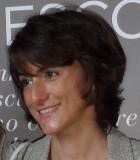
Area STEM: Scienze biomediche e biotecnologie
Competenze: etologia, neuroscienze comportamentali
Parole chiave: comportamenti collettivi antipredatori, comportamento animale, comportamento umano, gioco d'azzardo, modelli animali di disturbi neurocomportamentali umani, predazione, propensione al rischio, ricerca di base, ricerca preclinica
Regione: Lazio
Funzione/Ruolo
Ricercatrice scientifica presso il Centro di Riferimento per le Scienze Comportamentali e la Salute Mentale dell'Istituto Superiore di Sanità (ISS), Roma
Percorso professionale
Dopo la laurea in Biologia Ecologica all'Università degli Studi di Parma nel 2005, prosegue gli studi conseguendo nel 2008 una laurea specialistica in Ecologia con indirizzo Comportamento Animale, presso la stessa università. Nel 2013 ottiene il dottorato di ricerca in Etologia, Ecologia Animale e Antropologia all'Università degli Studi di Firenze. Nel 2014 ha un contratto di ricerca a progetto della durata di 14 mesi presso l'Ospedale Pediatrico Bambino Gesù (RM), area di ricerca "Malattie multifattoriali e fenotipi complessi", l'anno successivo vince una borsa di studio della Fondazione di Noopolis per lavorare presso il Reparto di Neuroscienze comportamentali del Dipartimento di Biologia cellulare e Neuroscienze dell'Istituto Superiore di Sanità, lo stesso Dipartimento la ospita anche l'anno successivo. Nel 2016 vince il Premio "L'Oréal-UNESCO per le Donne e la Scienza" grazie al quale ha svolto attività di ricerca presso l'Istituto di Scienze e Tecnologie della Cognizione del CNR. Oggi è Ricercatrice presso il Centro di Riferimento per le Scienze Comportamentali e la Salute Mentale dell'Istituto Superiore di Sanità (ISS).
Risultati scientifici
Gli interessi di ricerca di Francesca Zoratto partono dall'Etologia, lo studio del comportamento animale, per arrivare alla comprensione di quello umano. Il suo ultimo progetto di ricerca presso l'Unità di Primatologia Cognitiva dell'Istituto di Scienze e Tecnologie della Cognizione (ISTC) del CNR verifica in due diverse specie animali, scimmie e ratti, la modulazione sociale della propensione al rischio. Lo scopo principale di questo e di altri suoi studi è applicare le scoperte in campo etologico al comportamento umano, nello specifico al mondo del gioco d'azzardo patologico. La propensione al rischio infatti non appartiene soltanto agli esseri umani, e lo studio del comportamento animale nelle medesime condizioni può aiutare a comprendere meglio i meccanismi psico-biologici sui quali si fondano le nostre dipendenze. Aumentando le conoscenze in campo comportamentale umano si intendono fornire maggiori elementi di comprensione alla comunità medica, ma anche elaborare proposte per la classe politica perché studi strategie più efficaci nella prevenzione e nel trattamento del gioco d'azzardo patologico.
Attività editoriali e pubblicazioni
Francesca Zoratto è autrice di numerosi articoli in riviste scientifiche internazionali peer-reviewed scientific journals.
Di seguito, una selezione:
(2018) Zoratto F., Sbriccoli M., Martinelli A., Glennon J.C., Macrì S., Laviola G. Intranasal oxytocin administration promotes emotional contagion and reduces aggression in a mouse model of callousness. Neuropharmacology, 143:250-267
(2018) Zoratto F., Oddi G., Gori E., Micucci A., De Petrillo F., Paglieri F., Adriani W., Laviola G, Addessi E. 2018. Social modulation of risky decision-making in rats (Rattus norvegicus) and tufted capuchin monkeys (Sapajus spp.). Behavioural Brain Research, 347:37-48.
(2018) Zoratto F., Cordeschi G., Grignani G., Bonanni R., Alleva E., Nascetti G., Mather J.A., Carere C. 2018. Variability in the “stereotyped” prey capture sequence of male cuttlefish (Sepia officinalis) could relate to personality differences. Animal Cognition, 21(6):773-785.
(2017) Zoratto F., Romano E., Pascale E., Pucci M., Falconi A., Dell’Osso B., Maccarrone M., Laviola G., D’Addario C., Adriani W. 2017. Down-regulation of serotonin and dopamine transporter genes in individual rats expressing a gambling-prone profile: a possible role for epigenetic mechanisms. Neuroscience, 340:101-116.
(2015) Canese R., Zoratto F., Altabella L., Porcari P., Mercurio L., De Pasquale F., Butti E., Martino G., Lacivita E., Leopoldo M., Laviola G., Adriani W. 2015. Persistent modification of forebrain networks and metabolism in rats following adolescent exposure to a 5-HT7 receptor agonist. Psychopharmacology, 232(1):75-89.
(2013) Zoratto F., Laviola G., Adriani W. 2013. Gambling proneness in rats during the transition from adolescence to young adulthood: a home-cage method. Neuropharmacology, 67:444-454.
(2012) Koot S., Zoratto F., Cassano T., Colangeli R., Laviola G., van den Bos R., Adriani W. 2012. Compromised decision-making and increased gambling proneness following dietary serotonin depletion in rats. Neuropharmacology, 62(4):1640-1650.
(2010) Zoratto F., Carere C., Chiarotti F., Santucci D., Alleva E. 2010. Aerial hunting behaviour and predation success by peregrine falcons Falco peregrinus on starling flocks Sturnus vulgaris. Journal of Avian Biology, 41(4):427-433.
Riconoscimenti e premi
Francesca Zoratto ha ricevuto numerosi premi e riconoscimenti per la sua carriera accademica, come borse di studio e assegni di ricerca. Nel 2016 vince il Premio "L'Oréal-UNESCO per le Donne e la Scienza 2016" nell'ambito del Programma "For Women in Science" della "Fondation L'Oréal" in collaborazione con L'Oréal Italia e la Commissione Nazionale Italiana per l'UNESCO.



